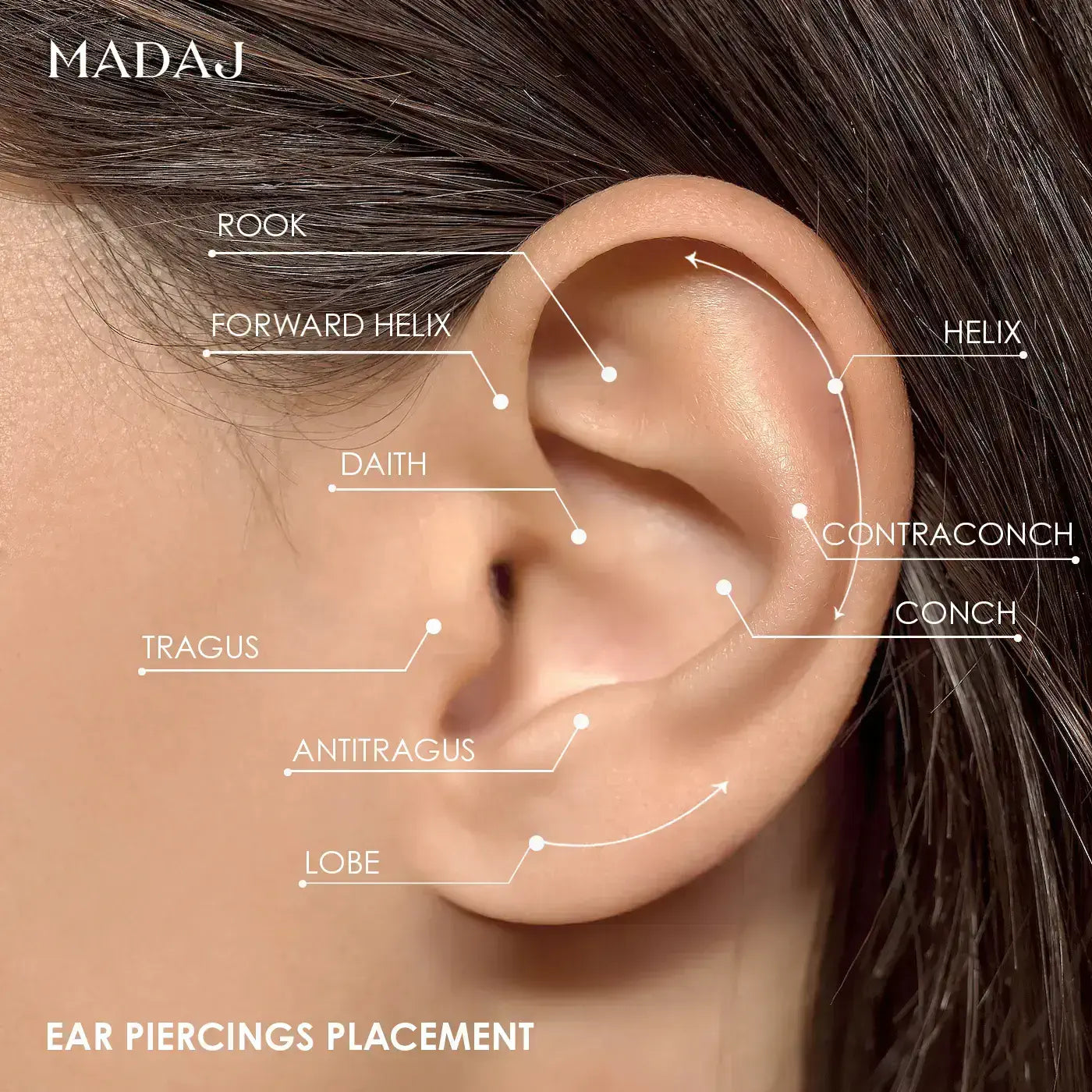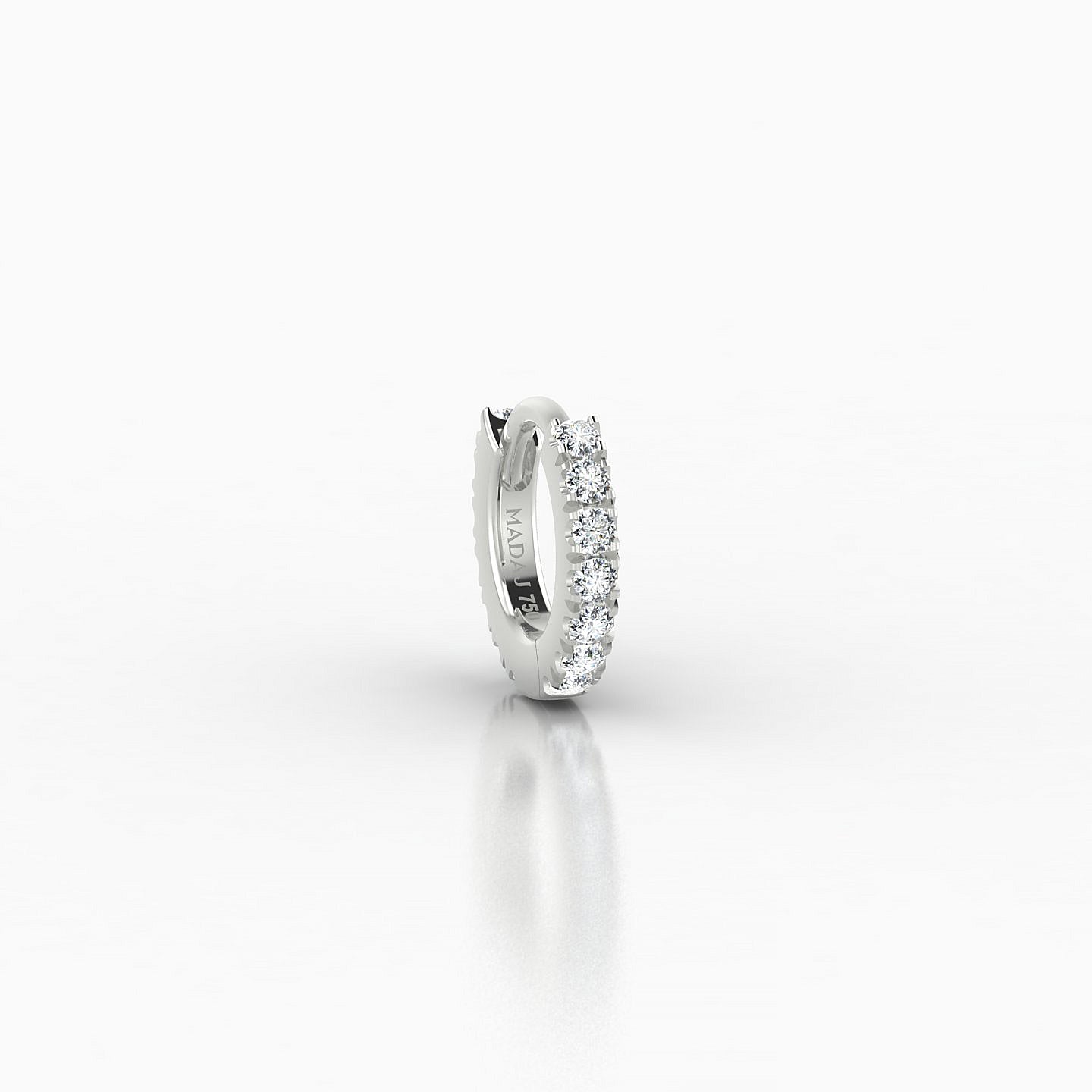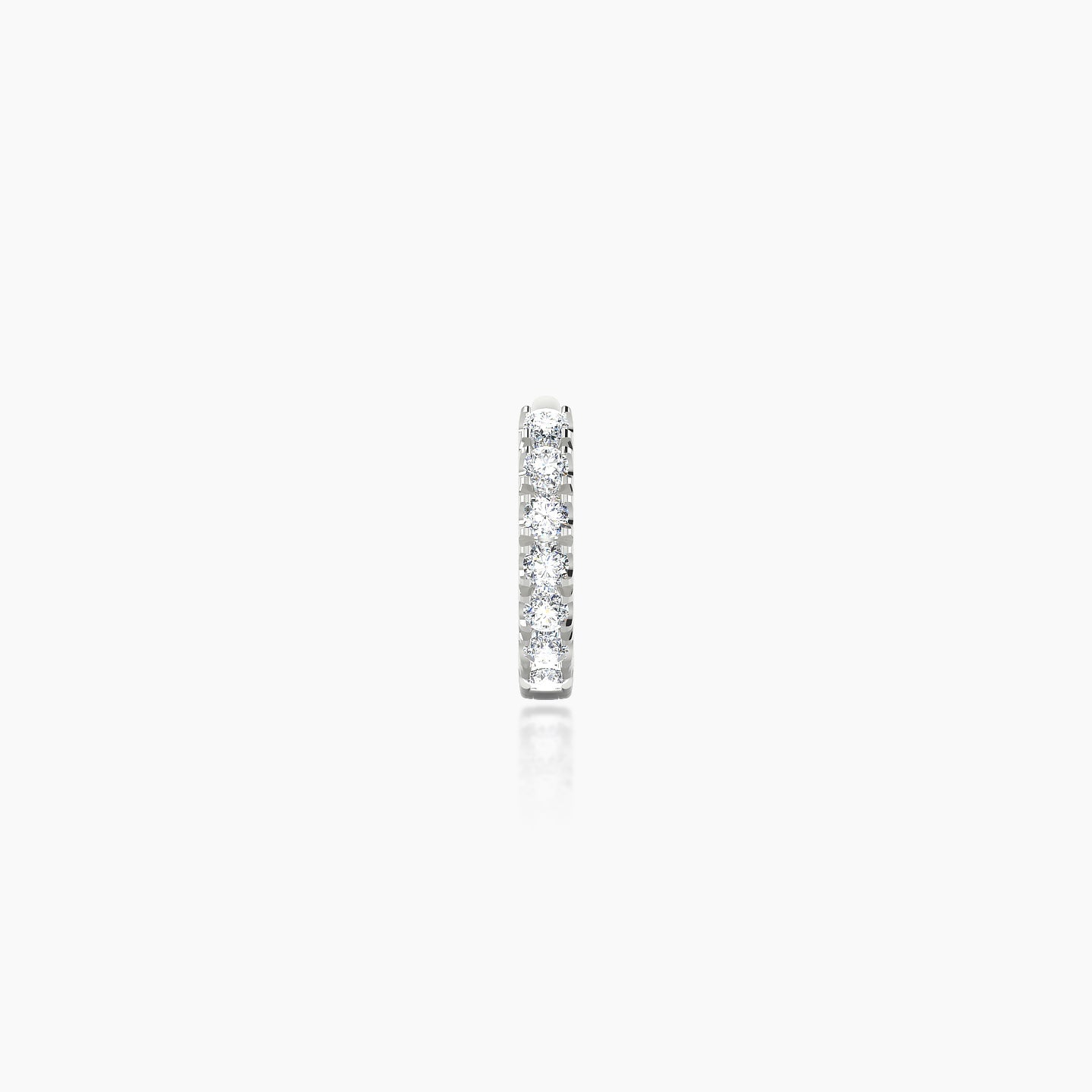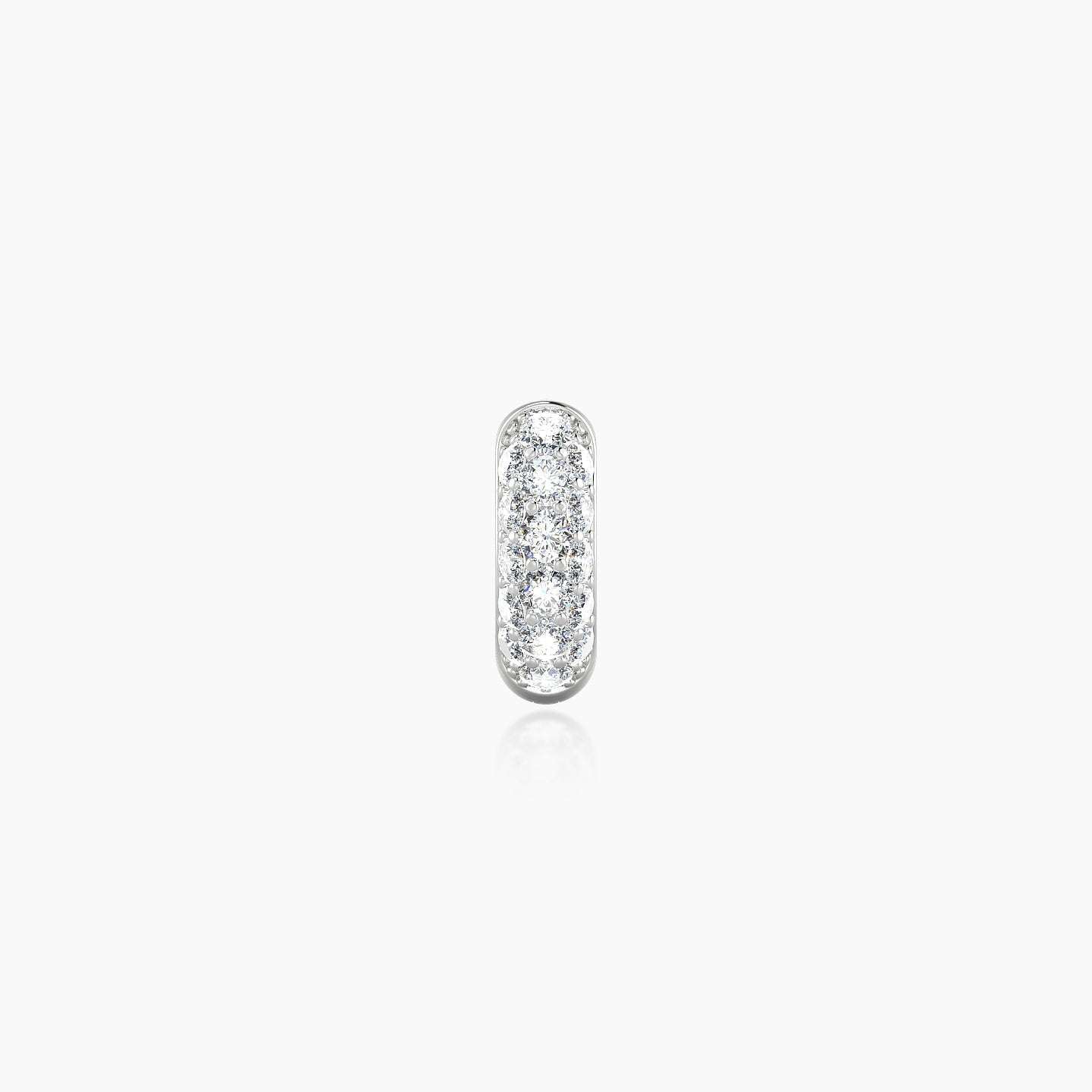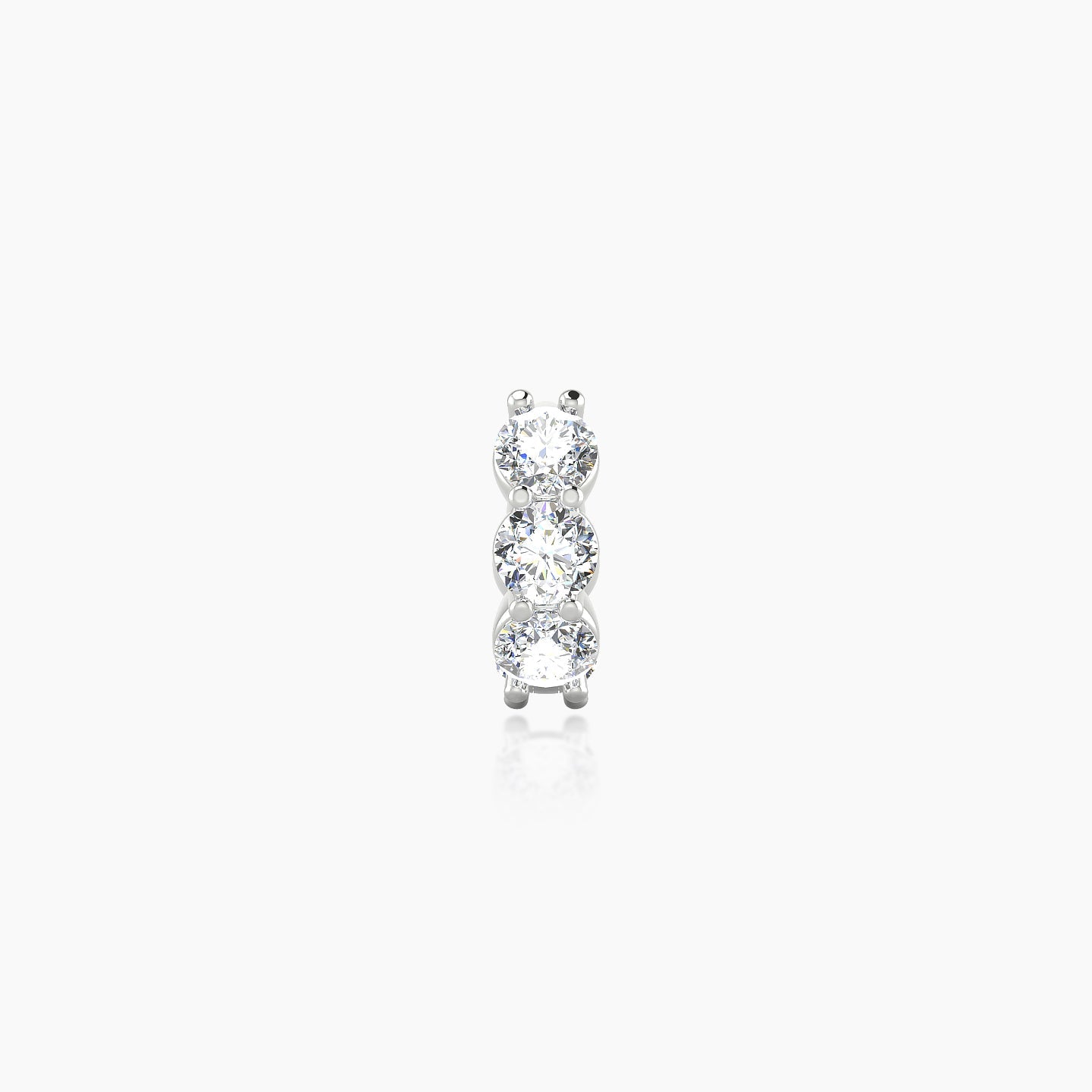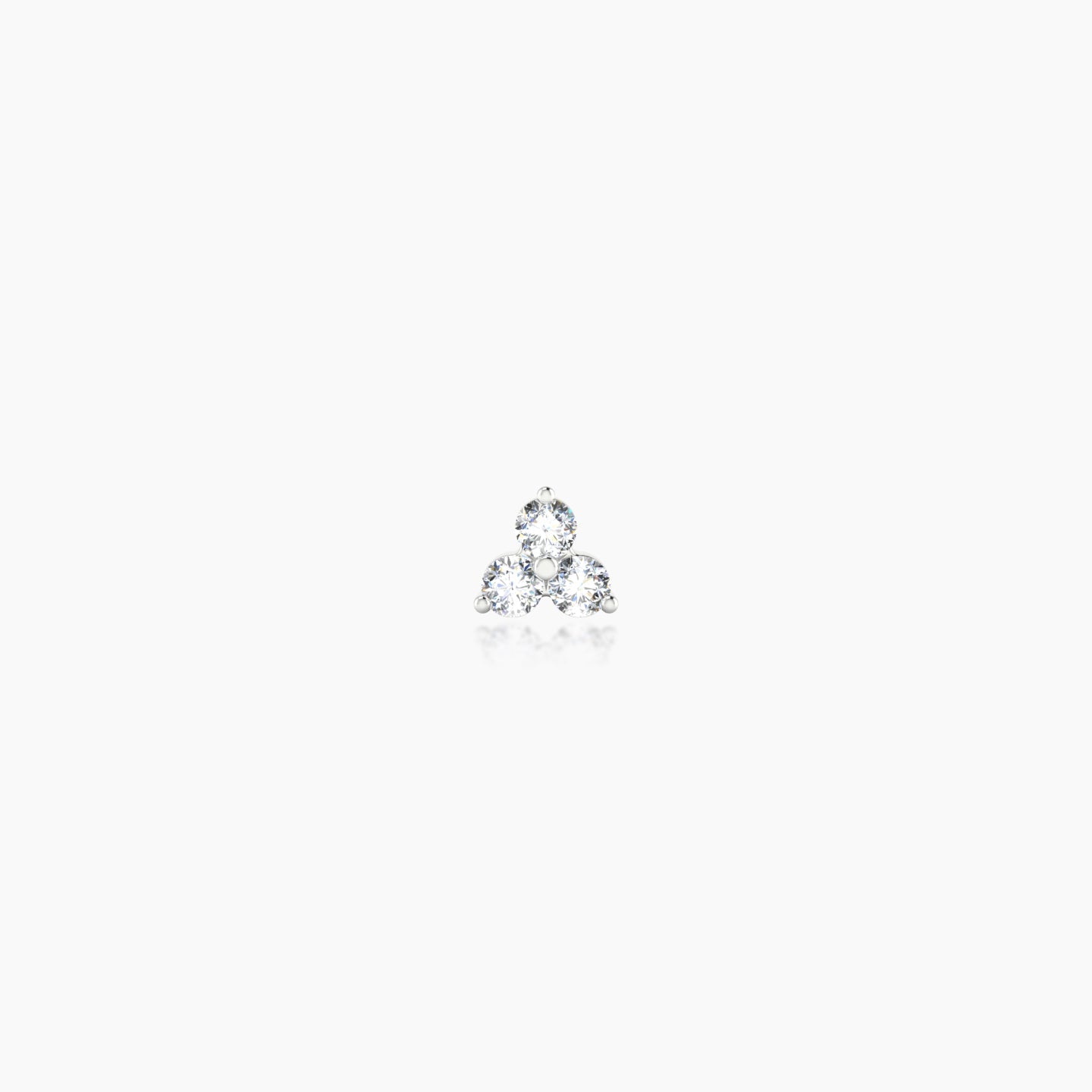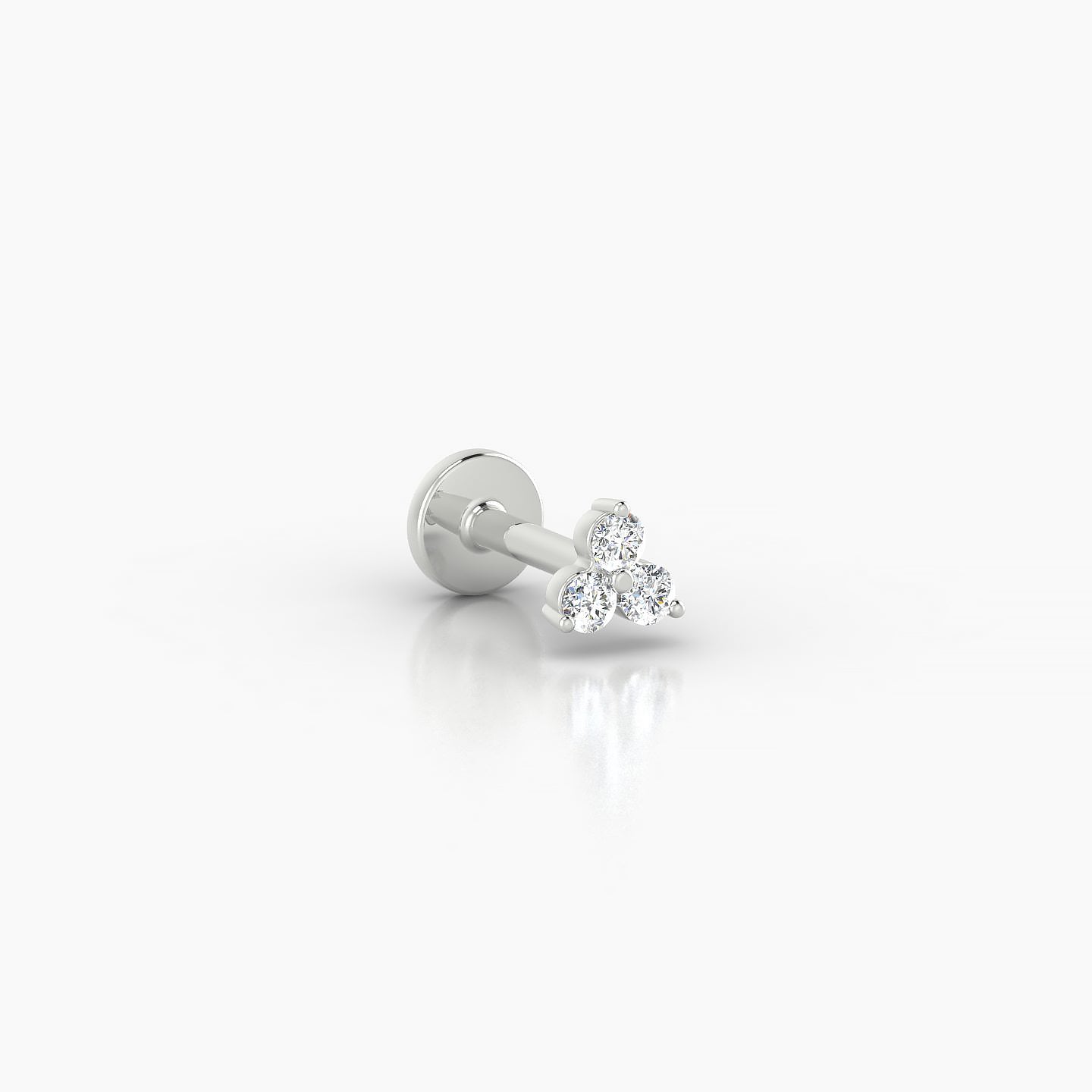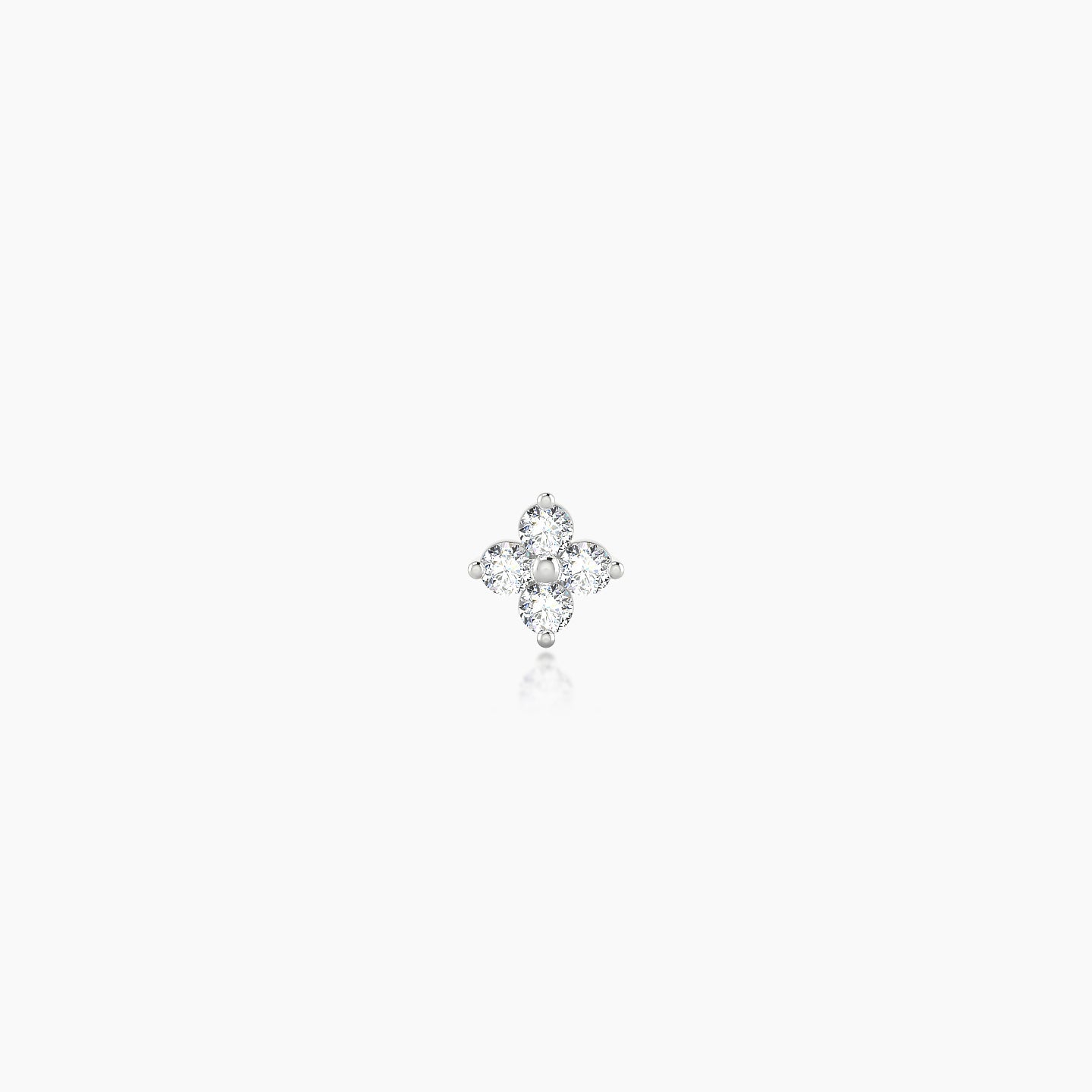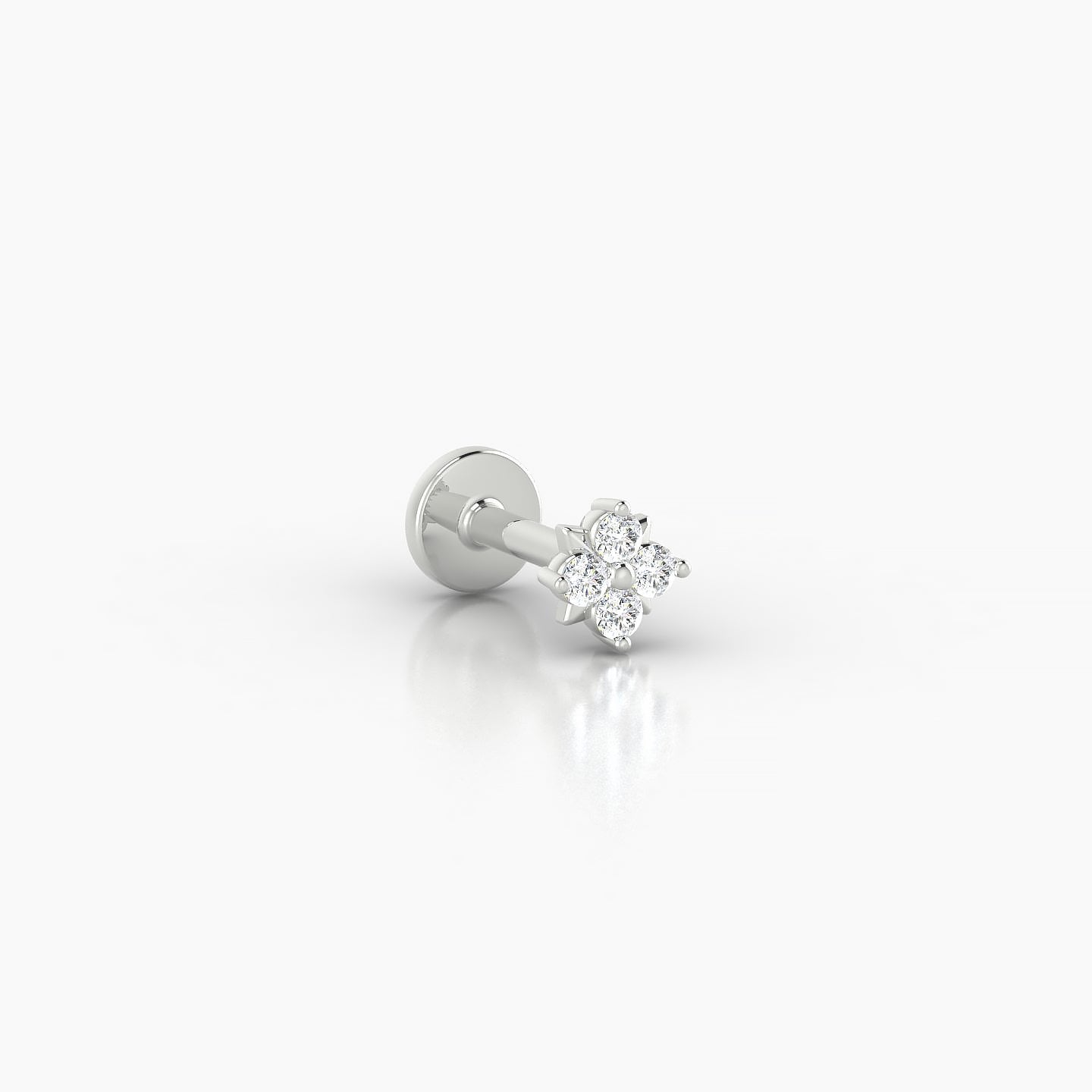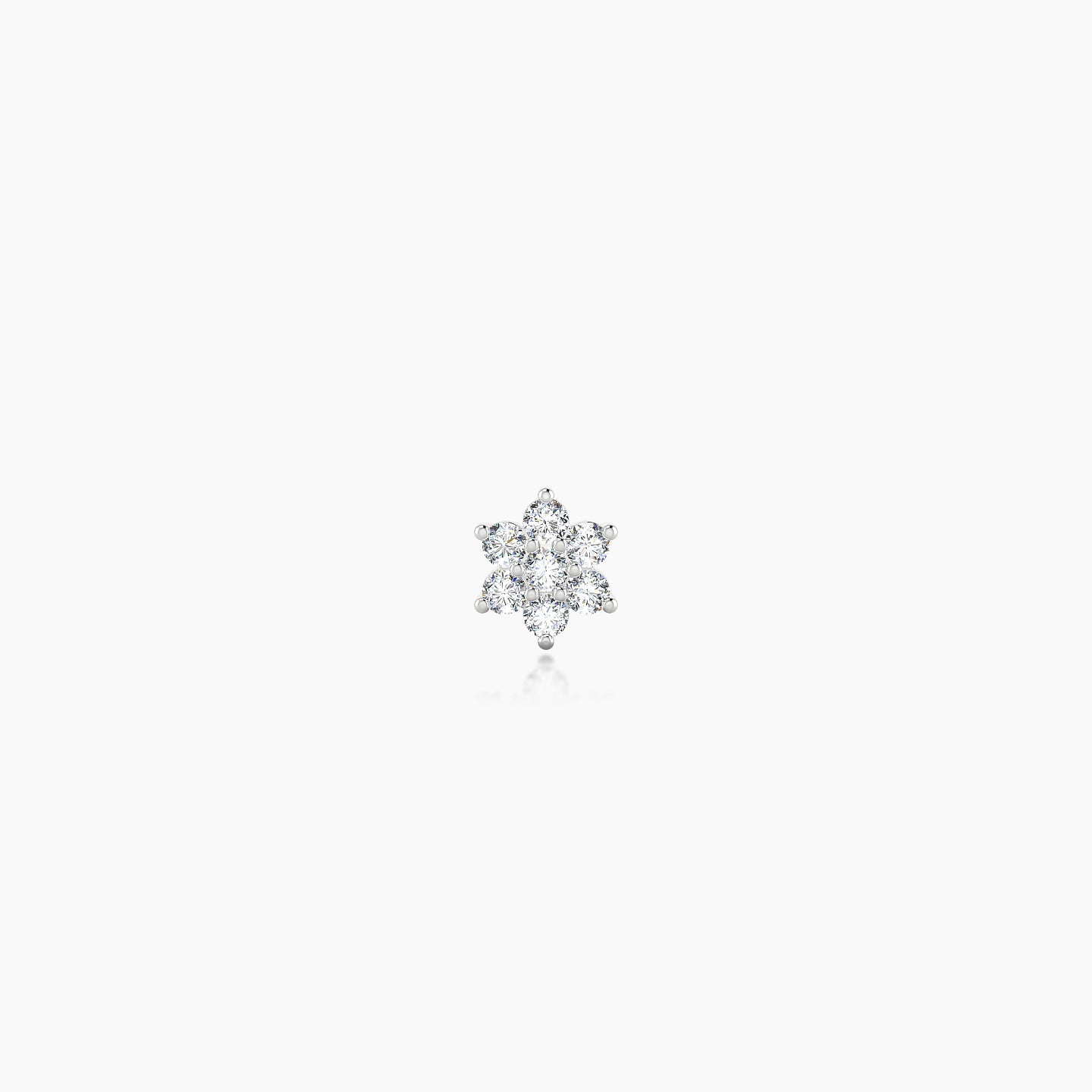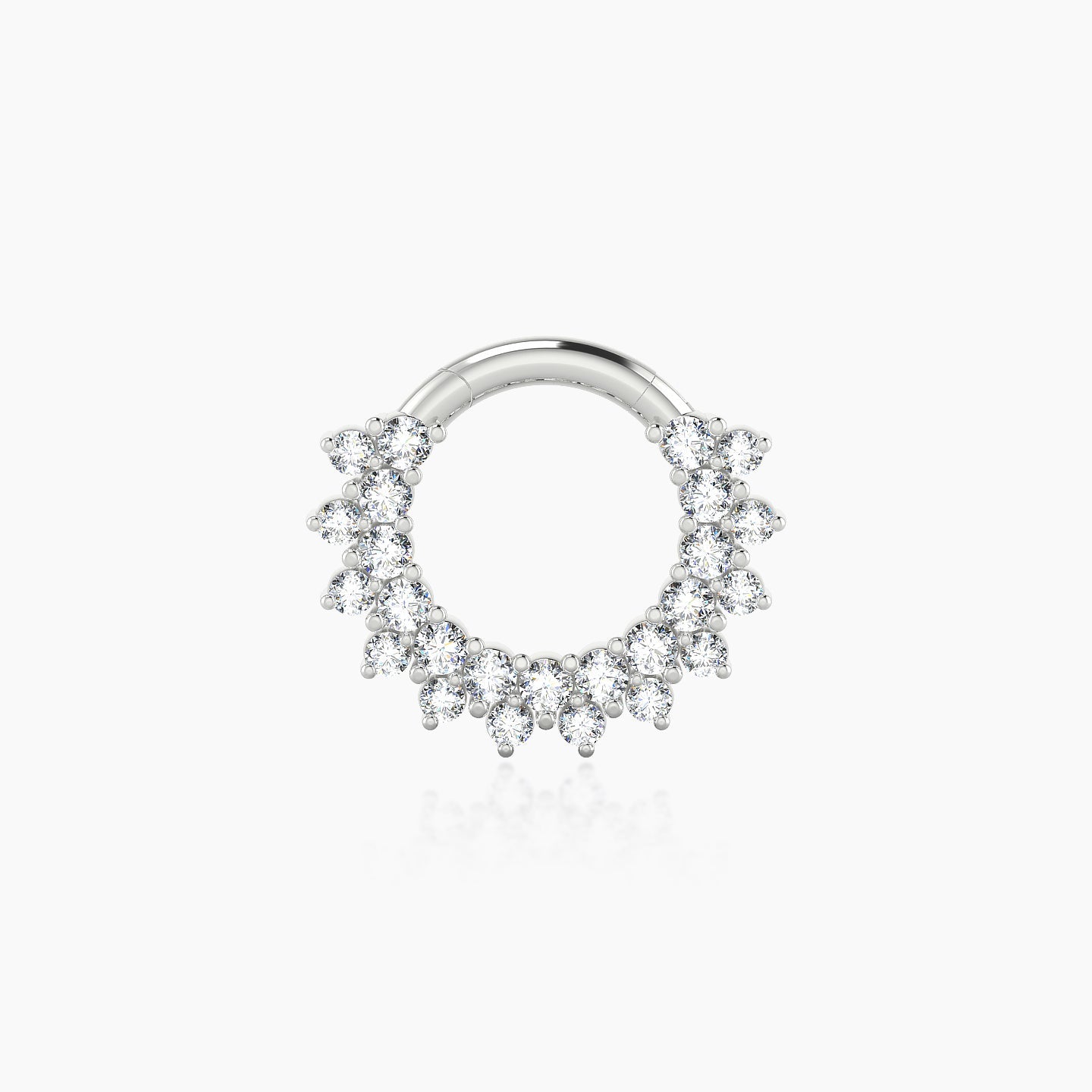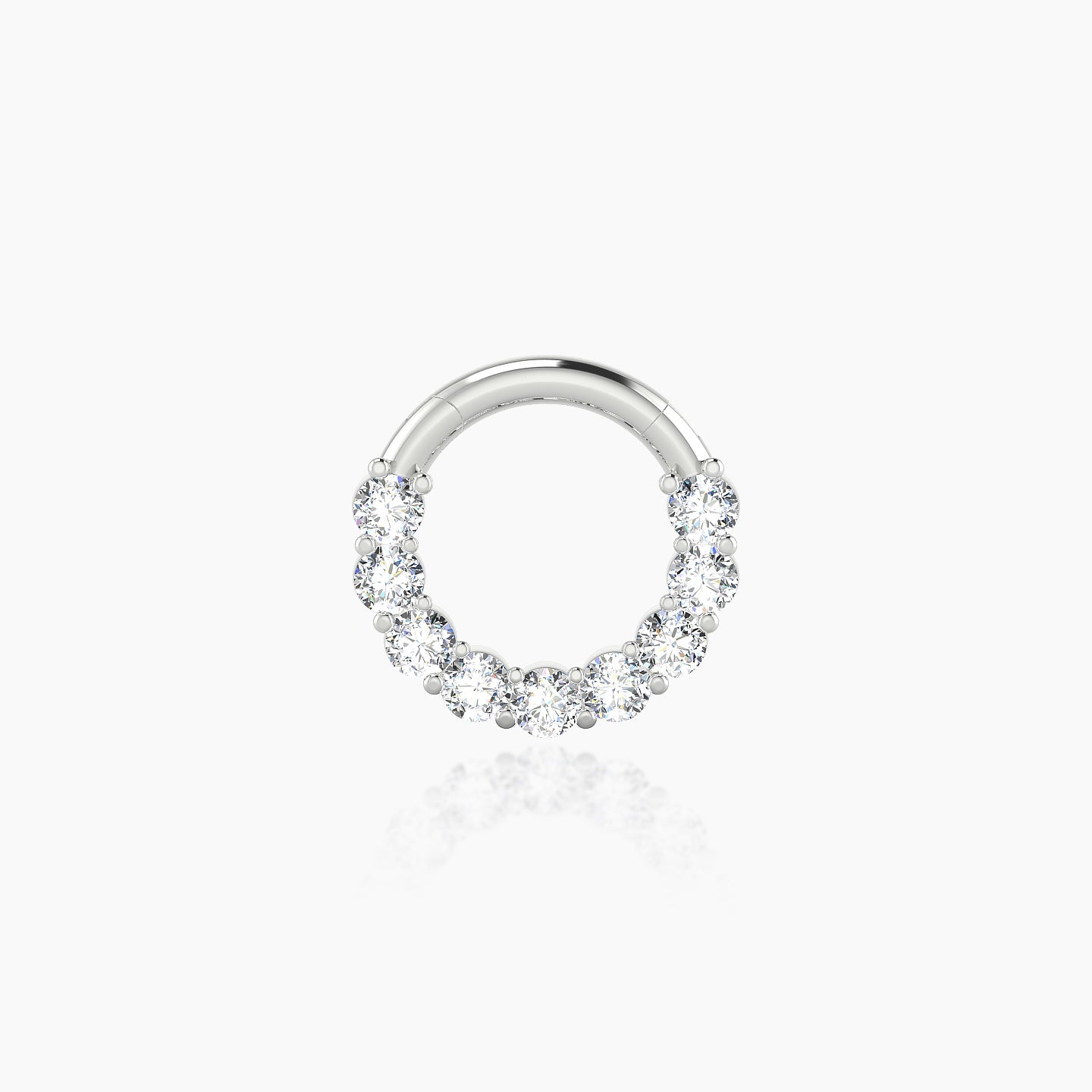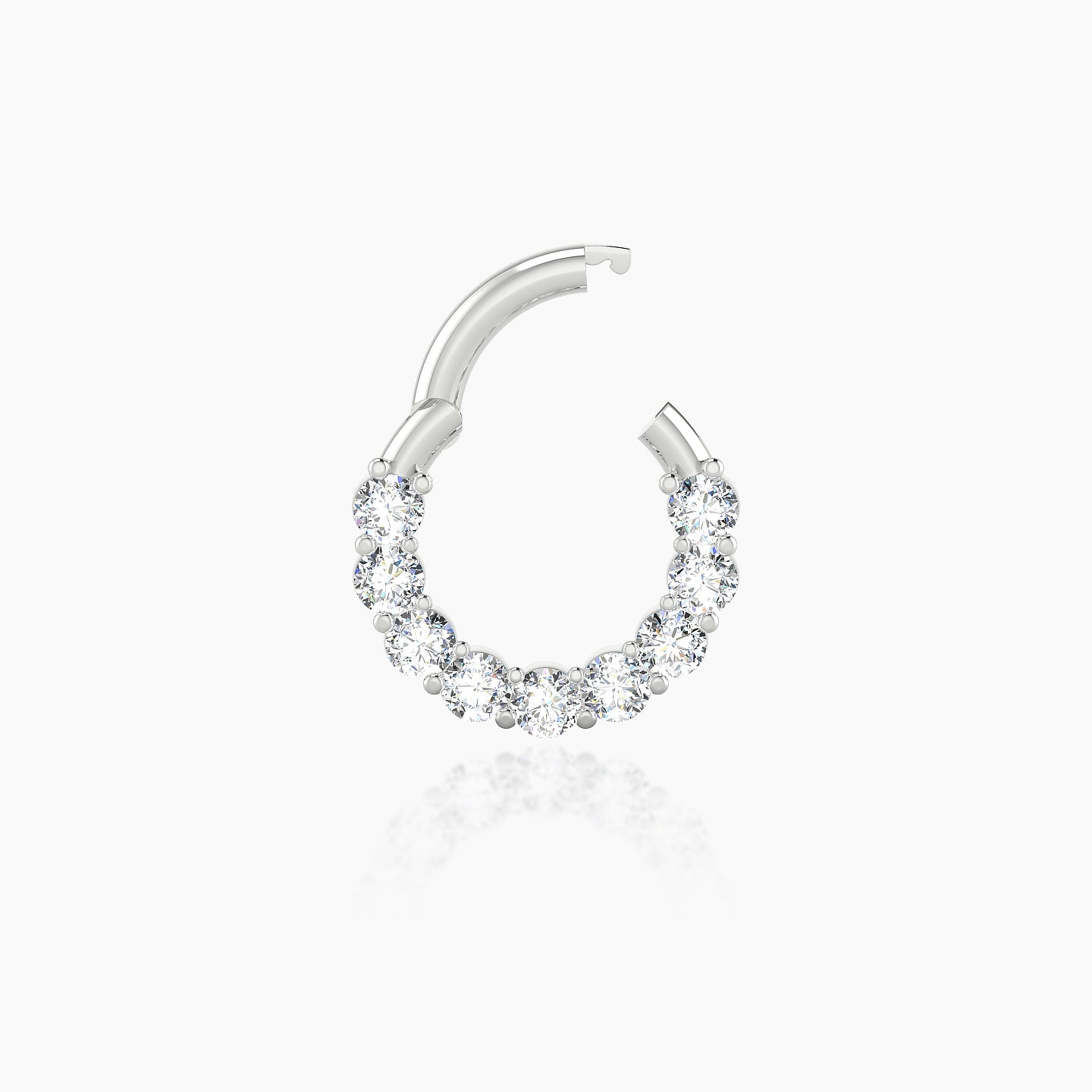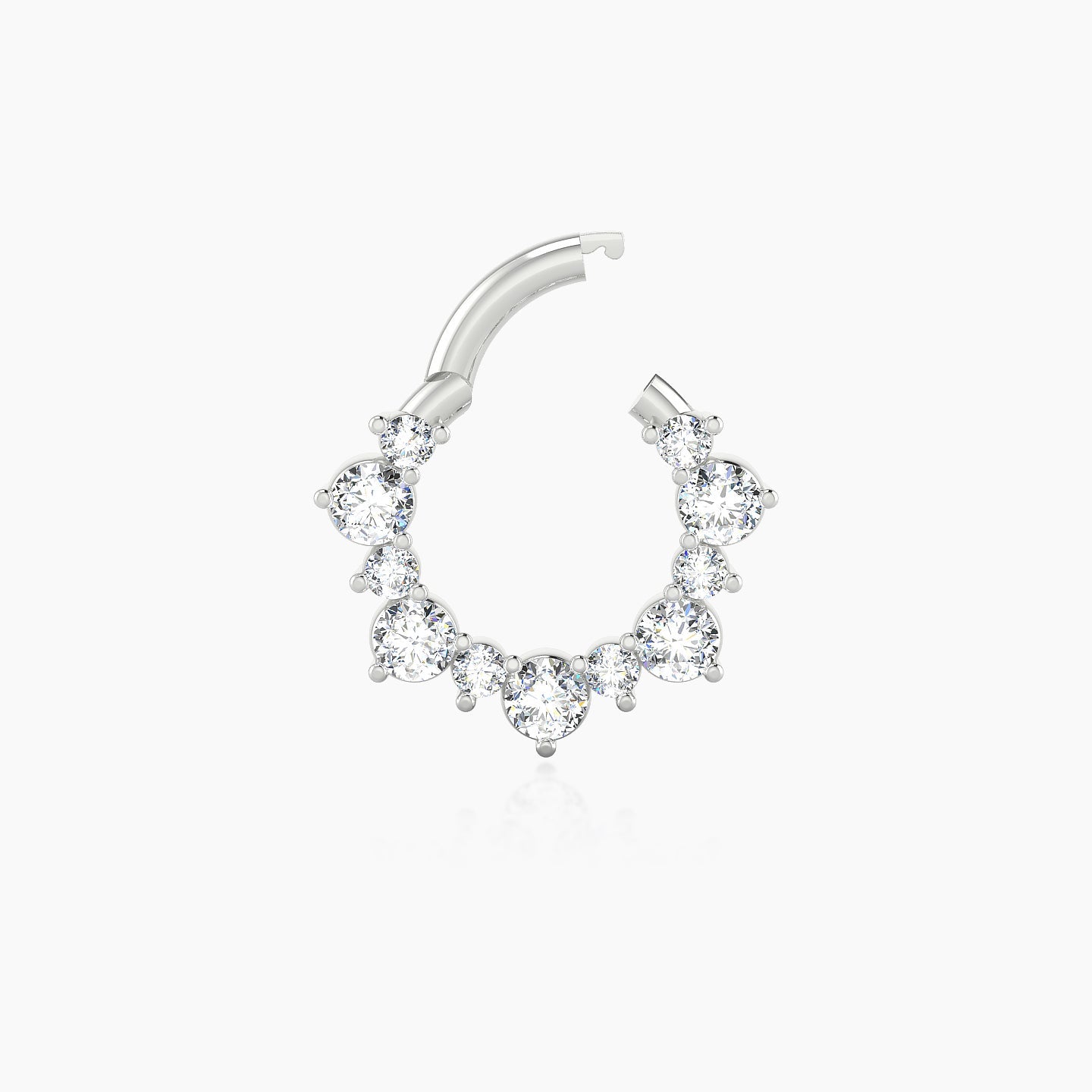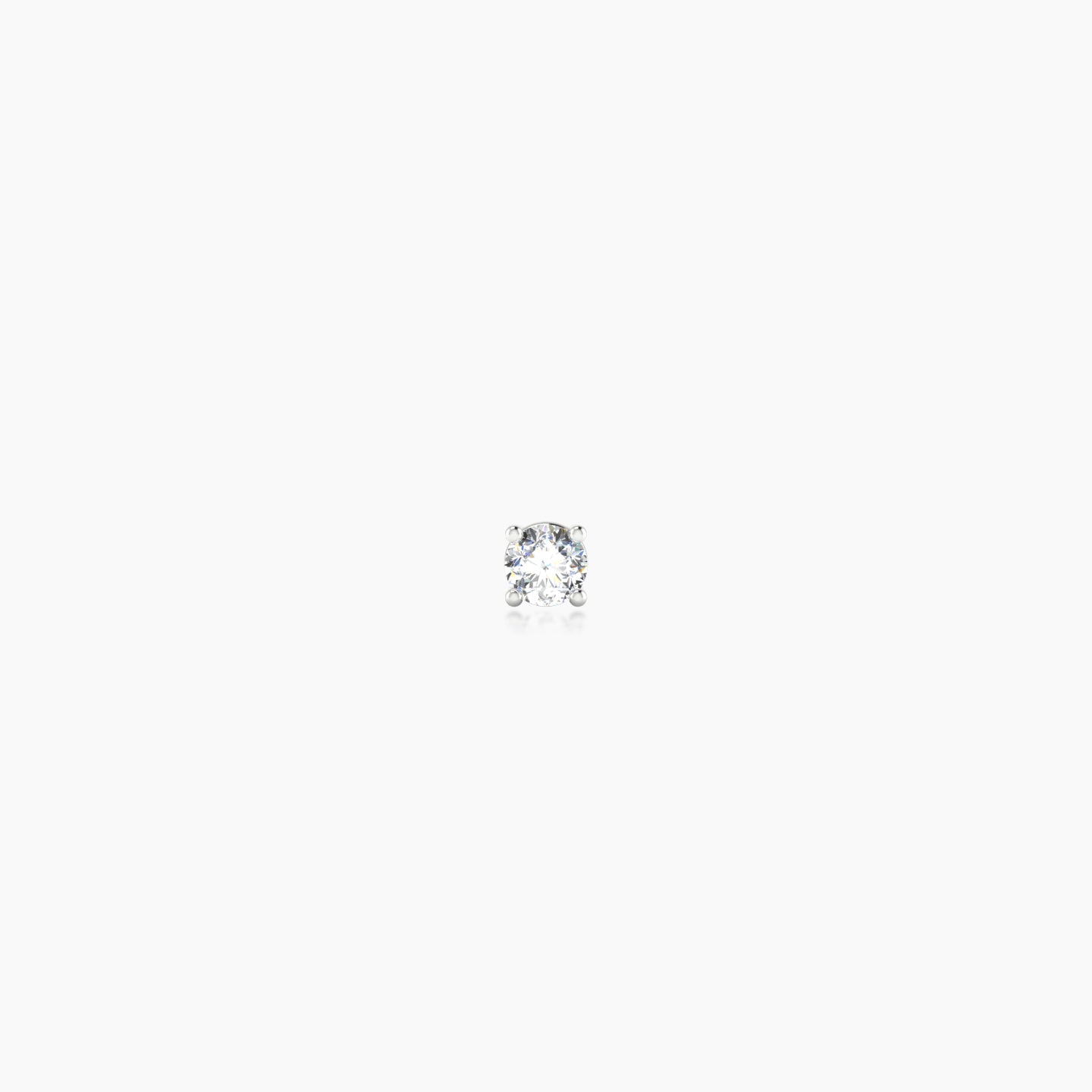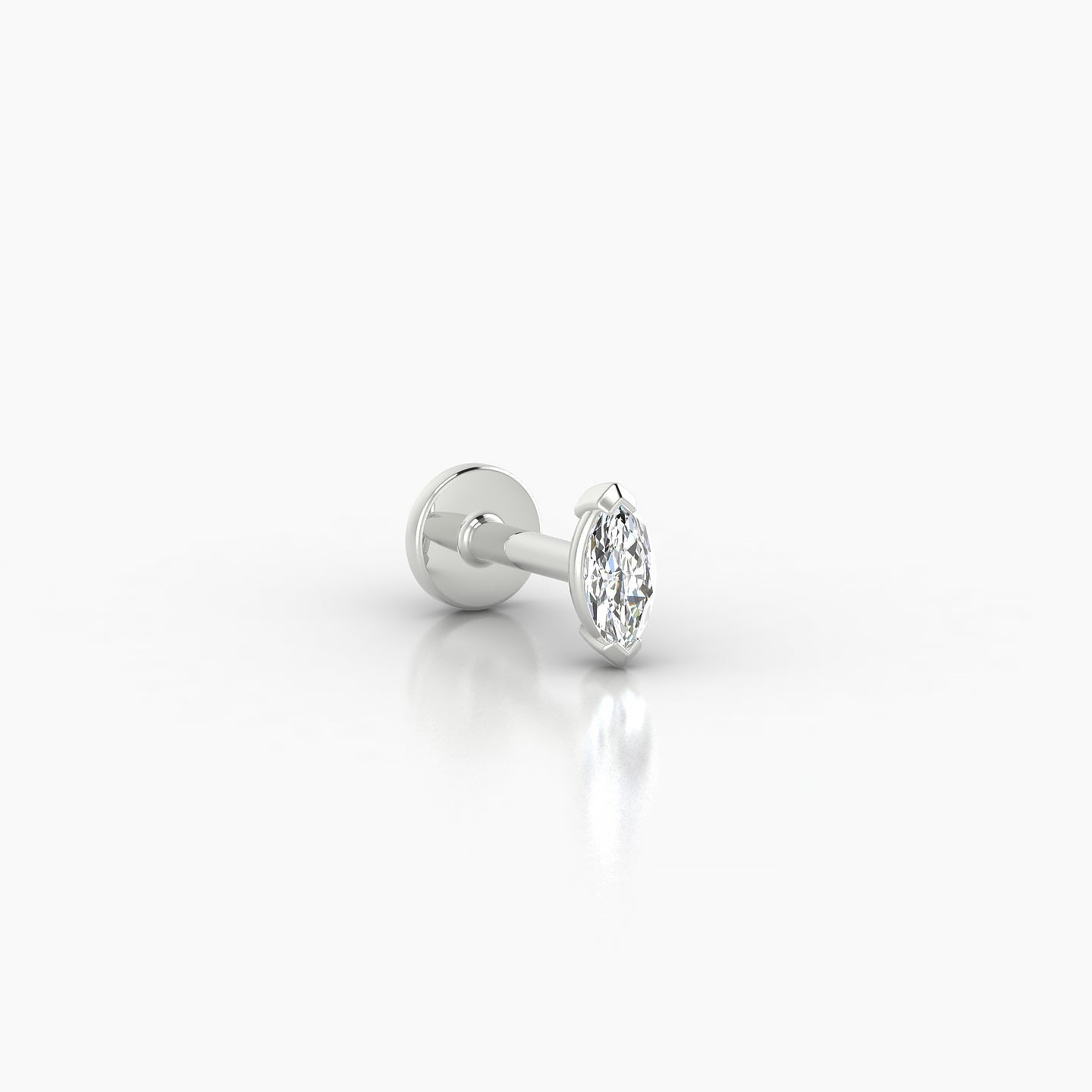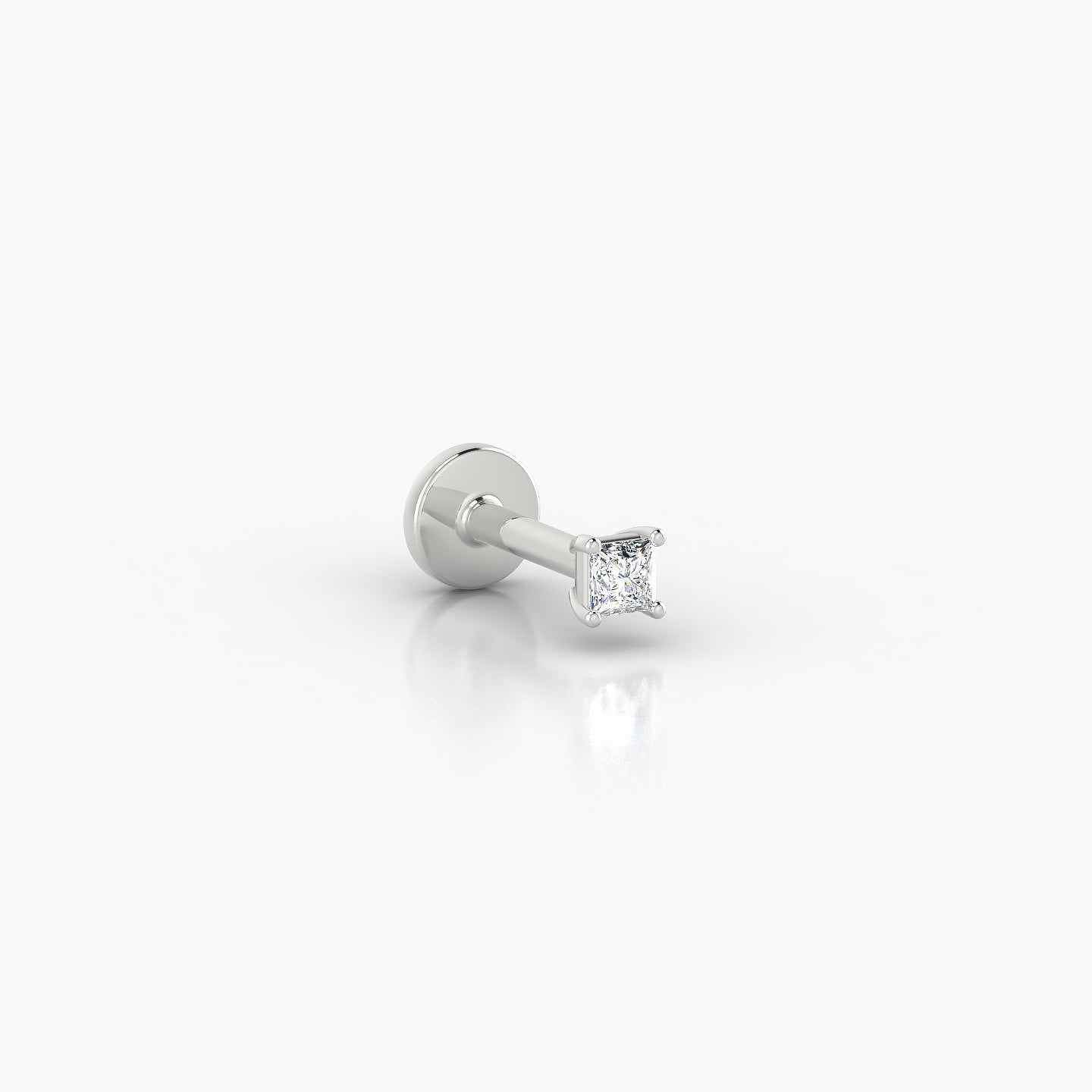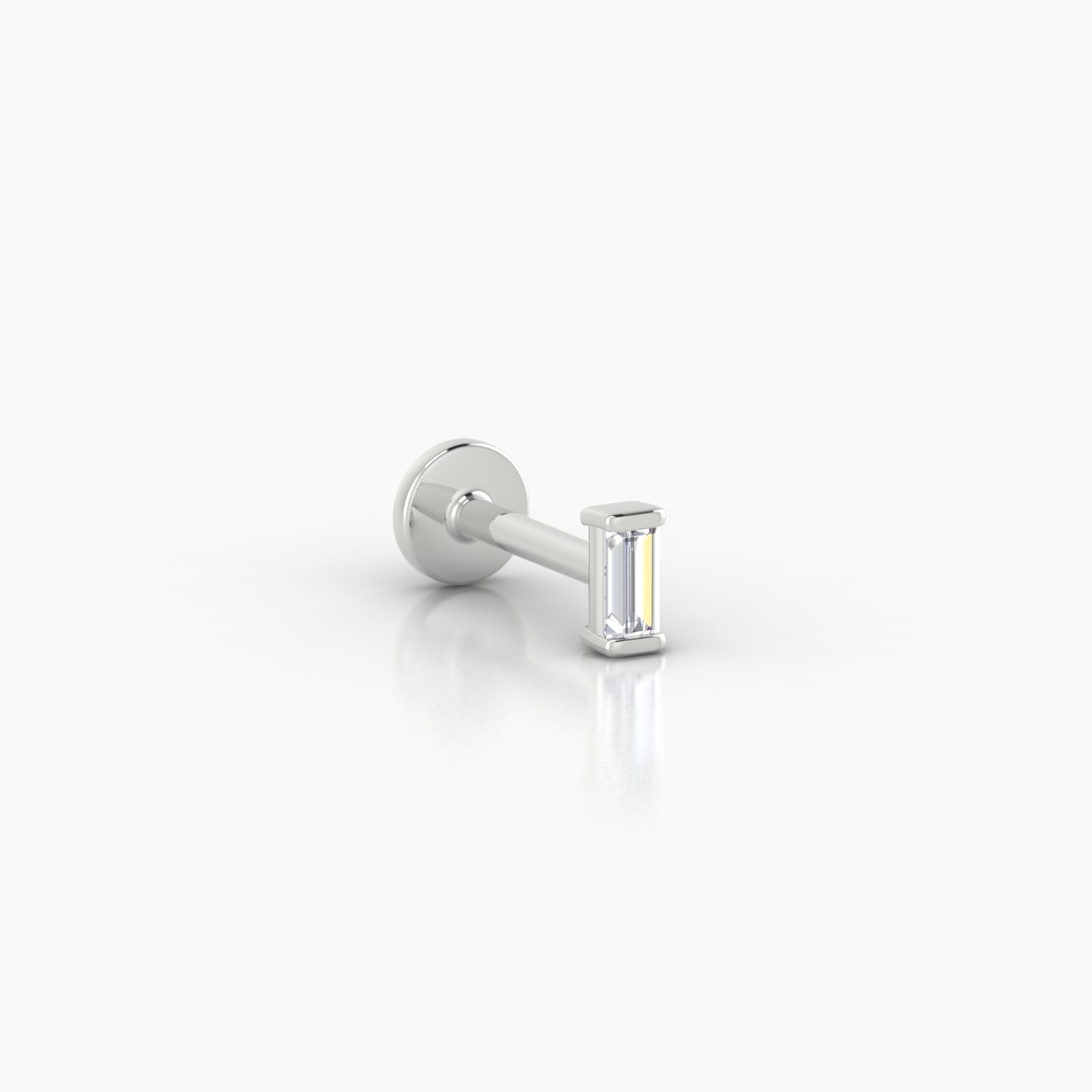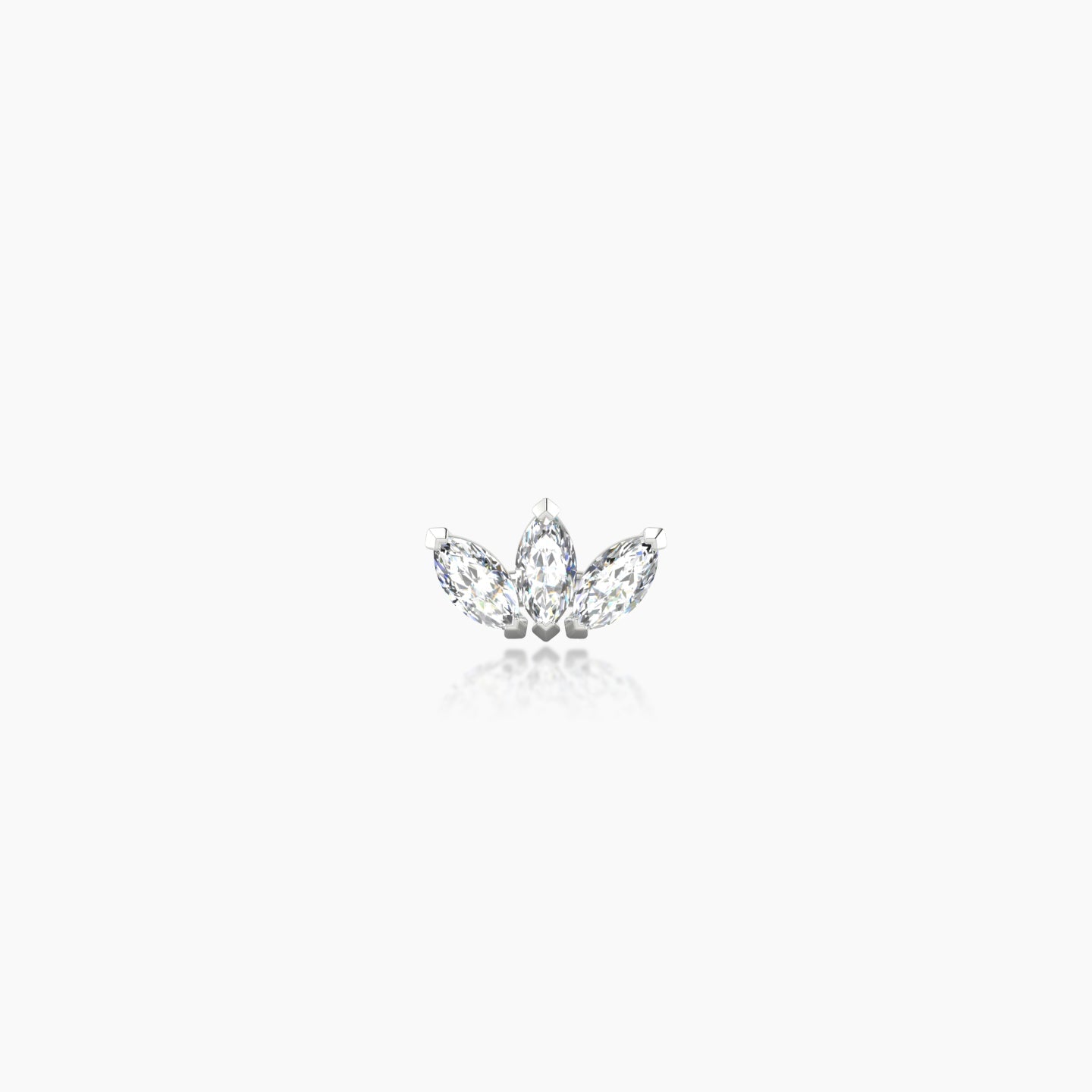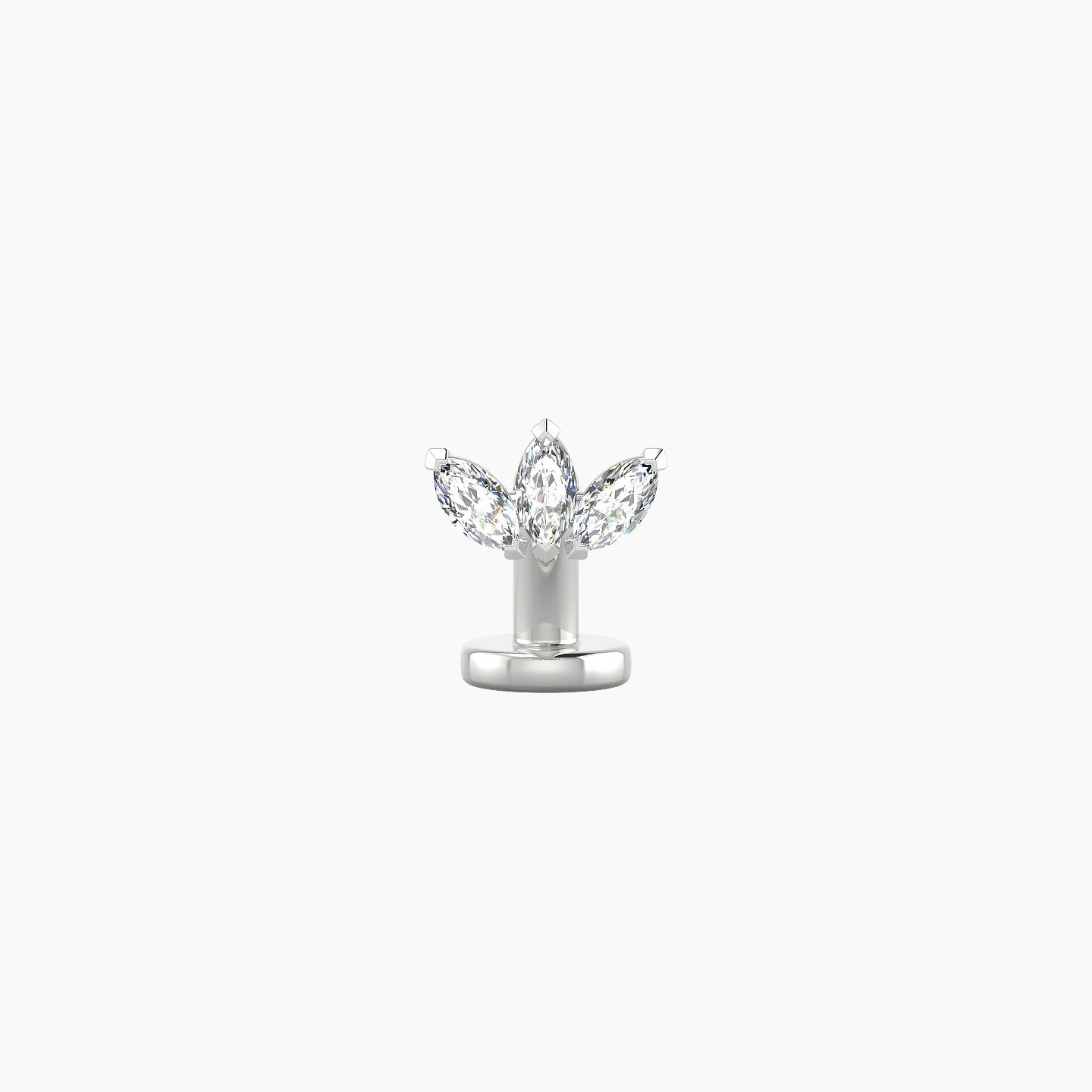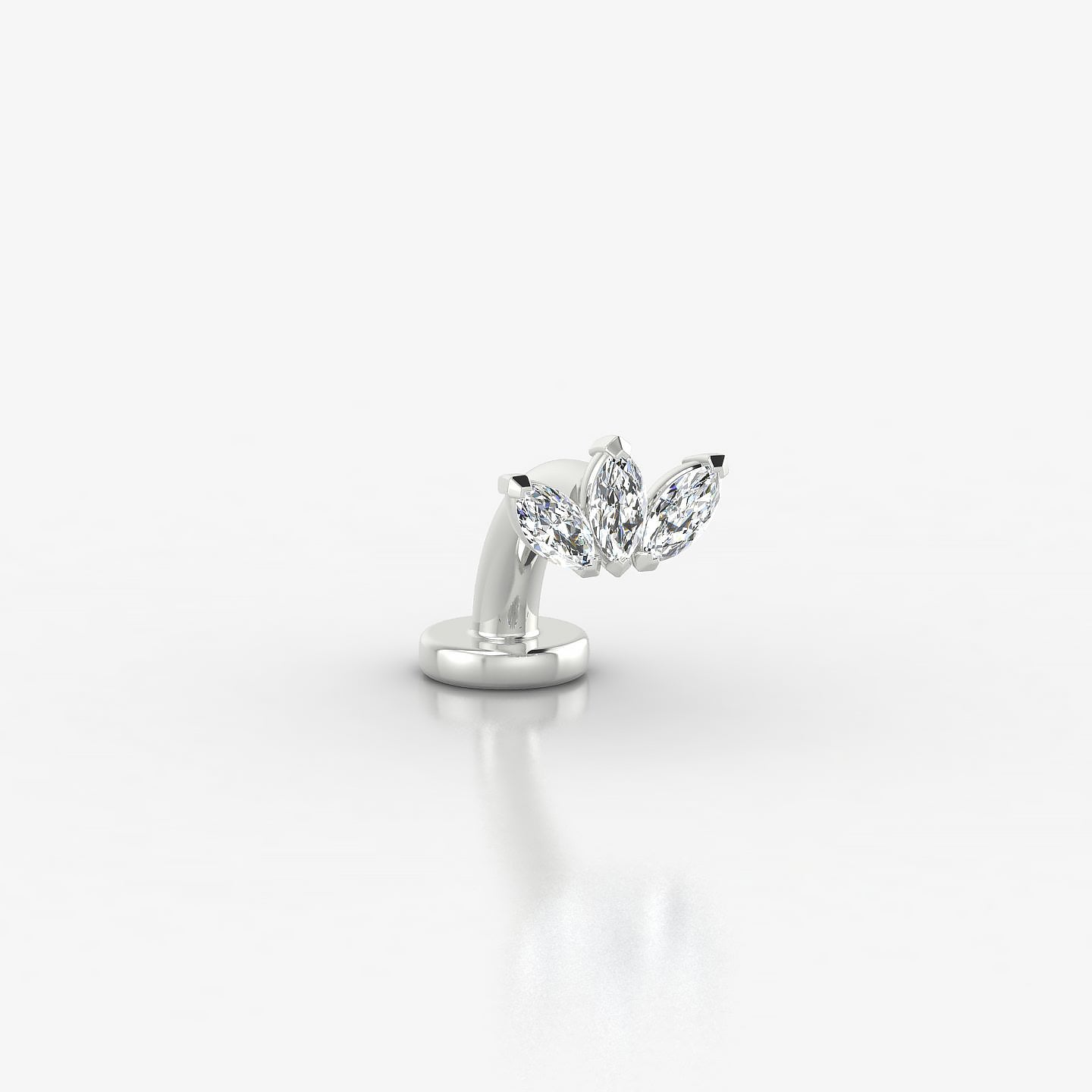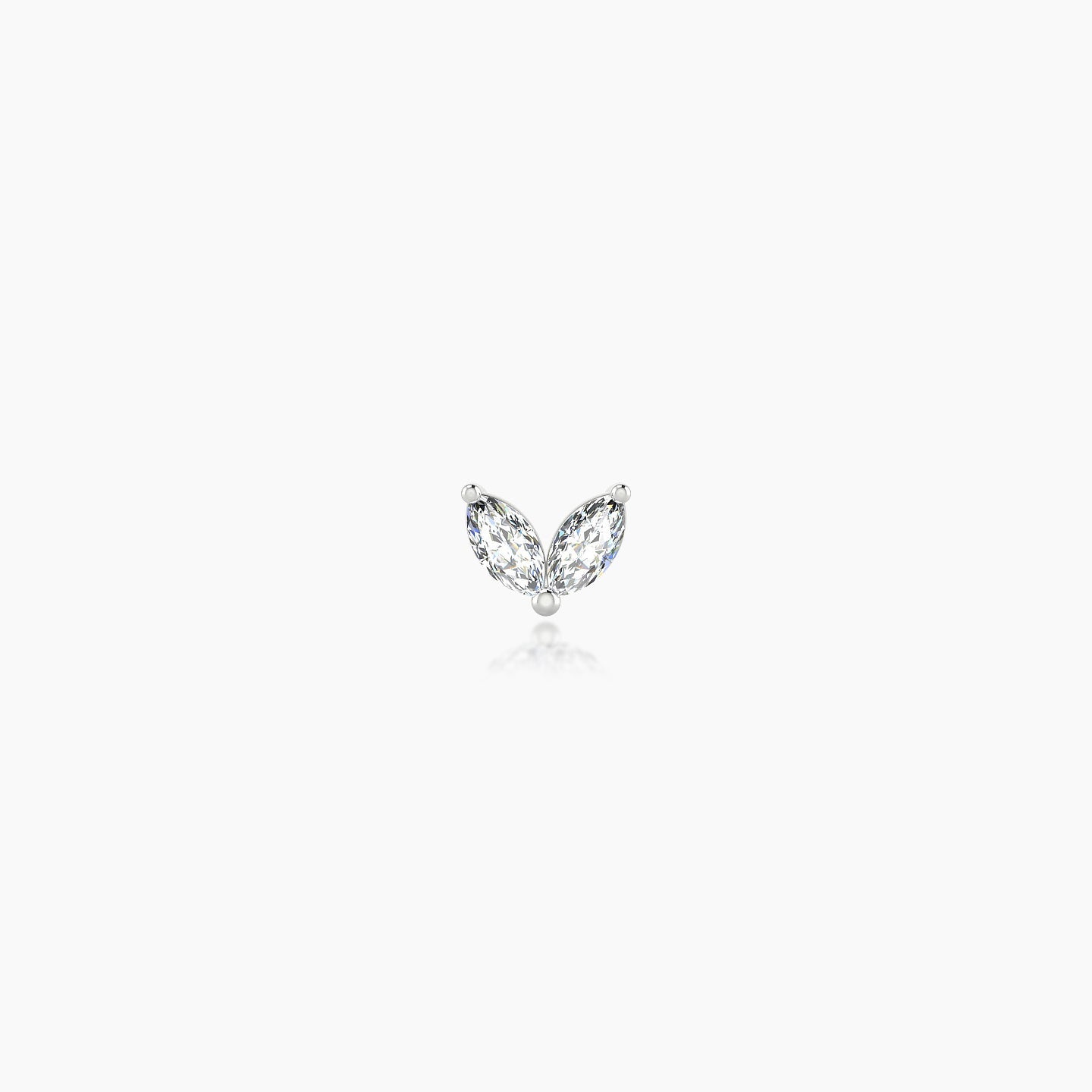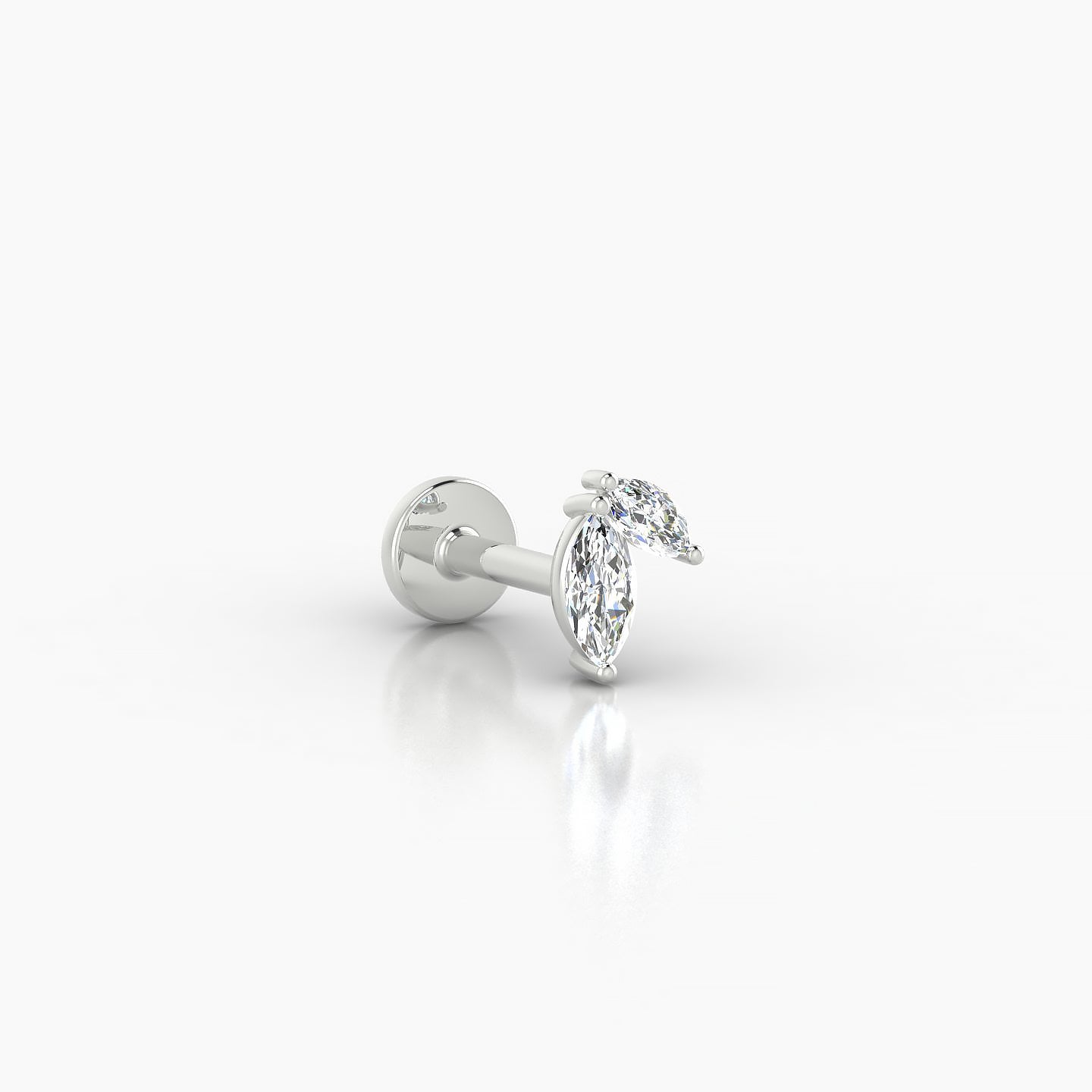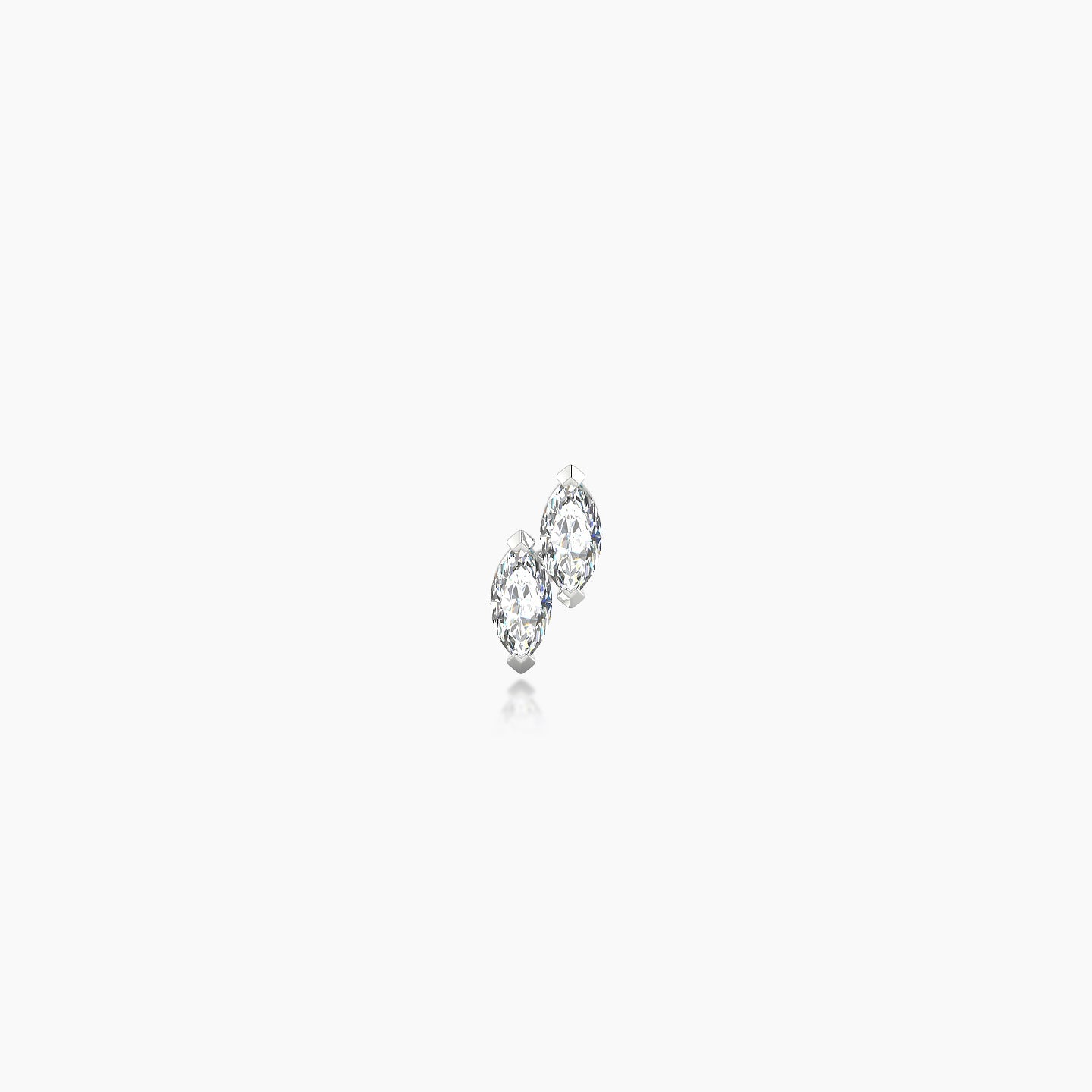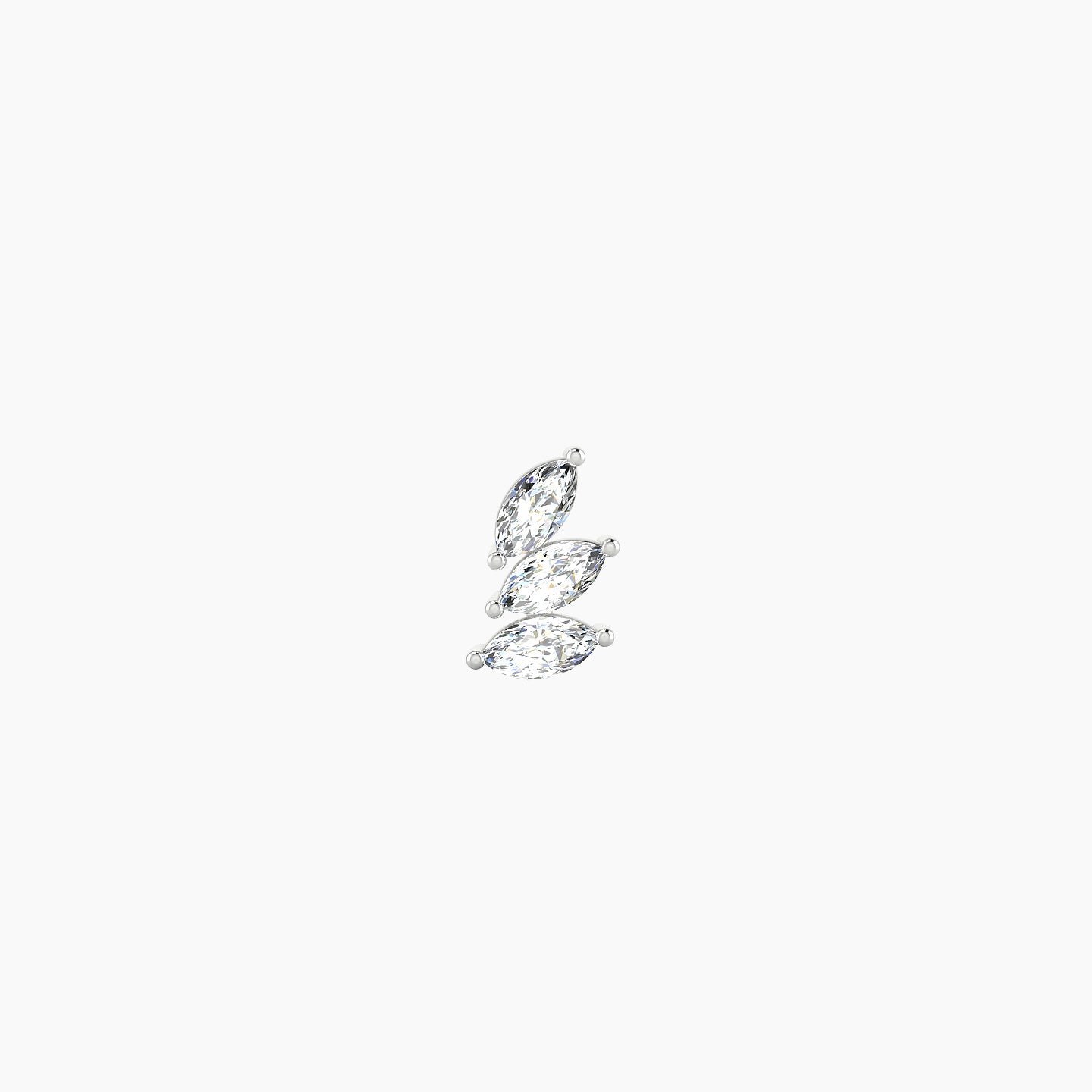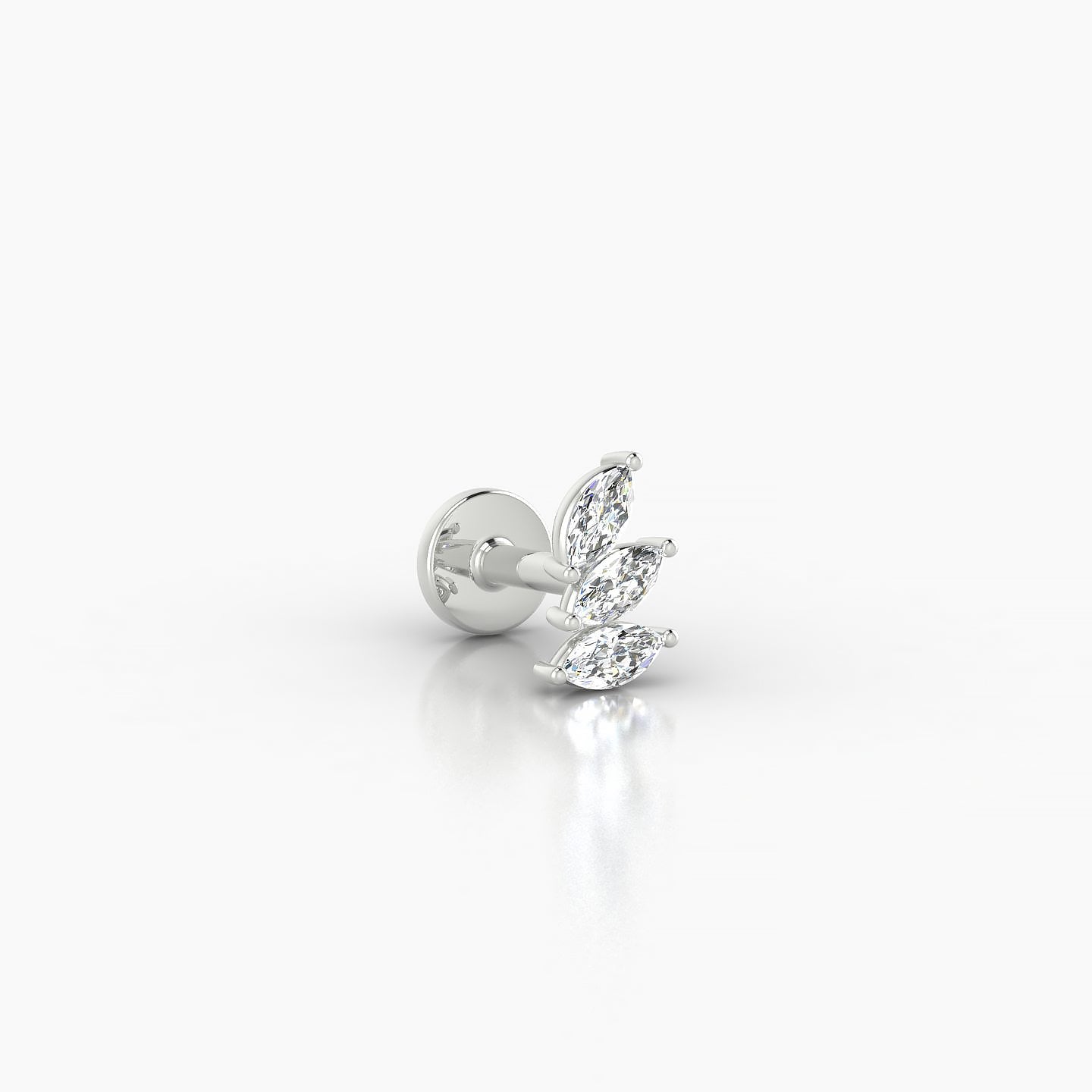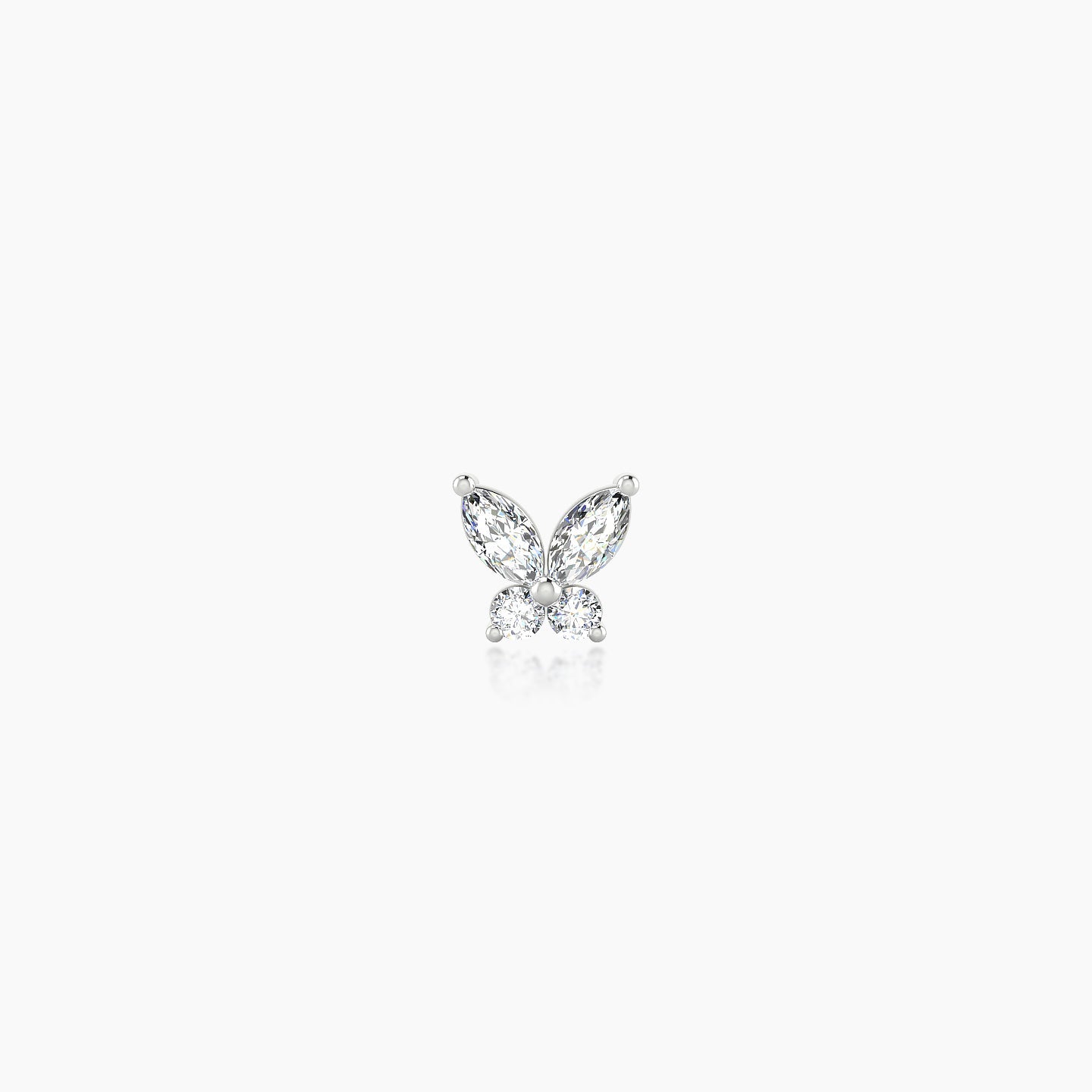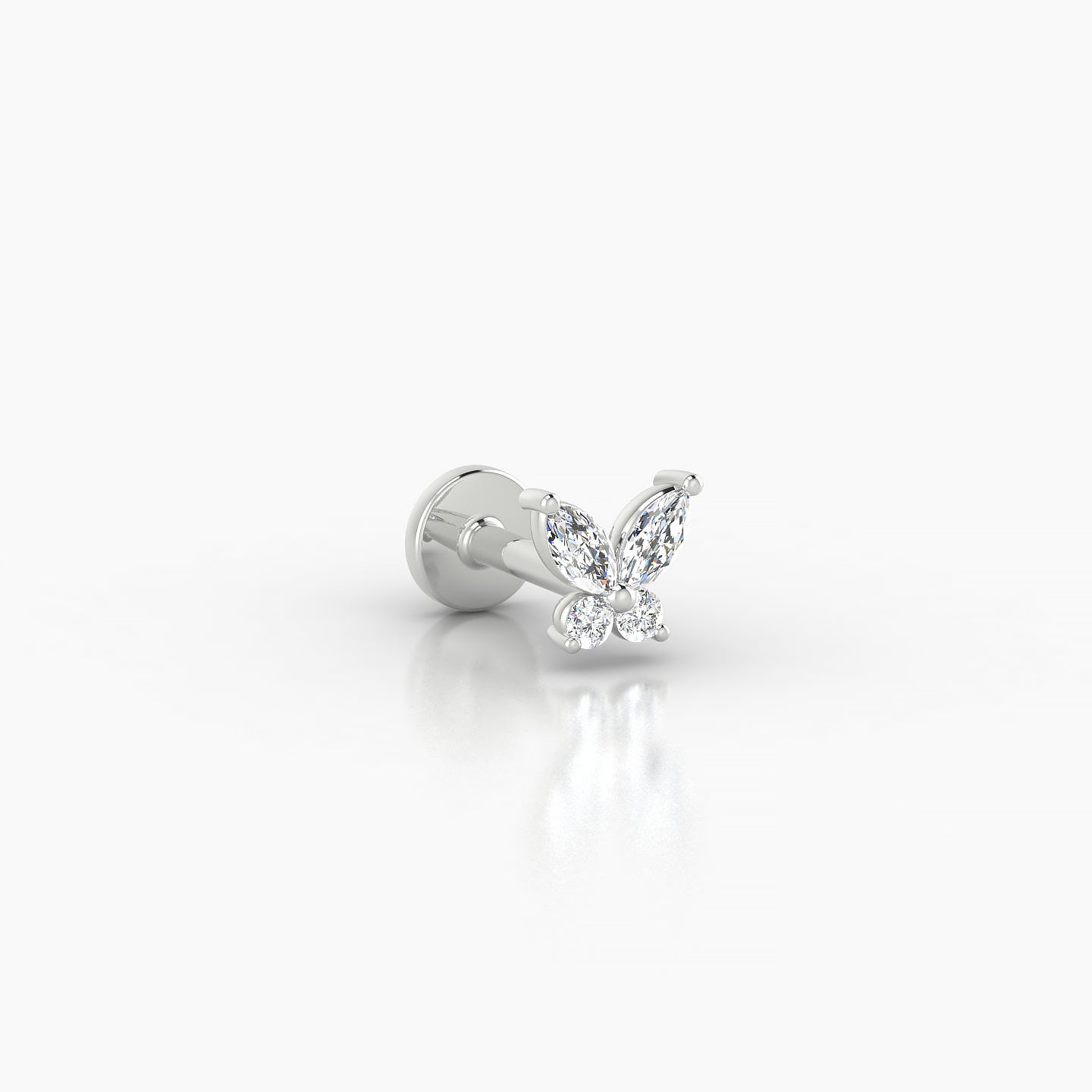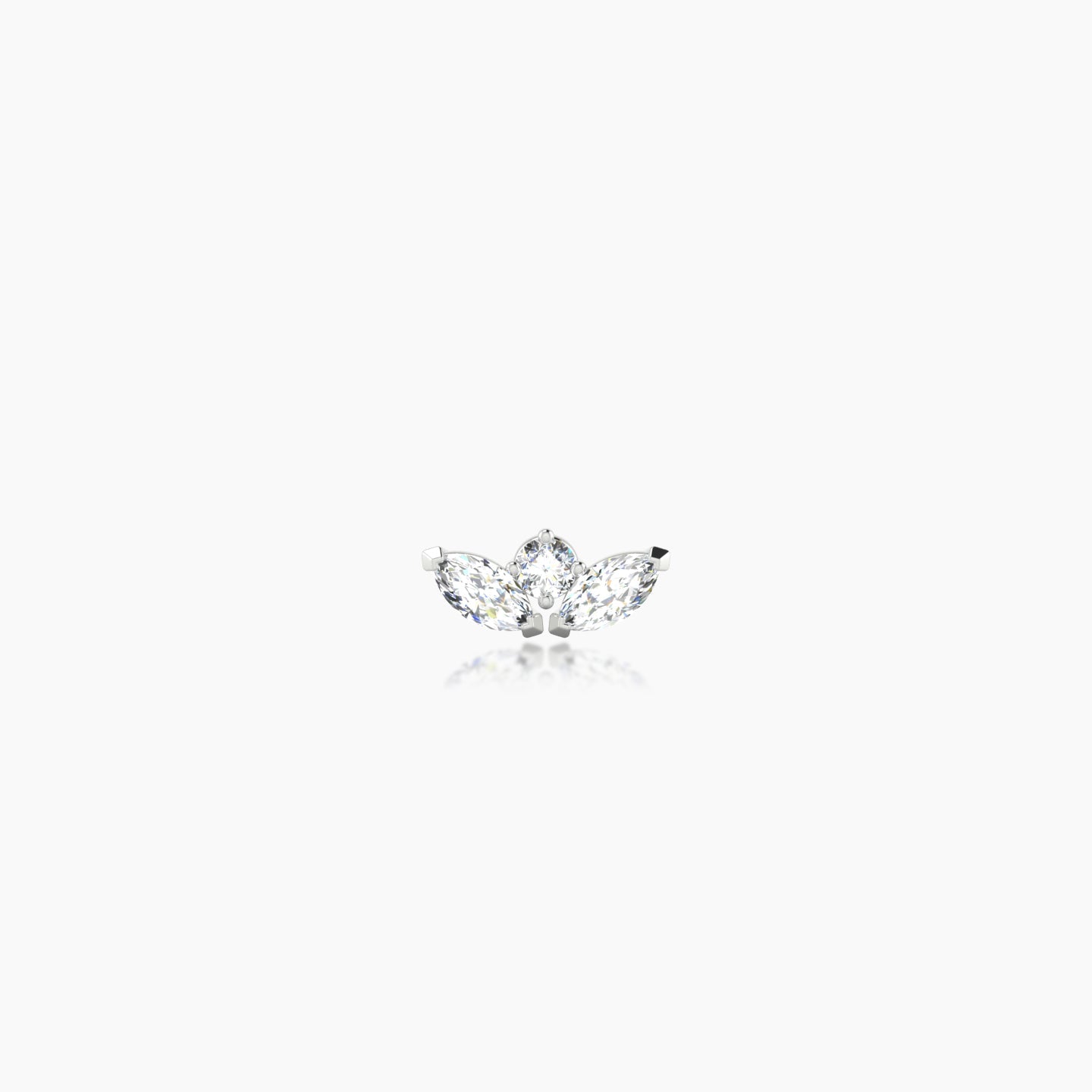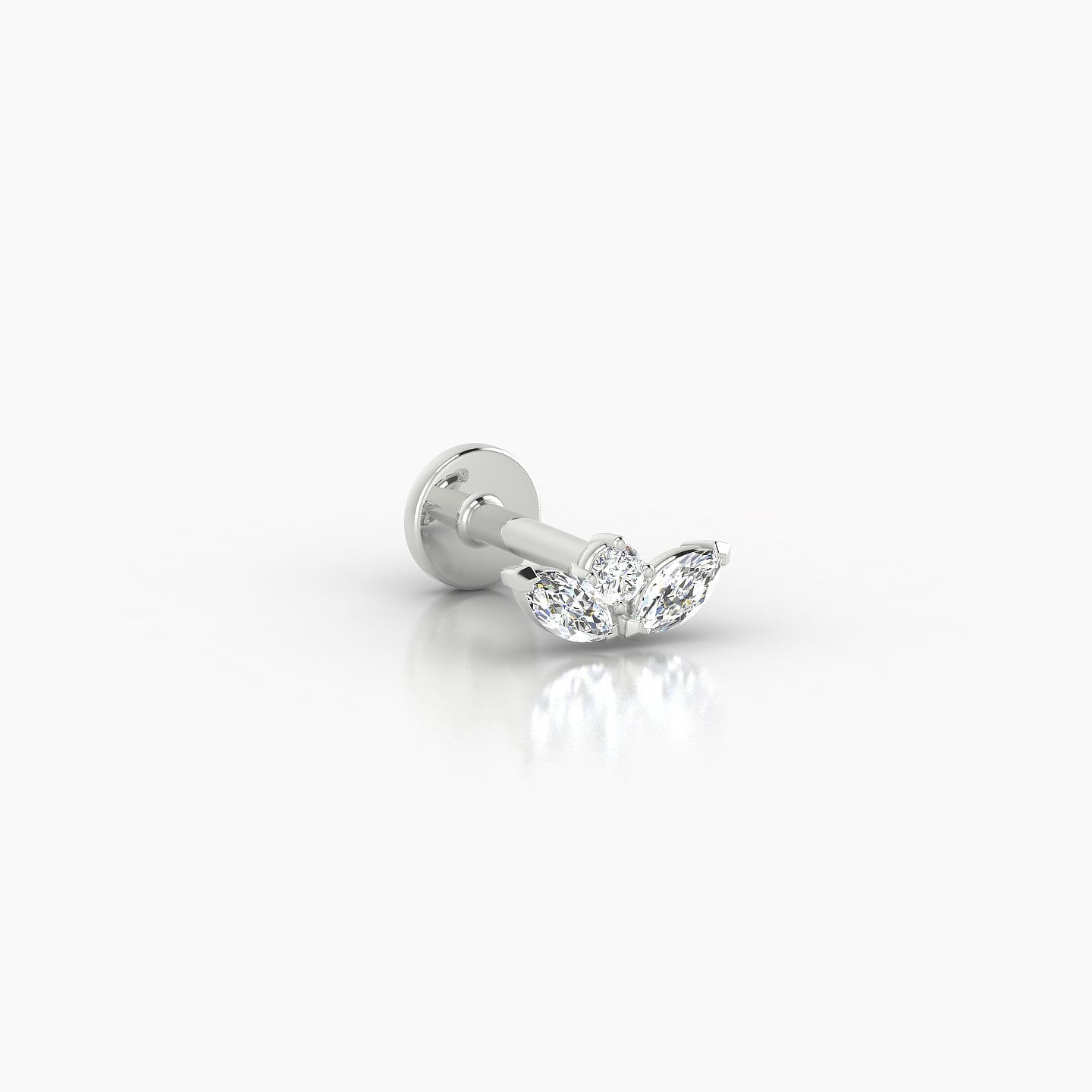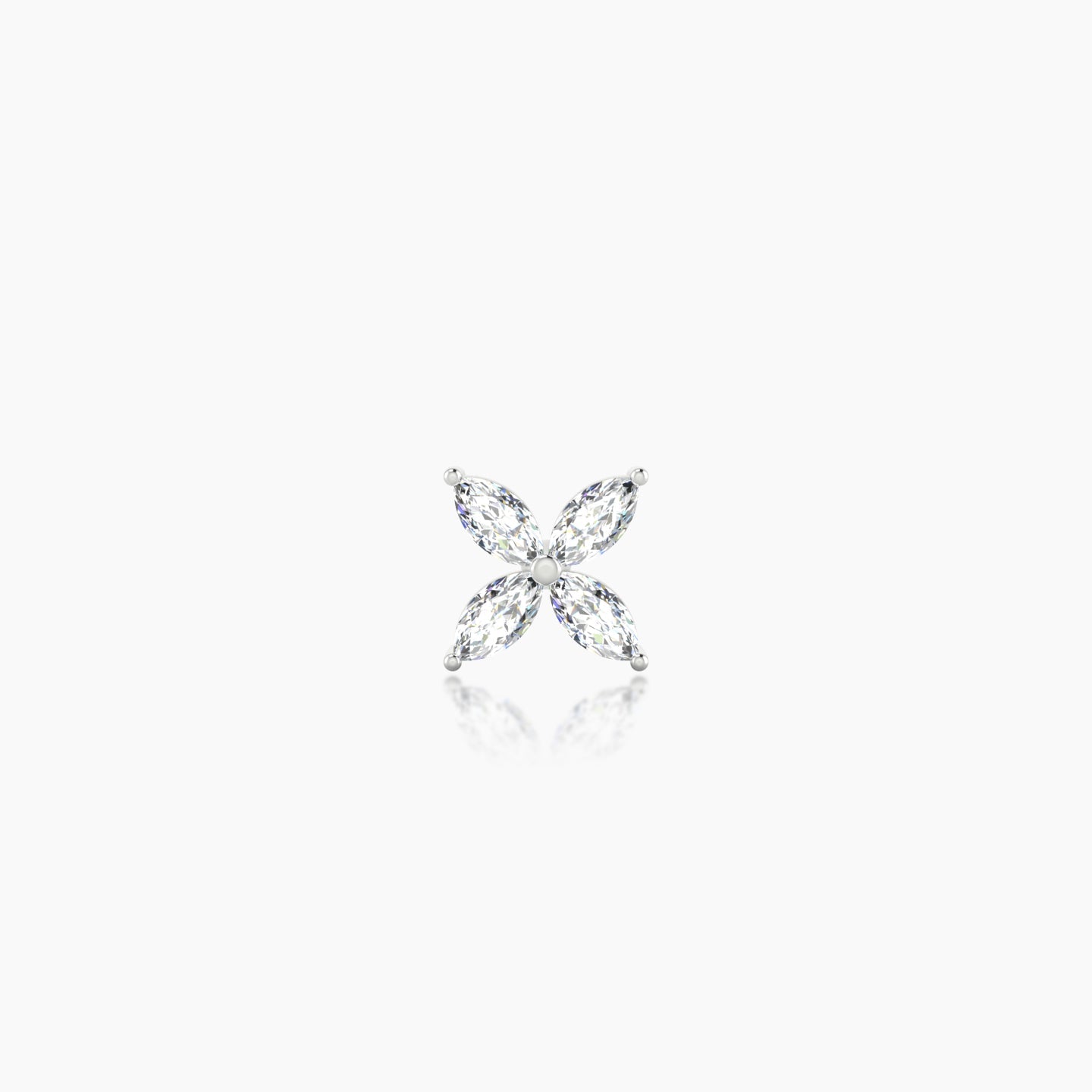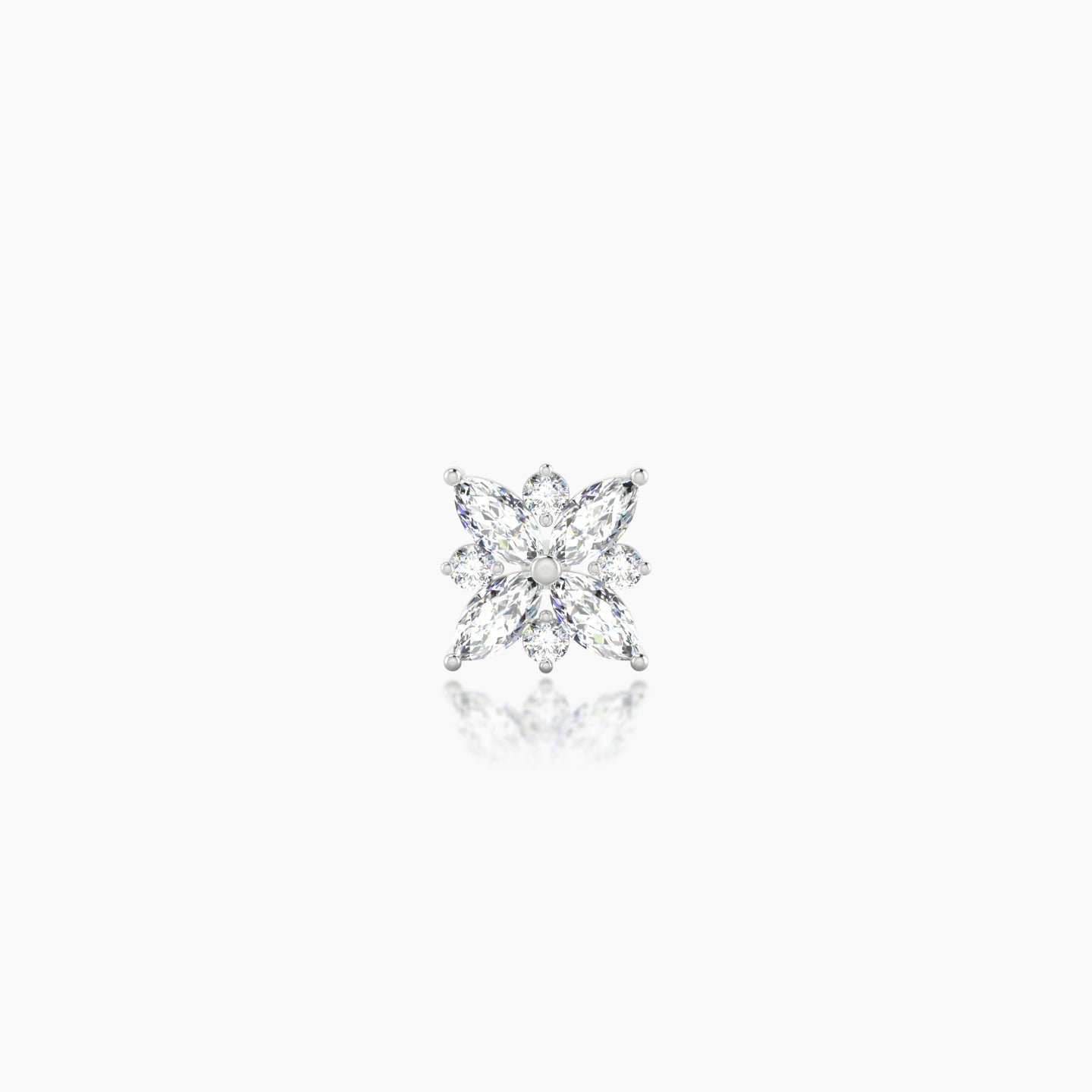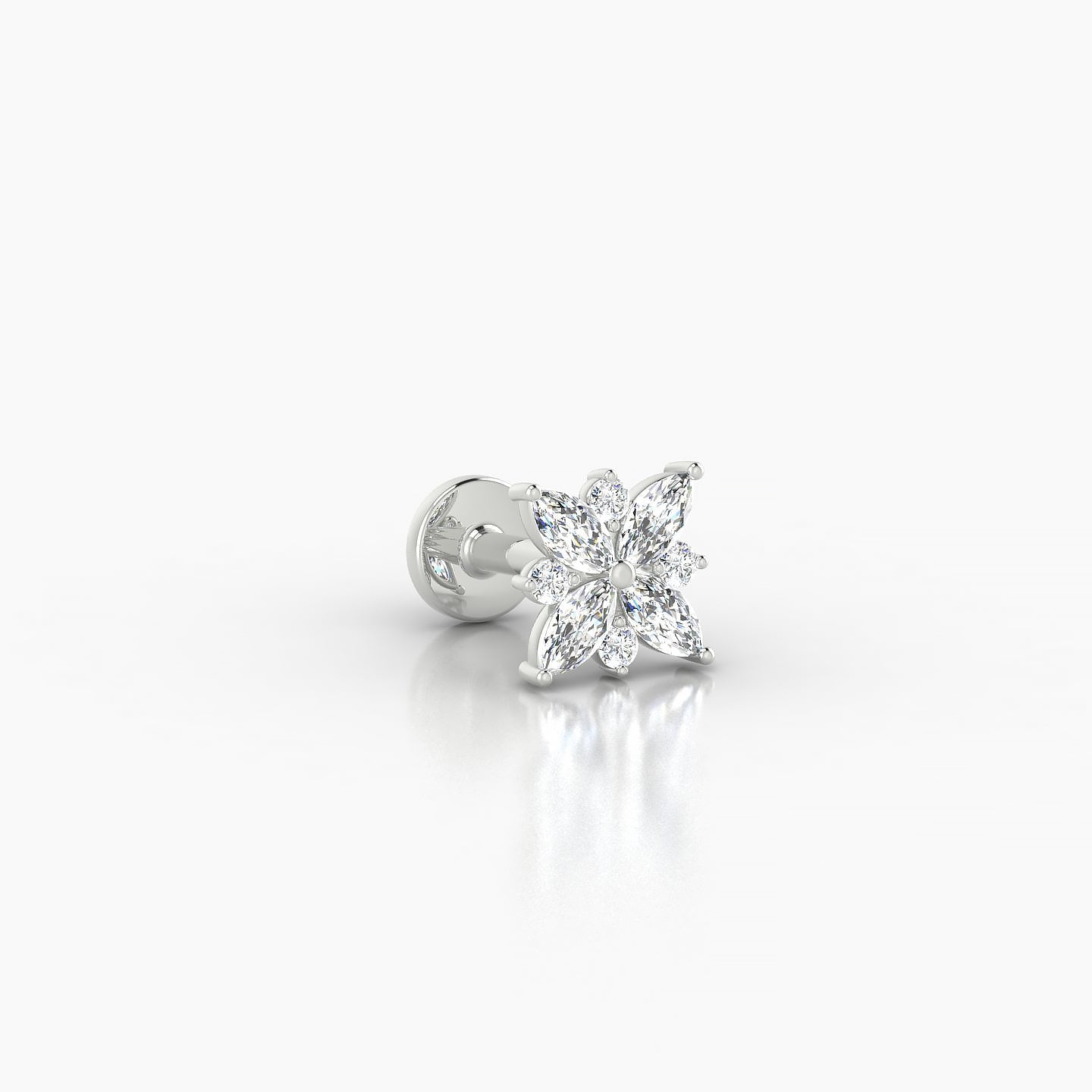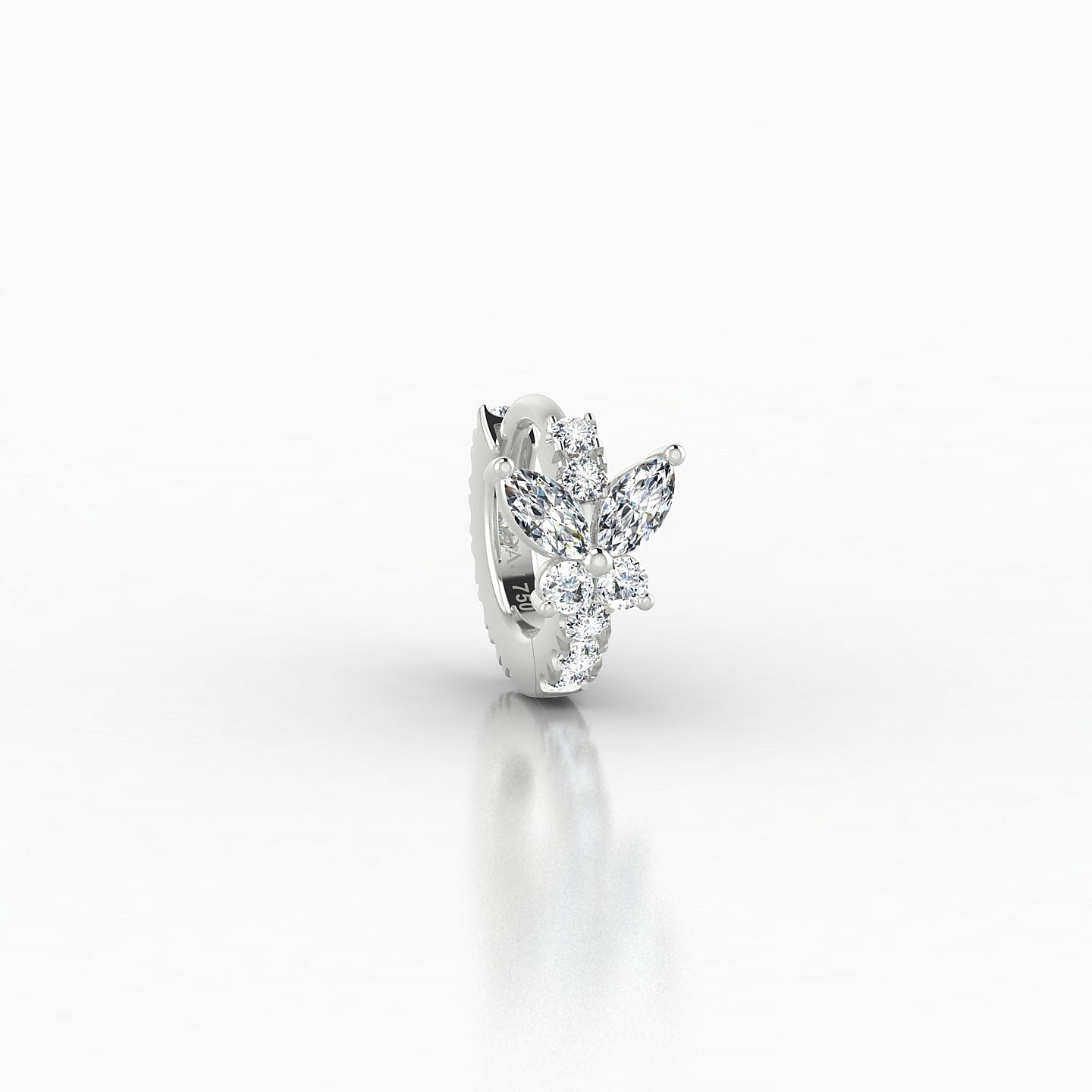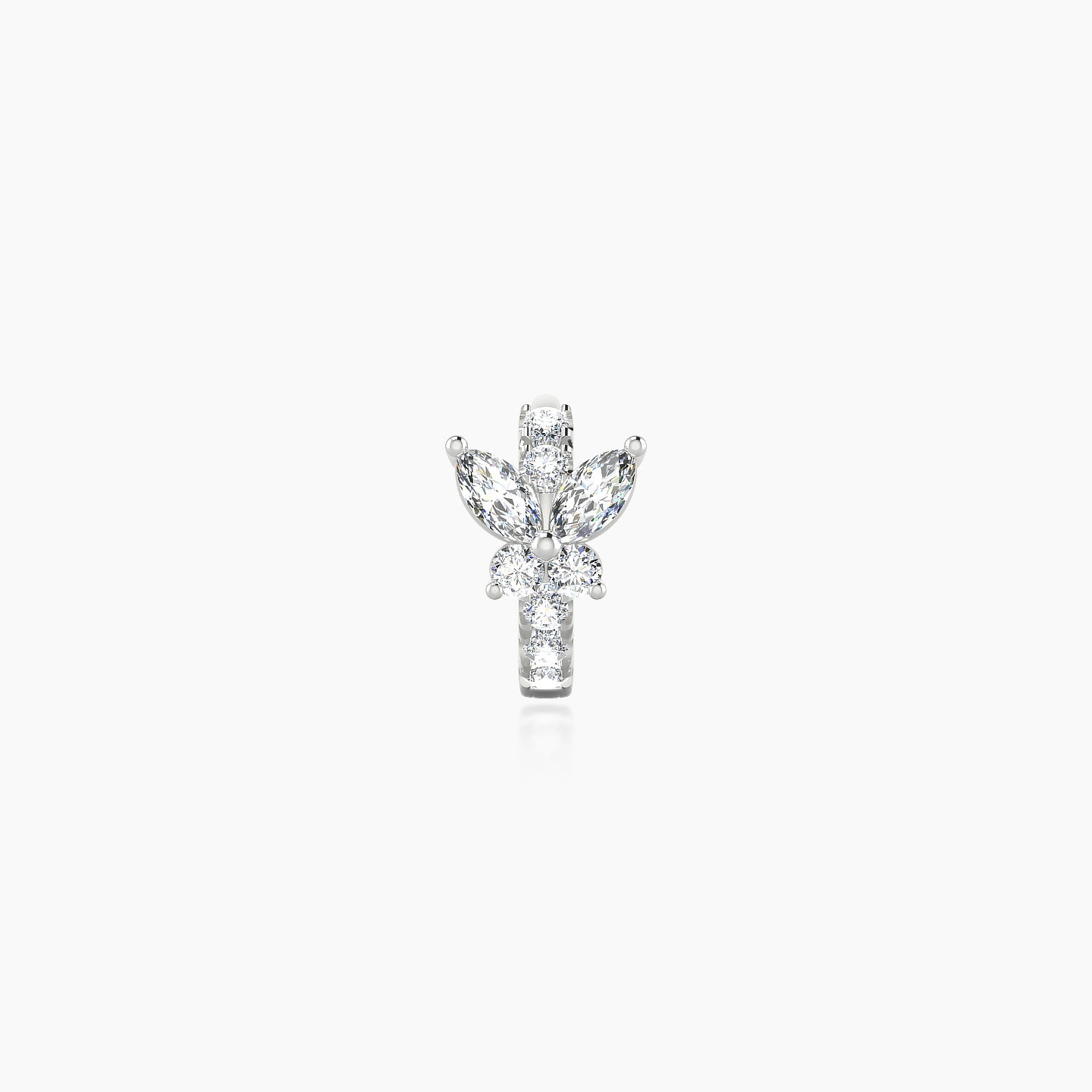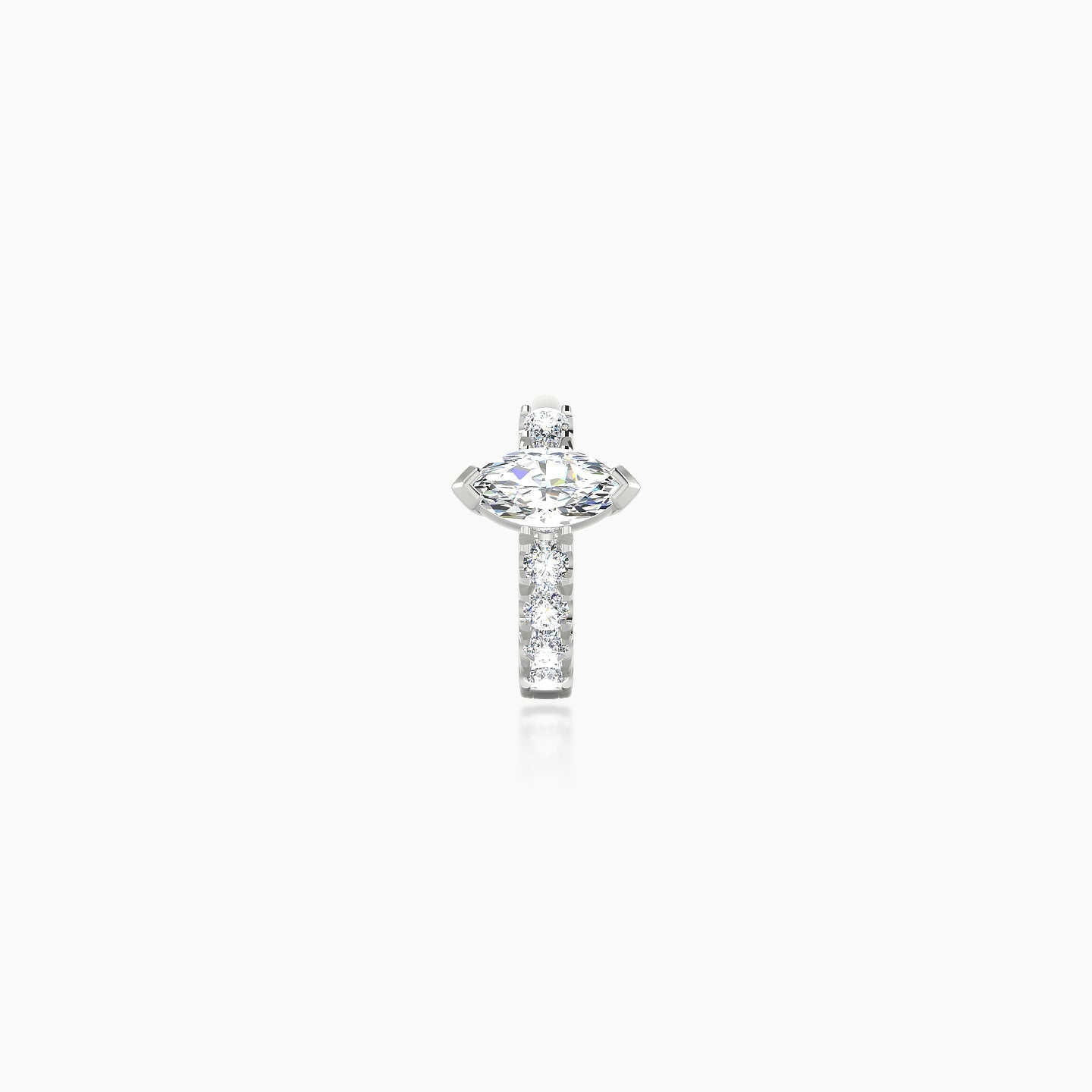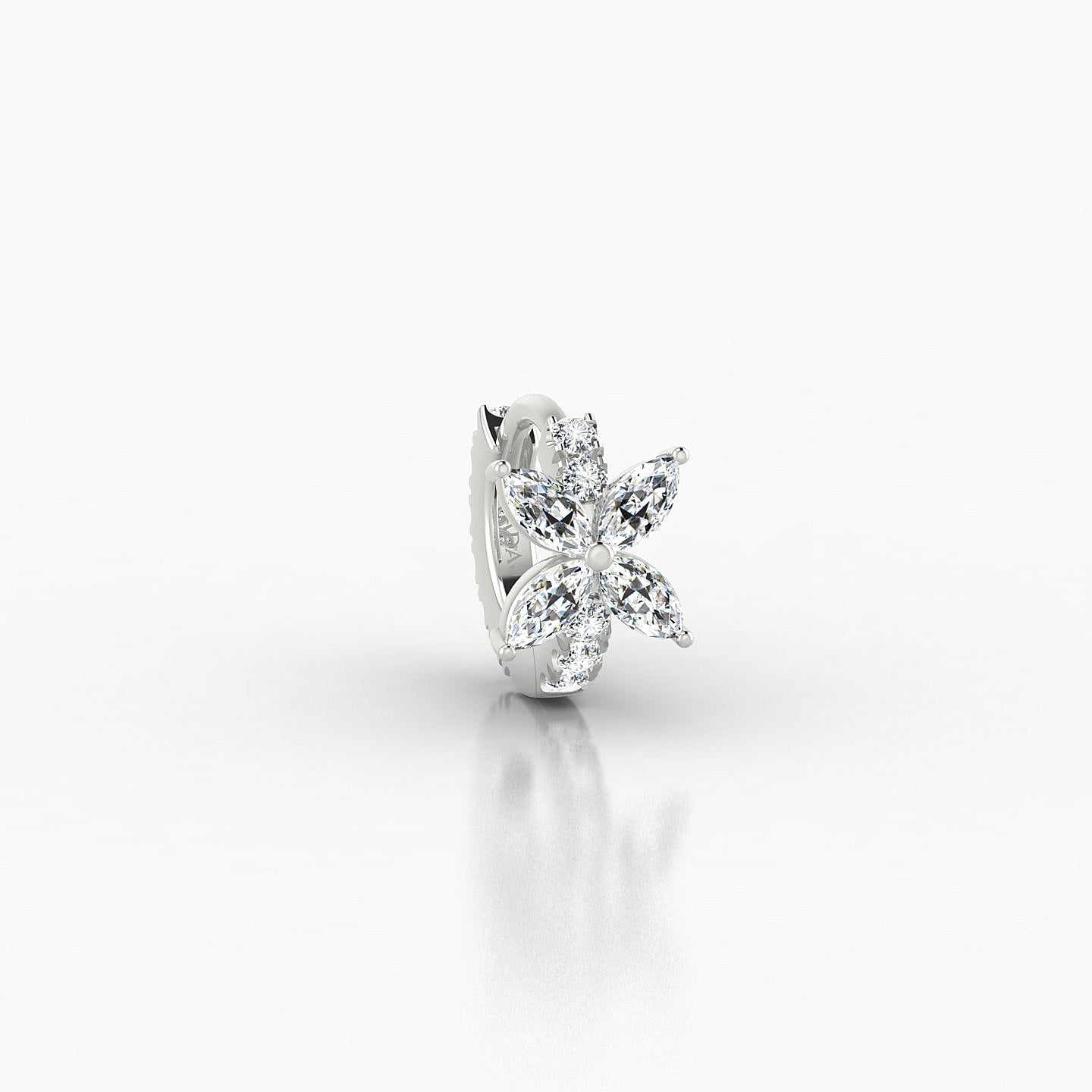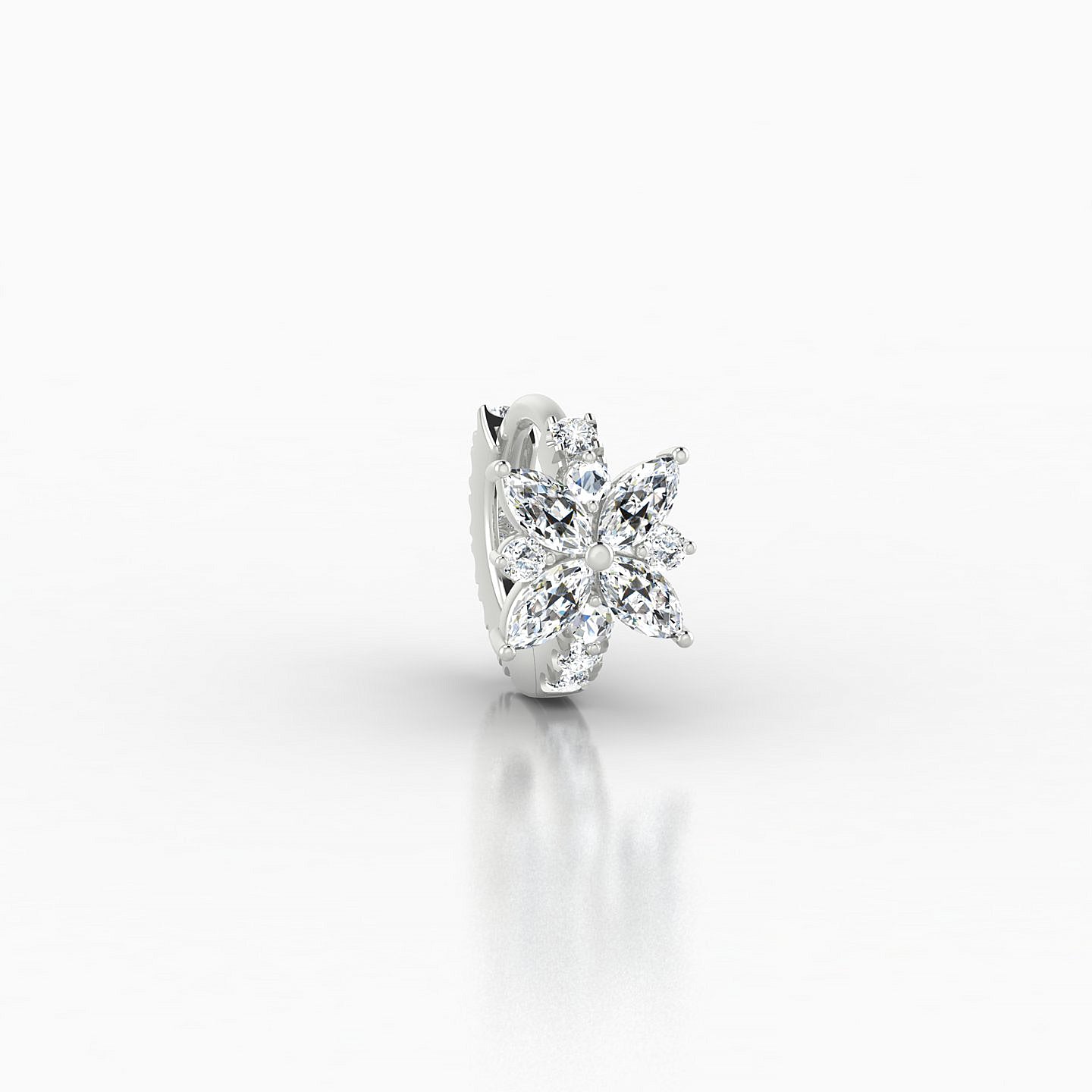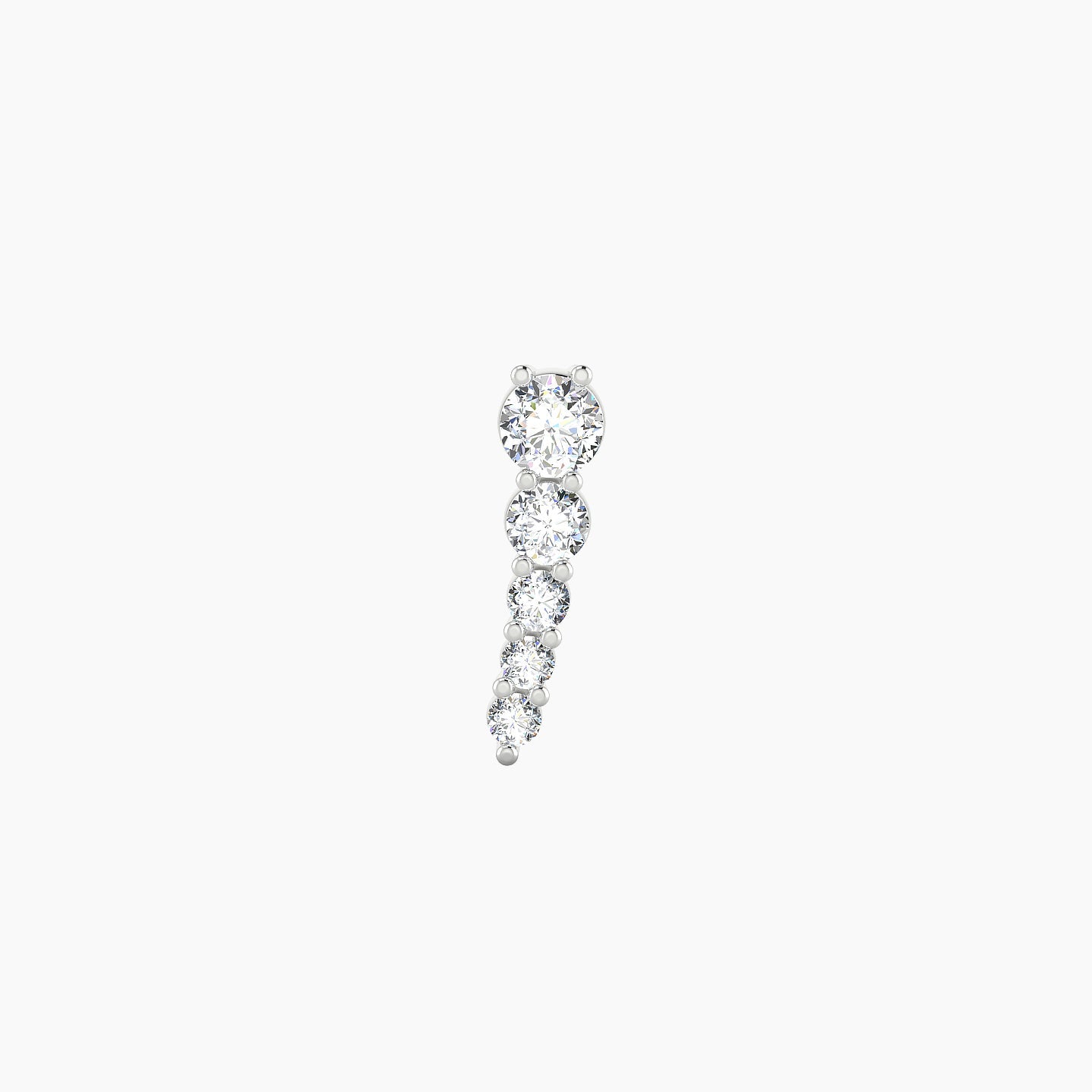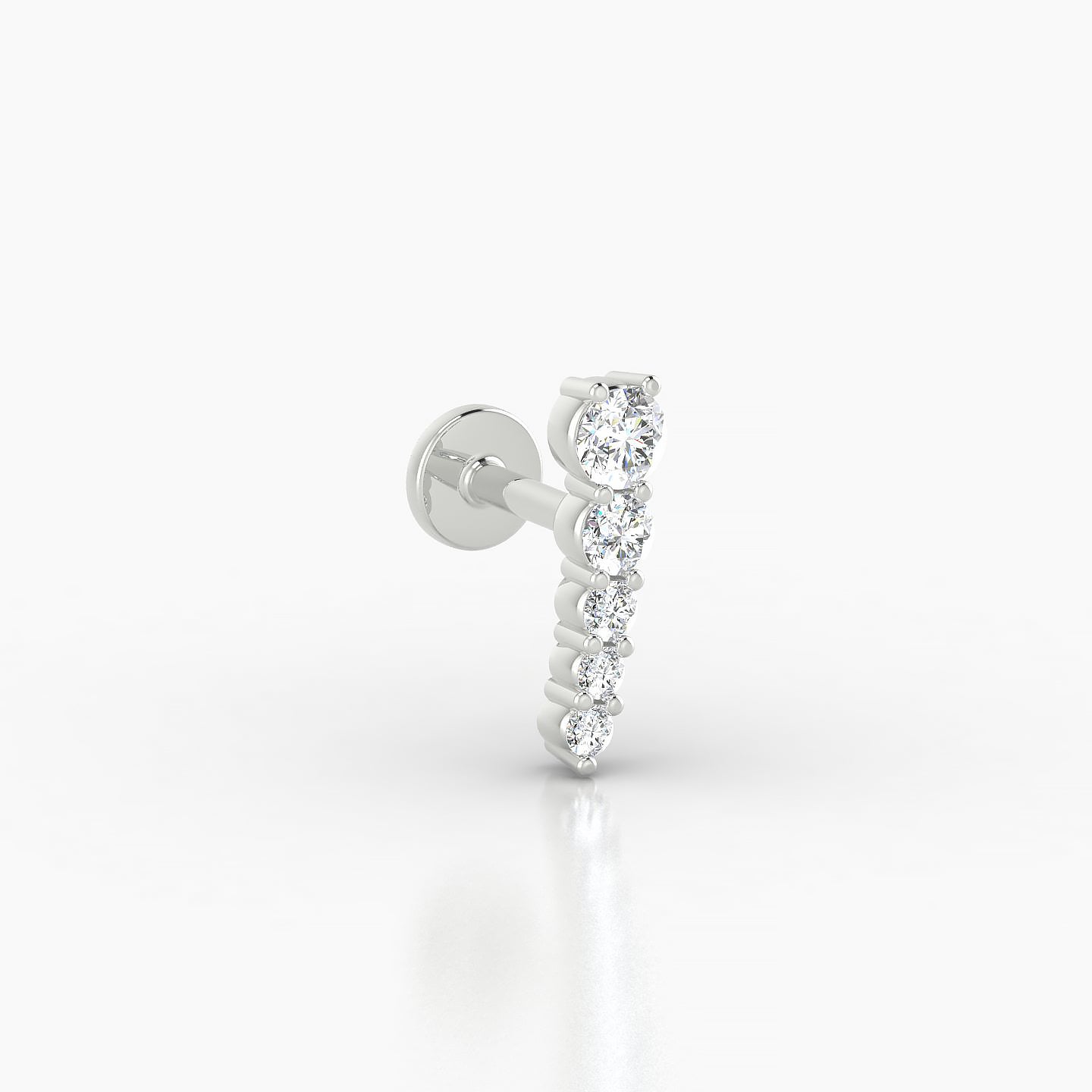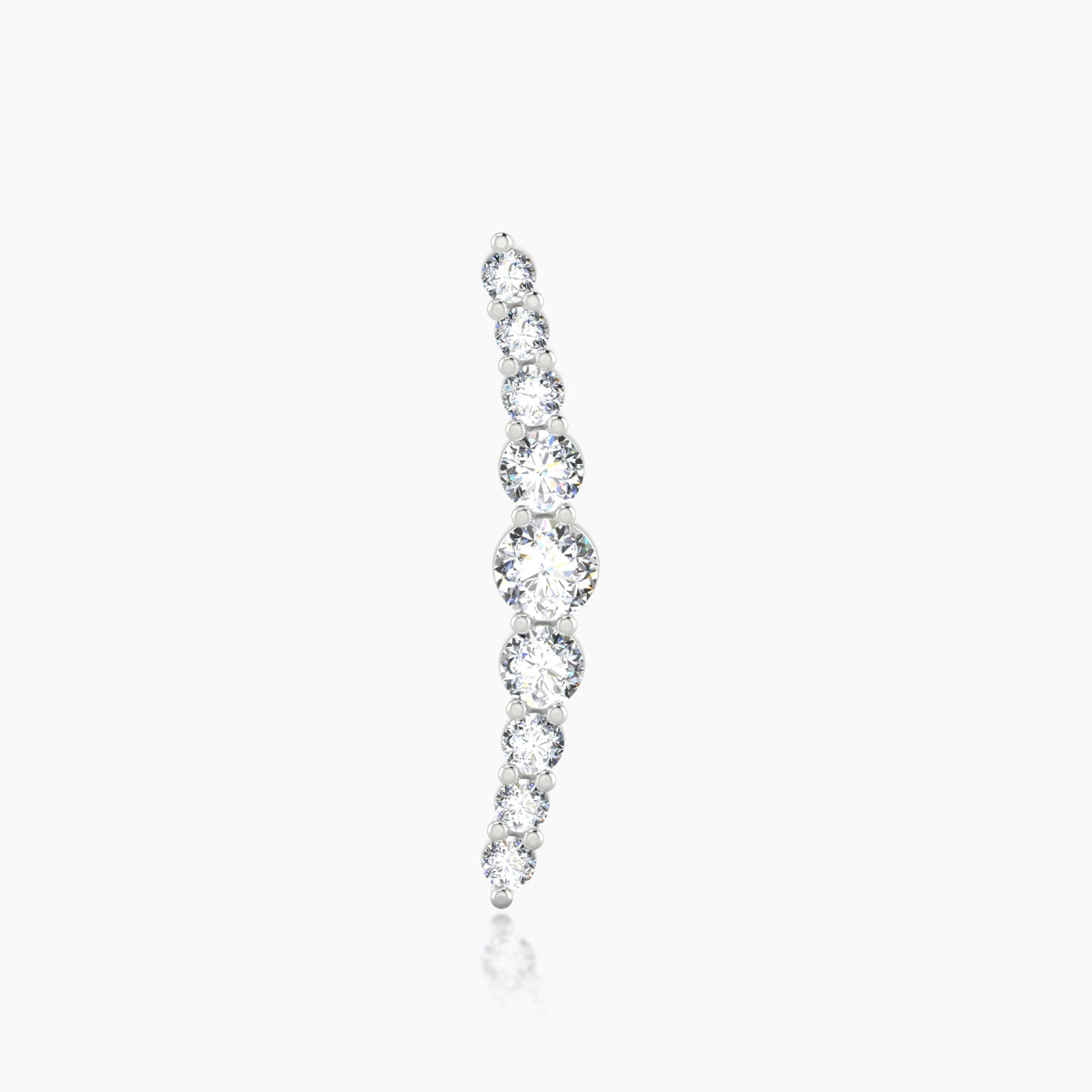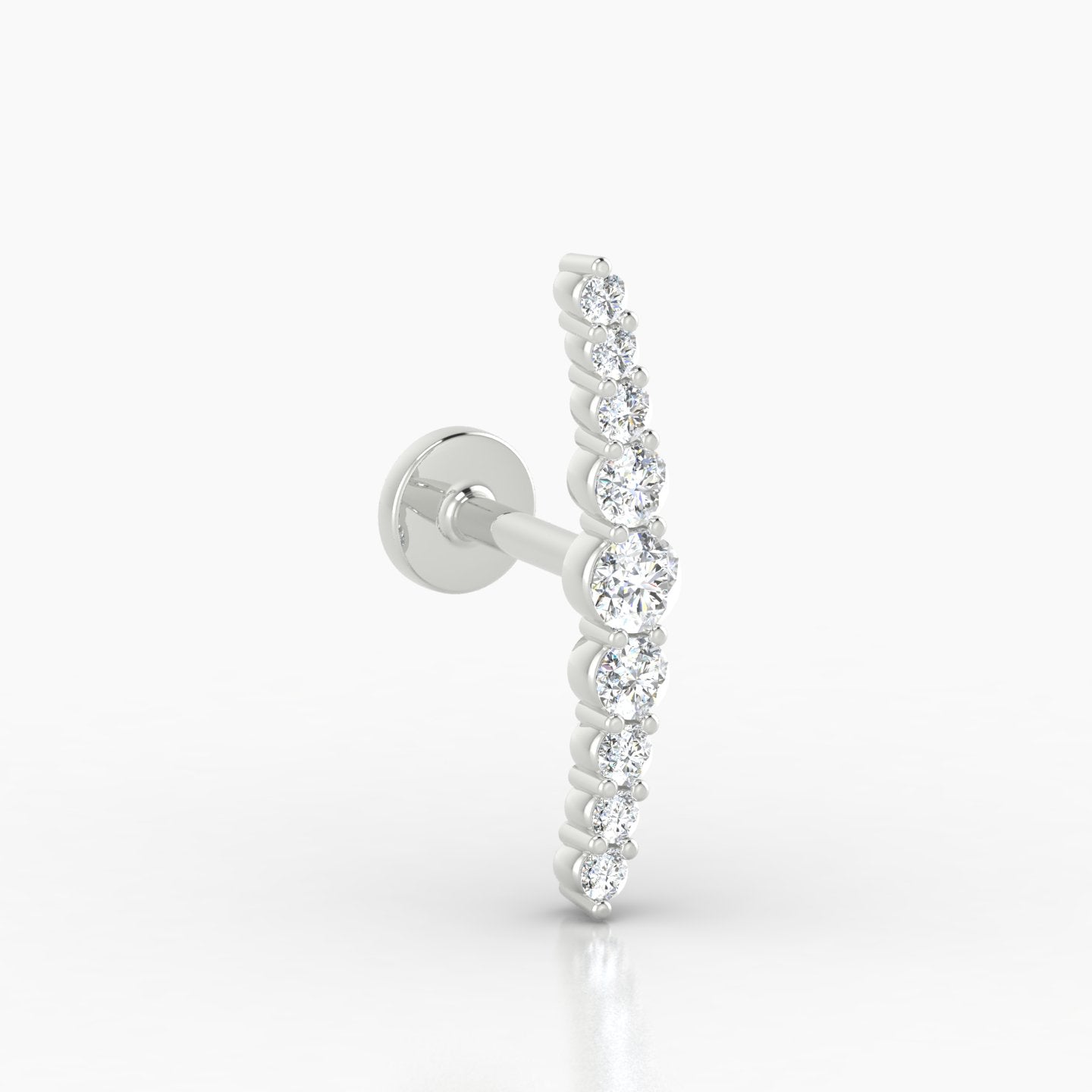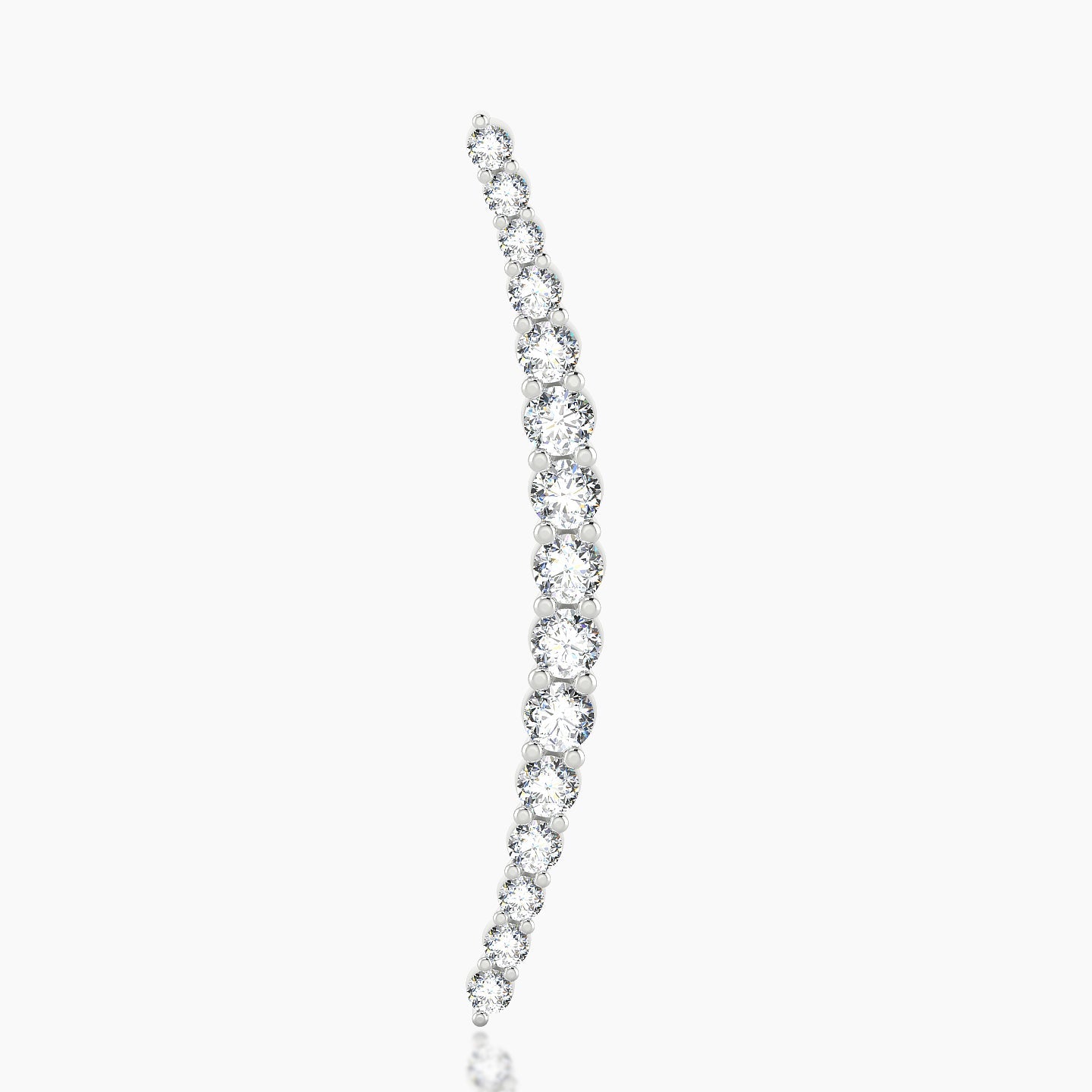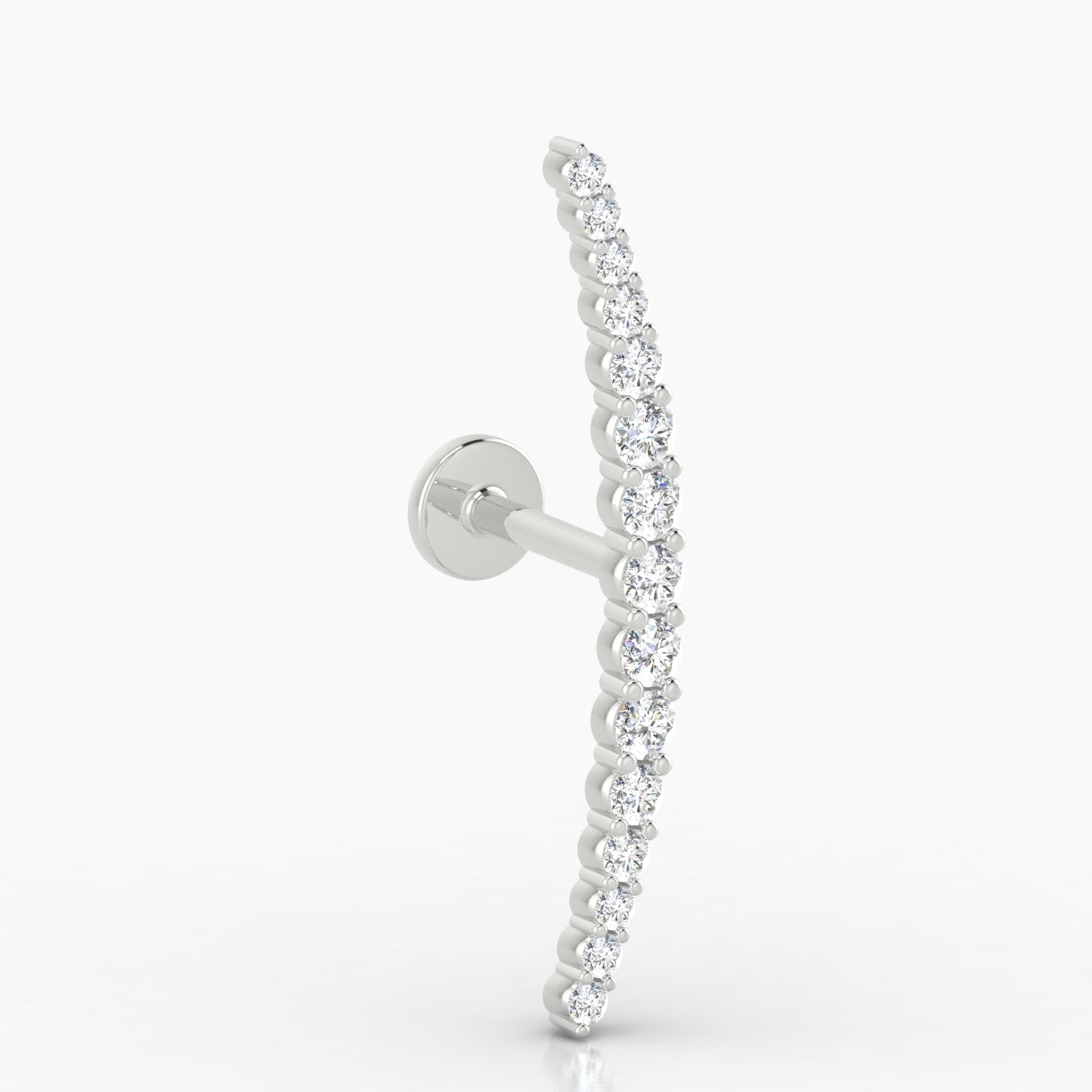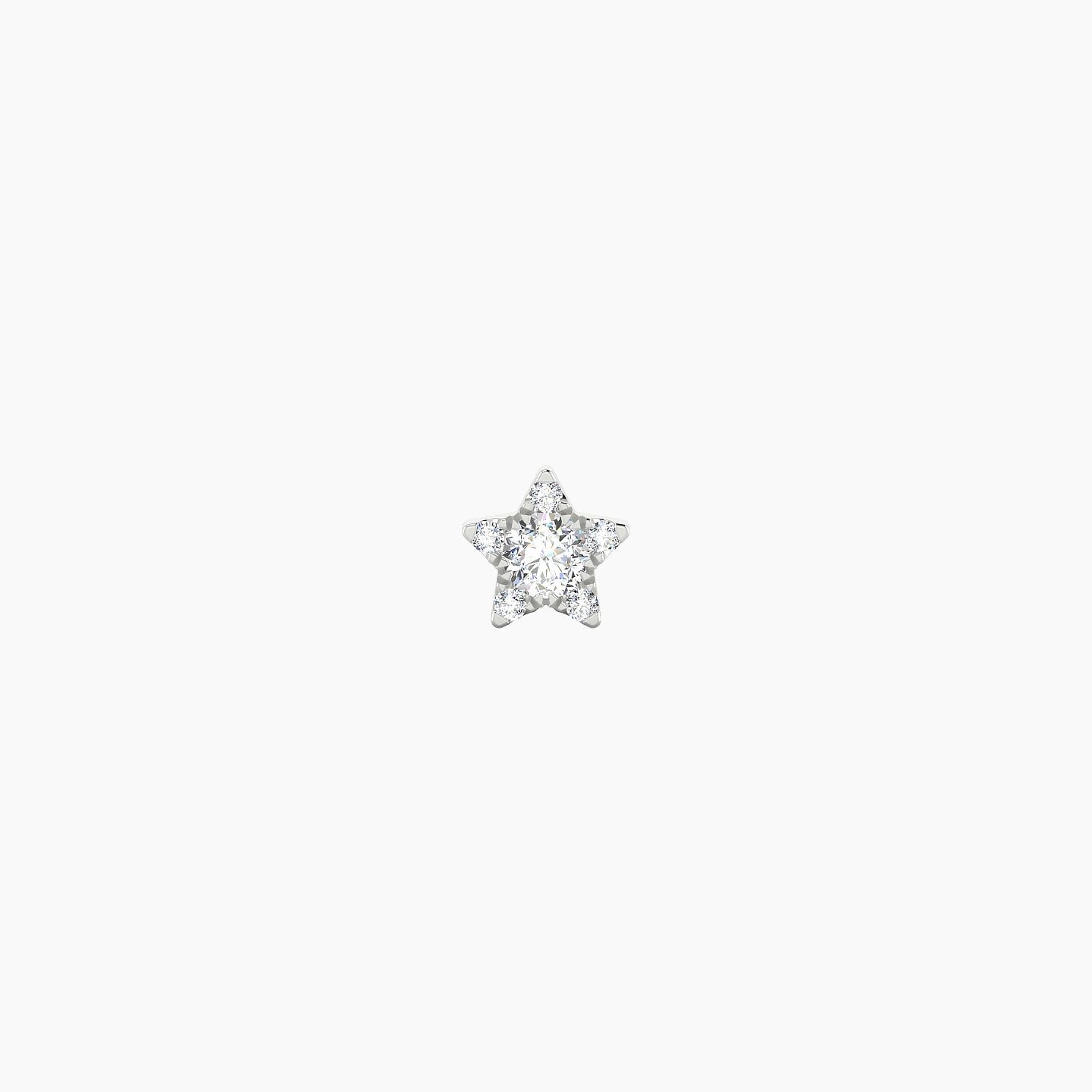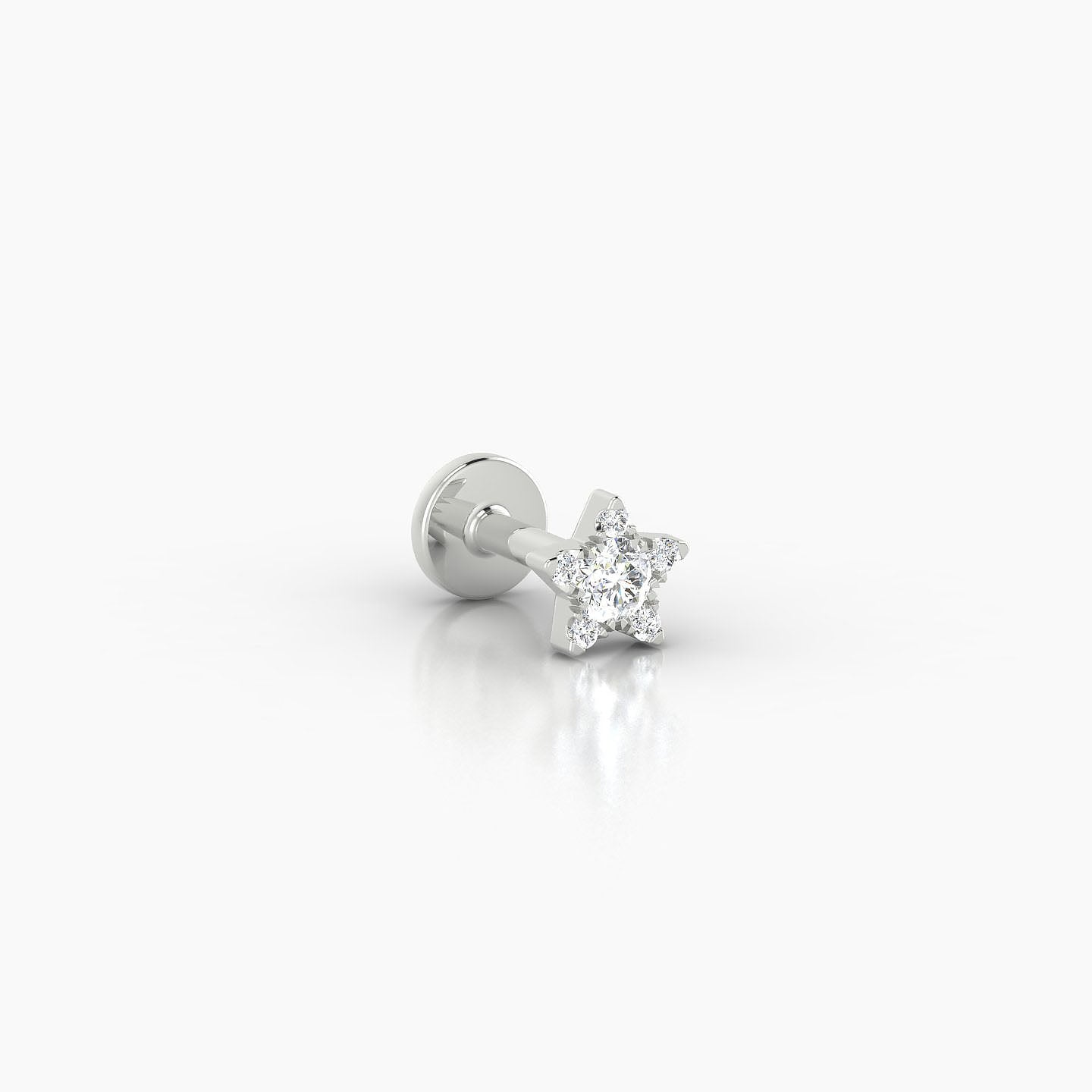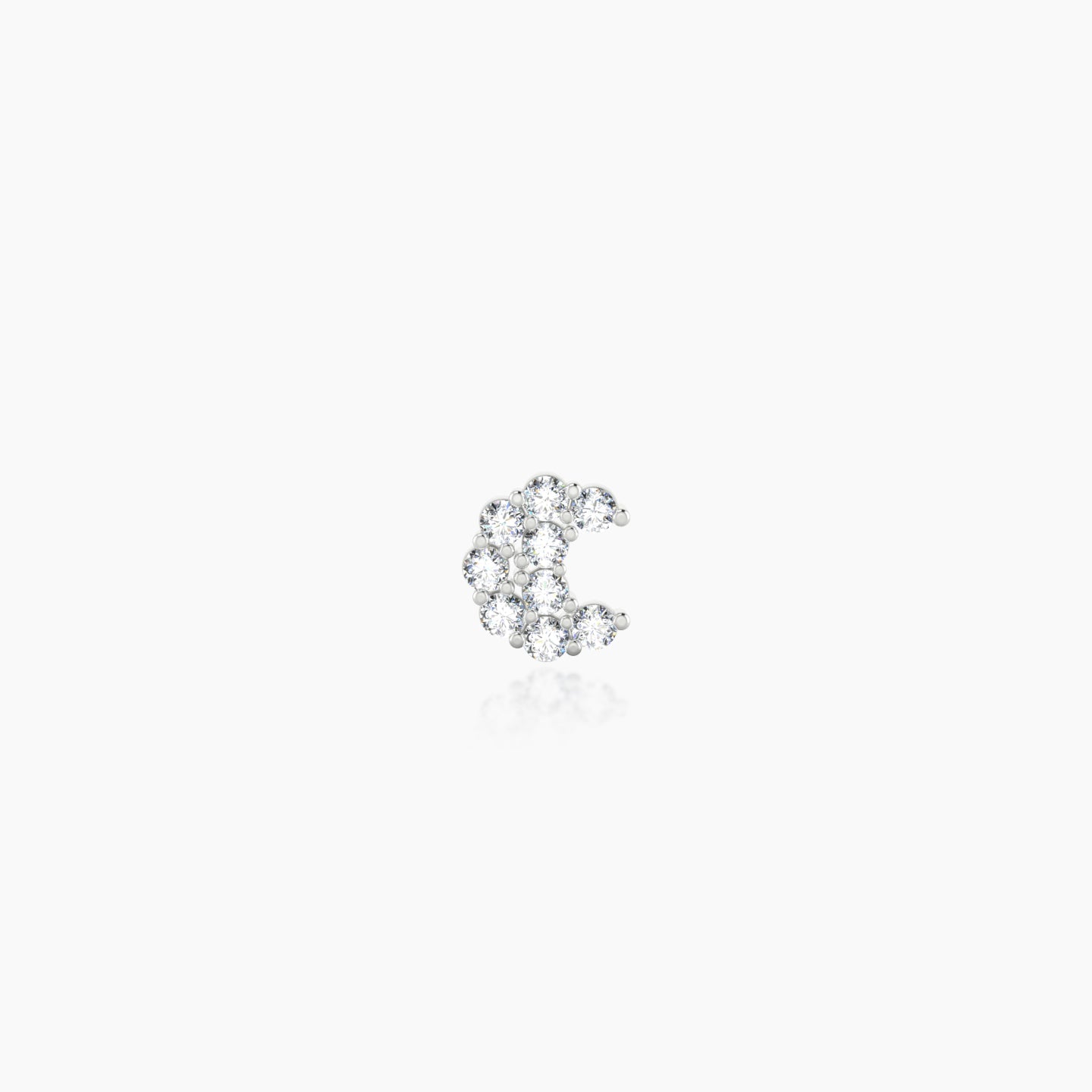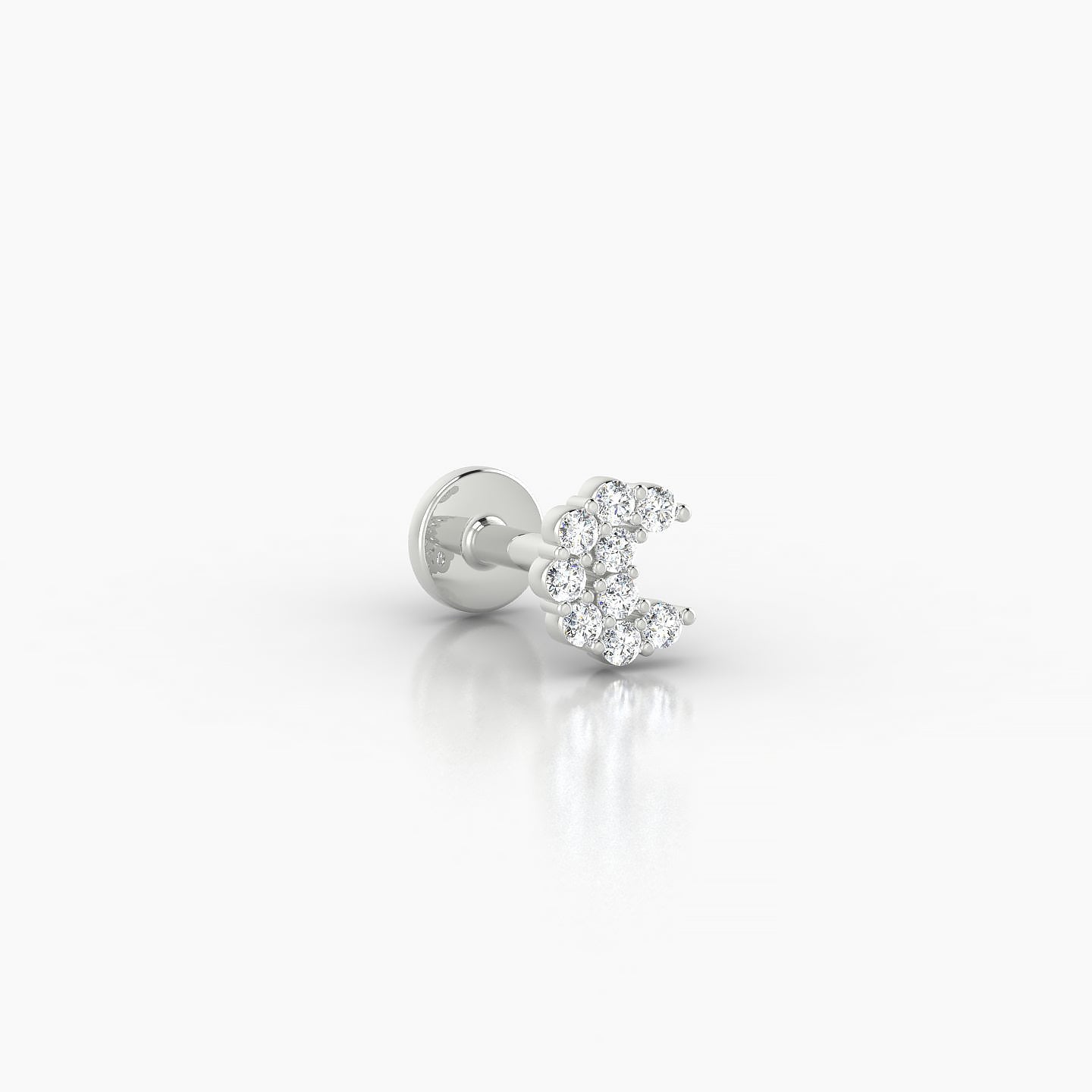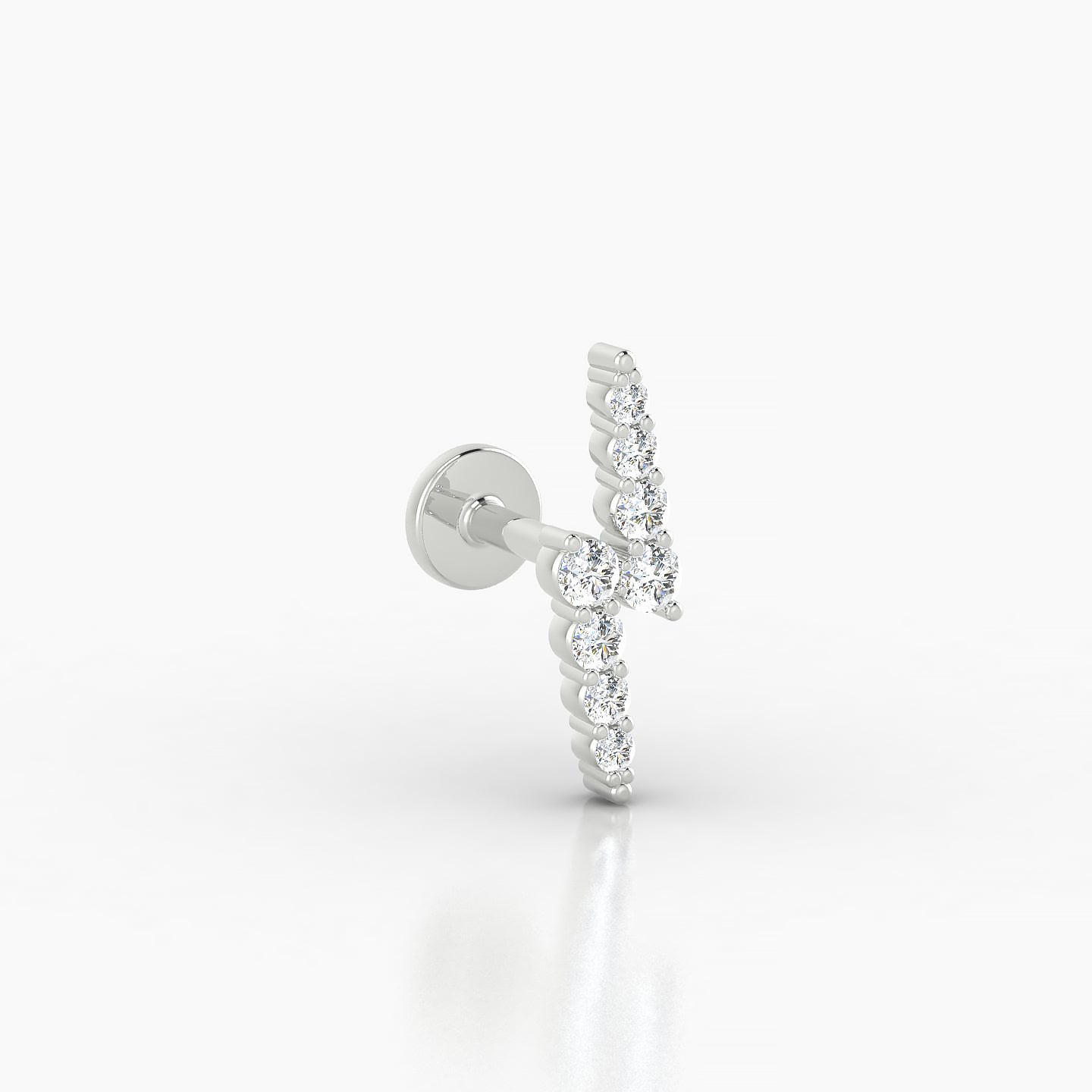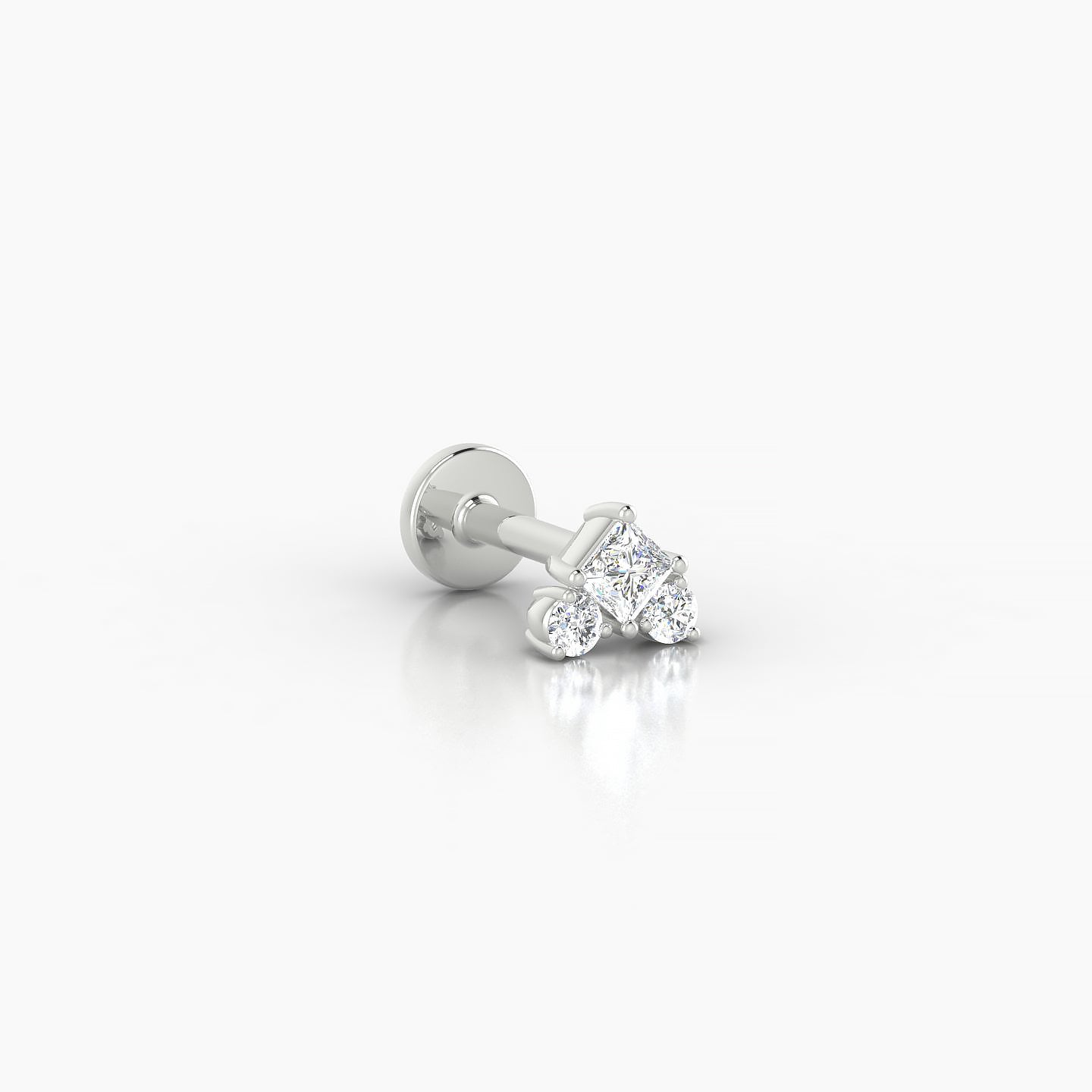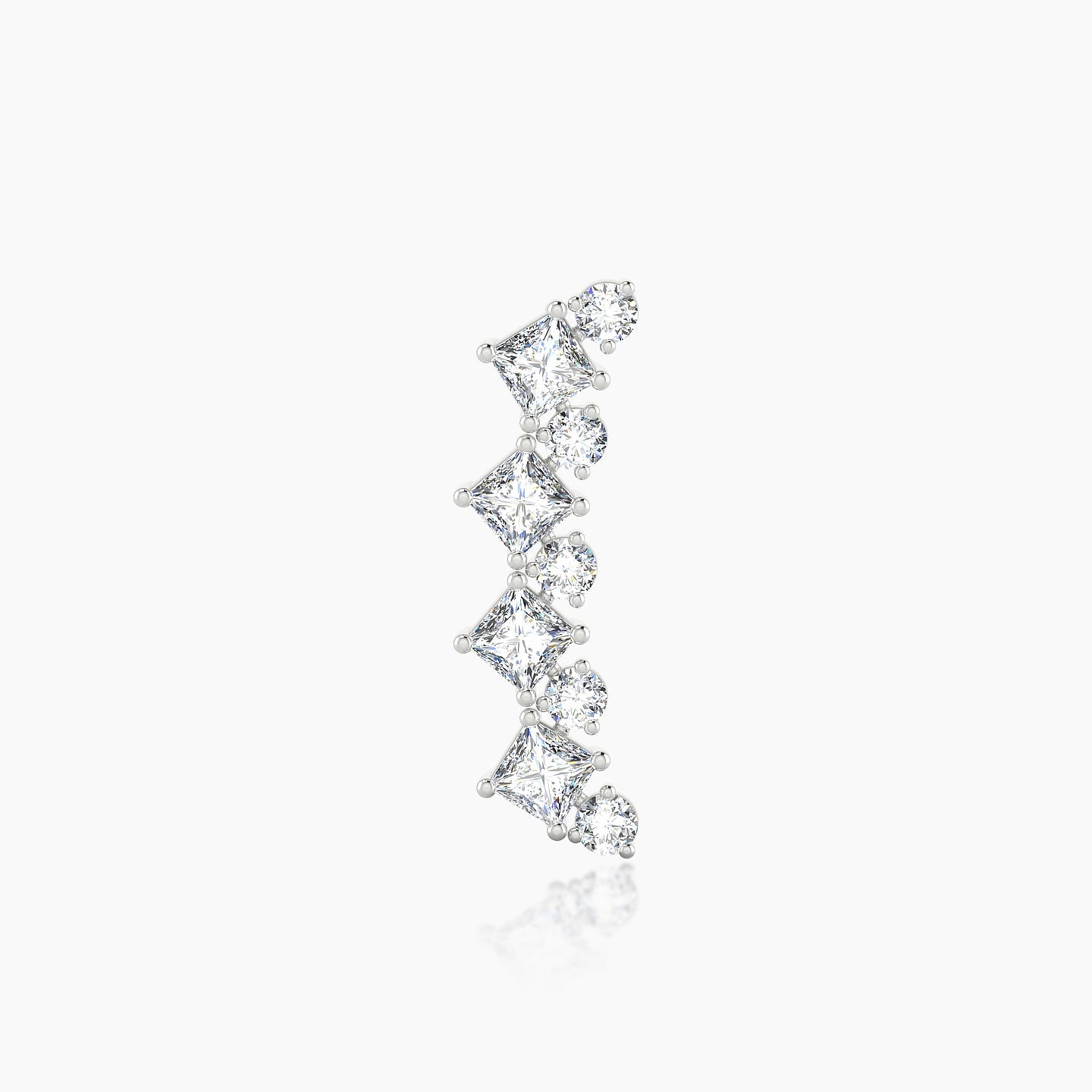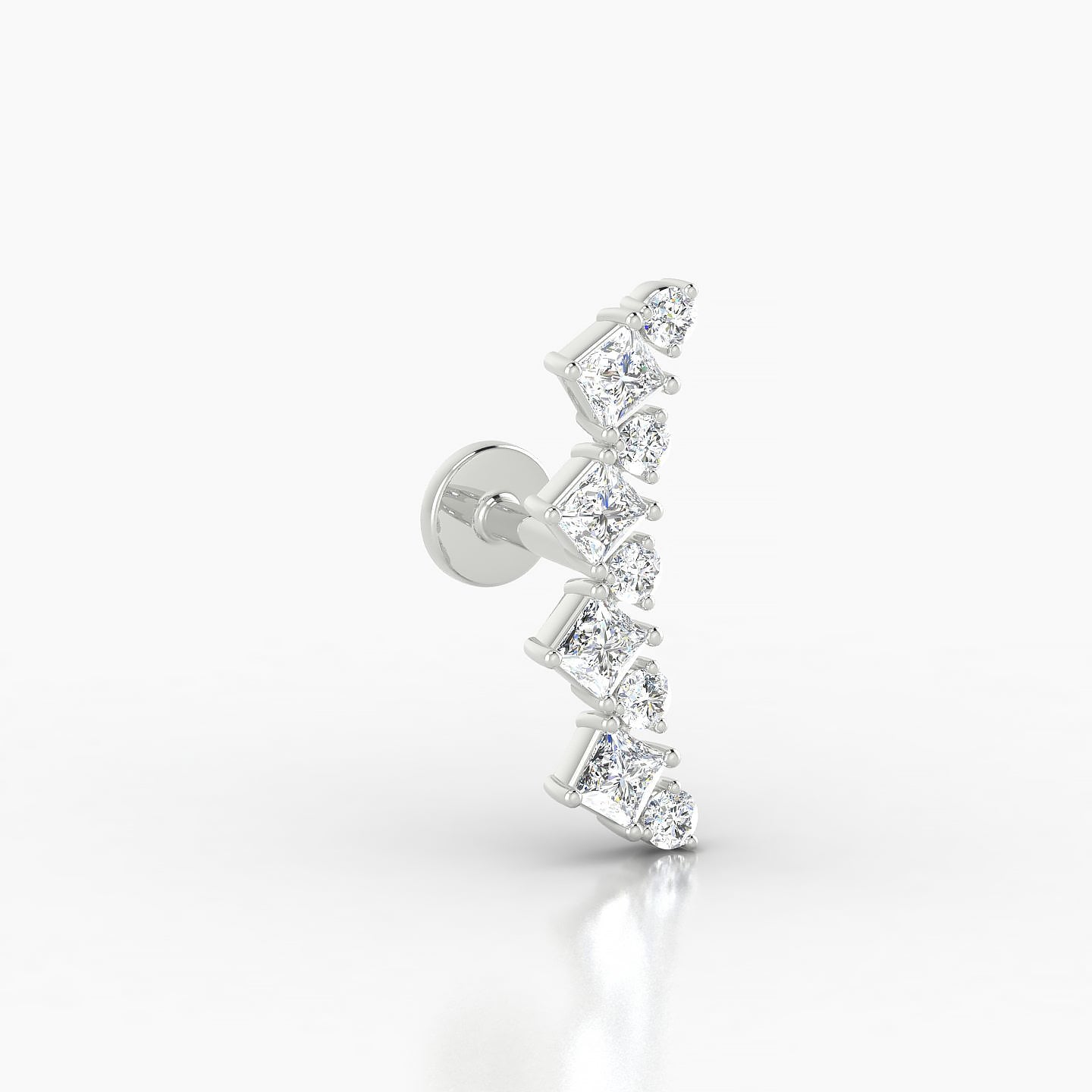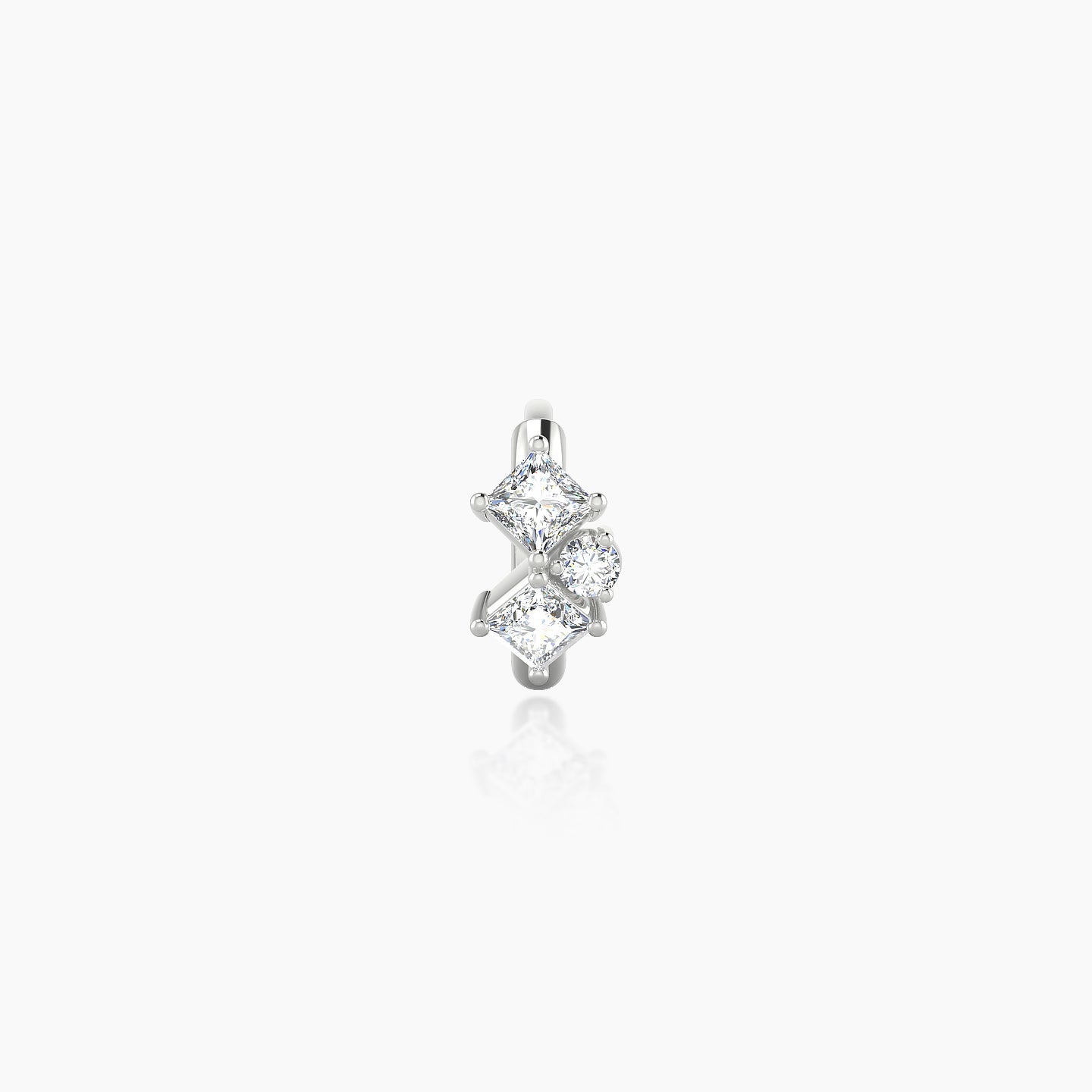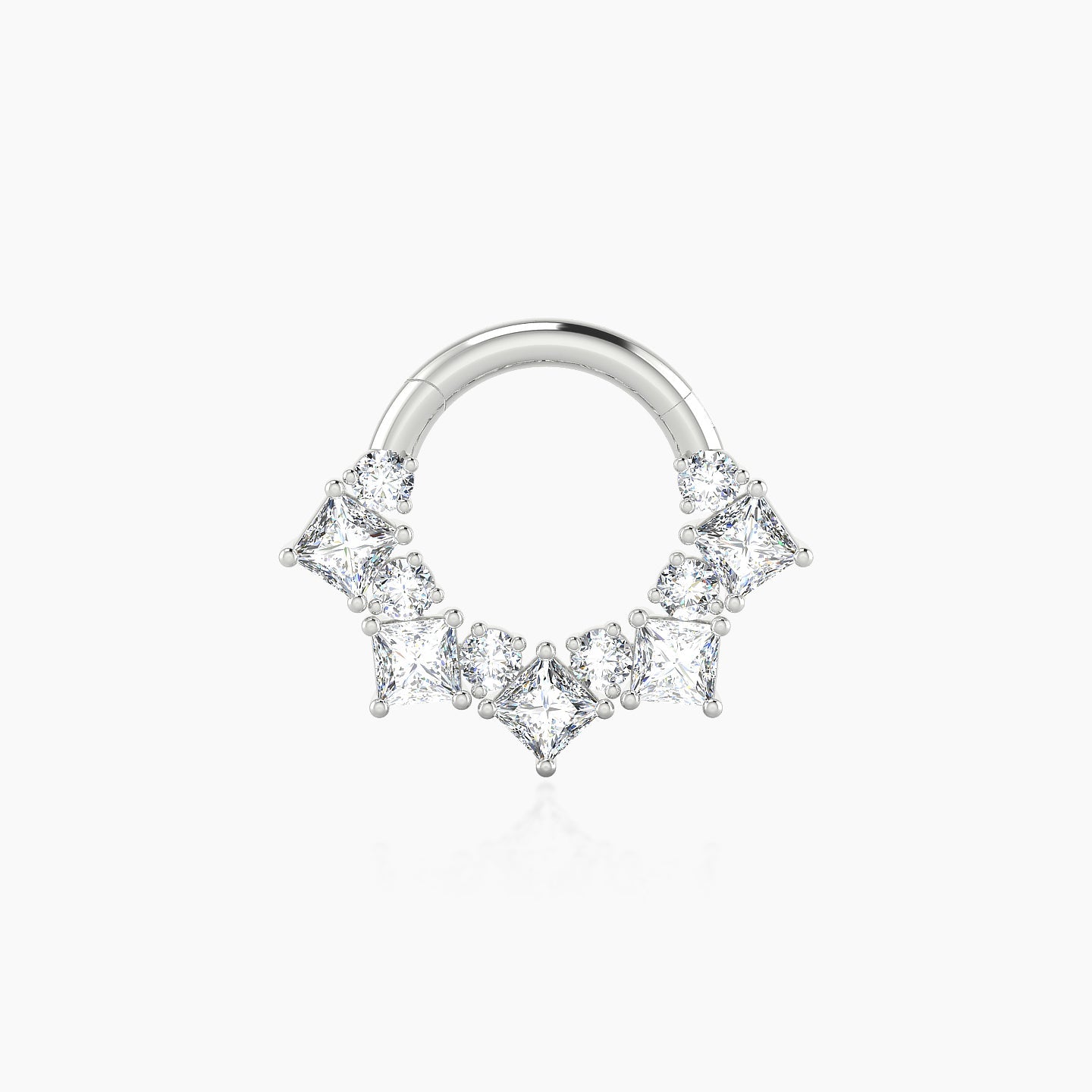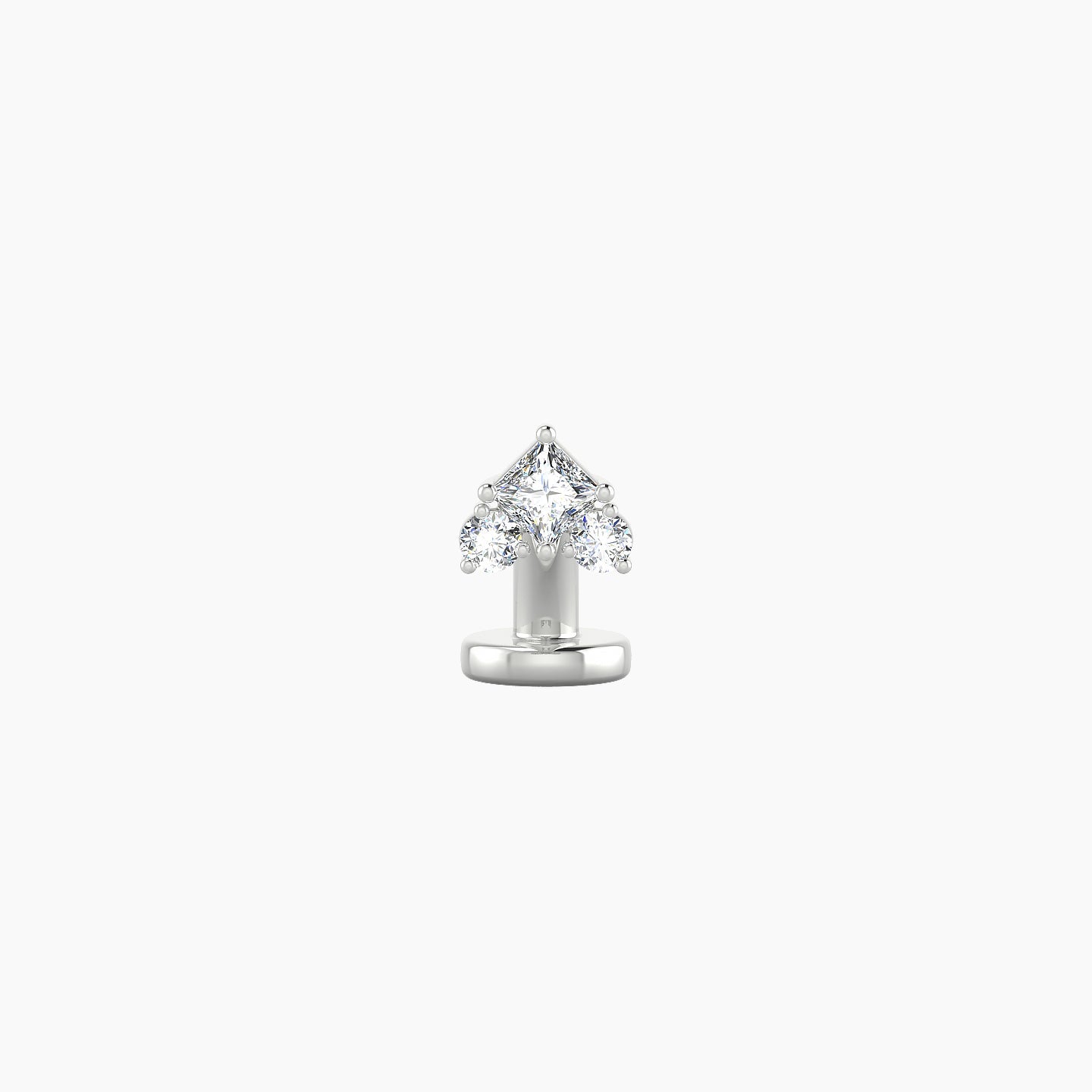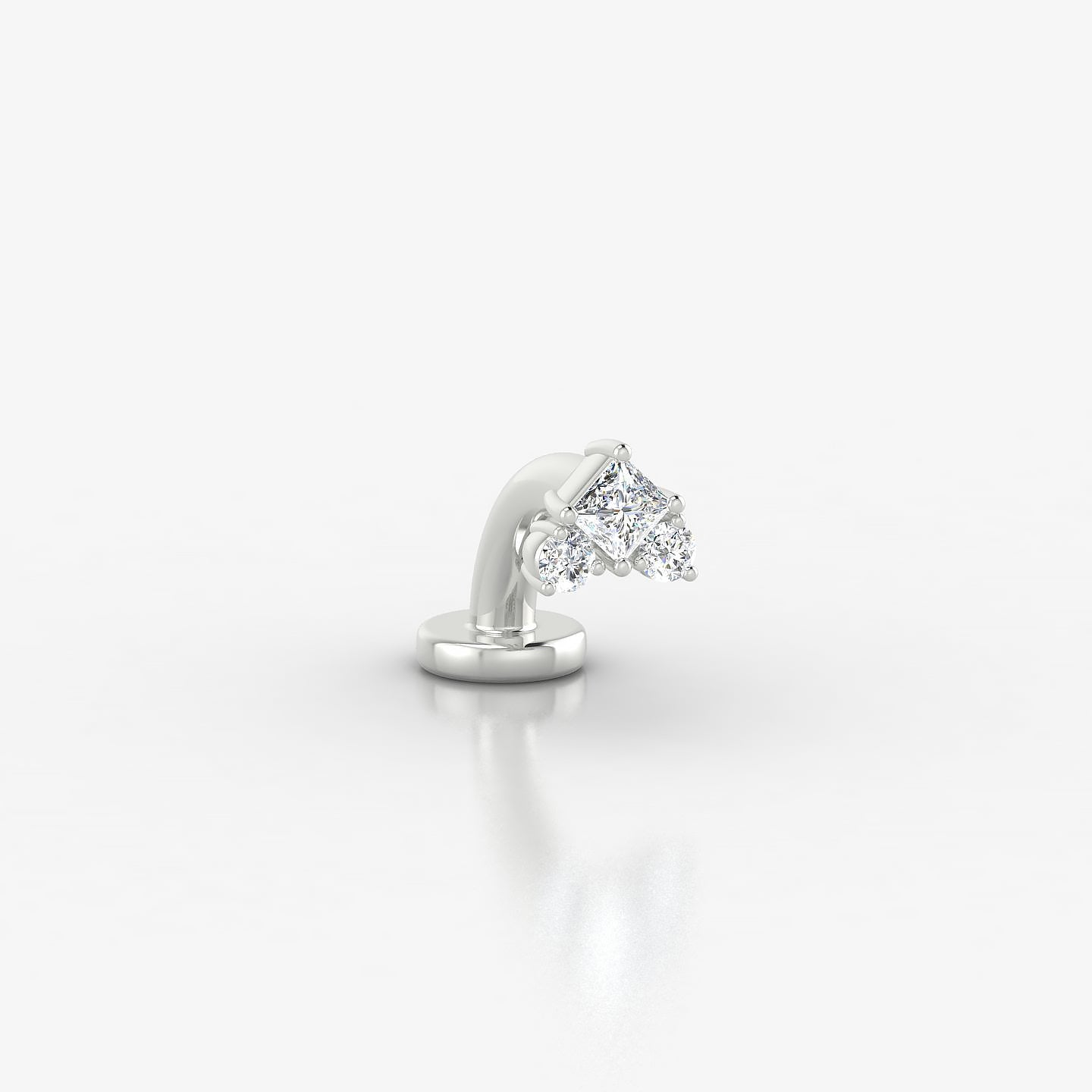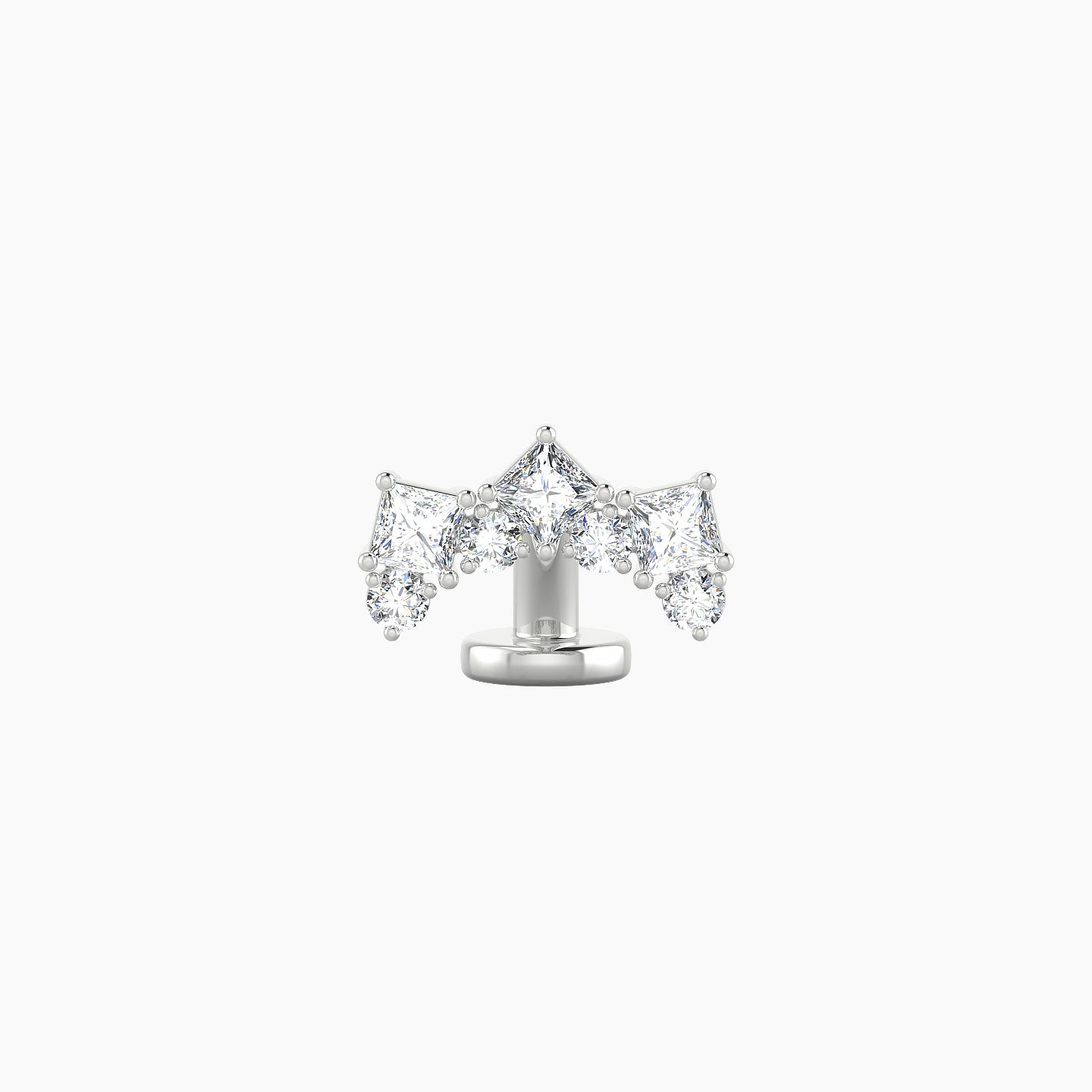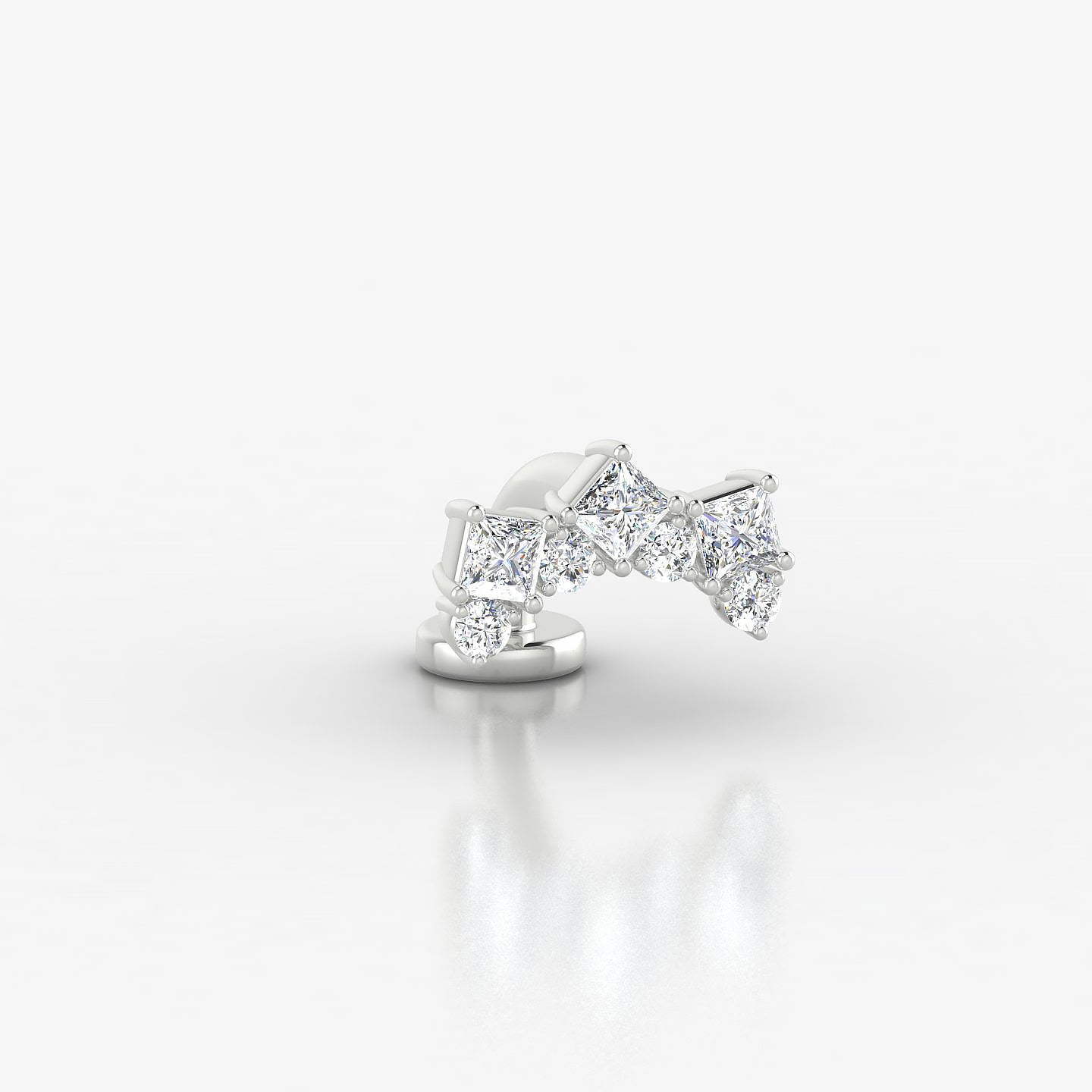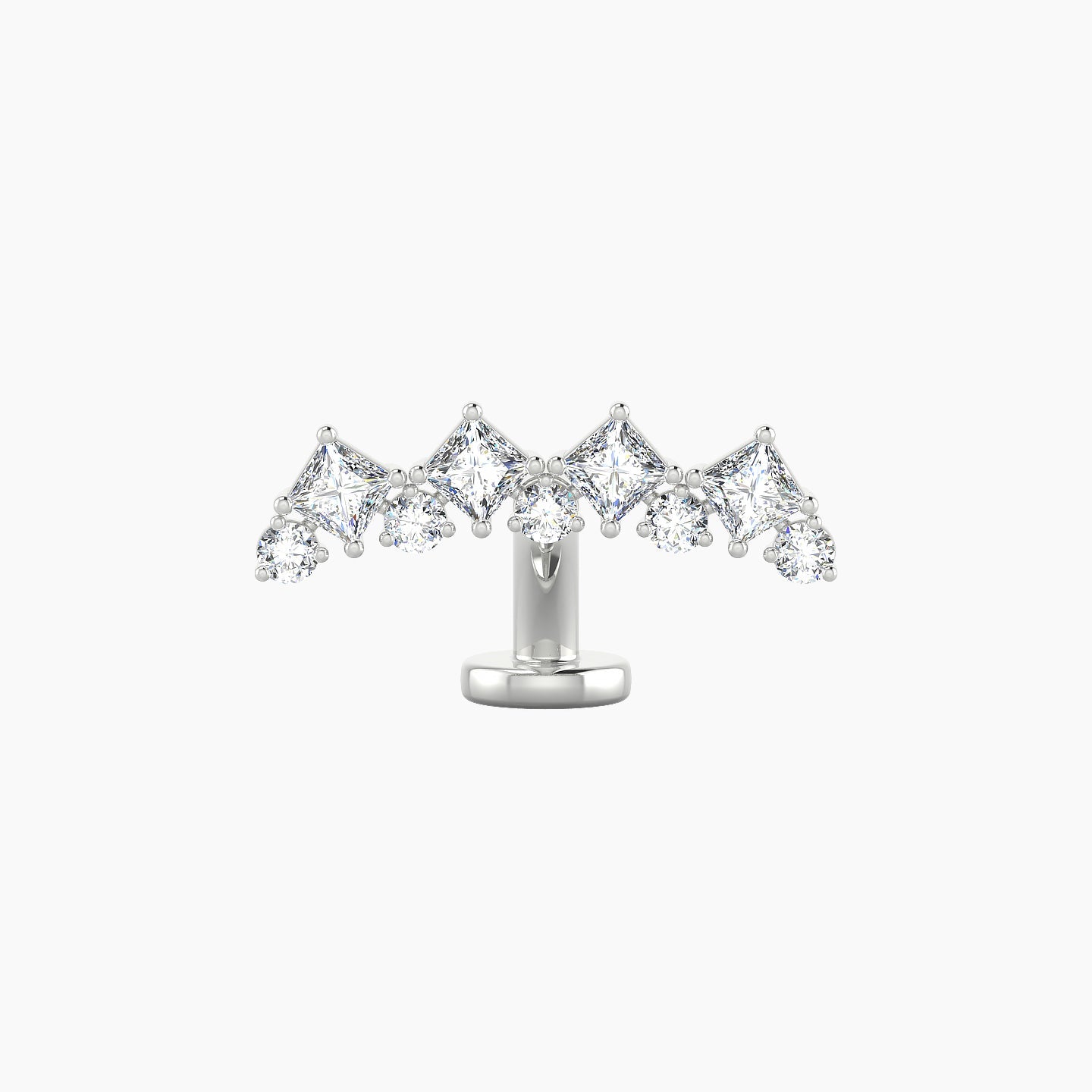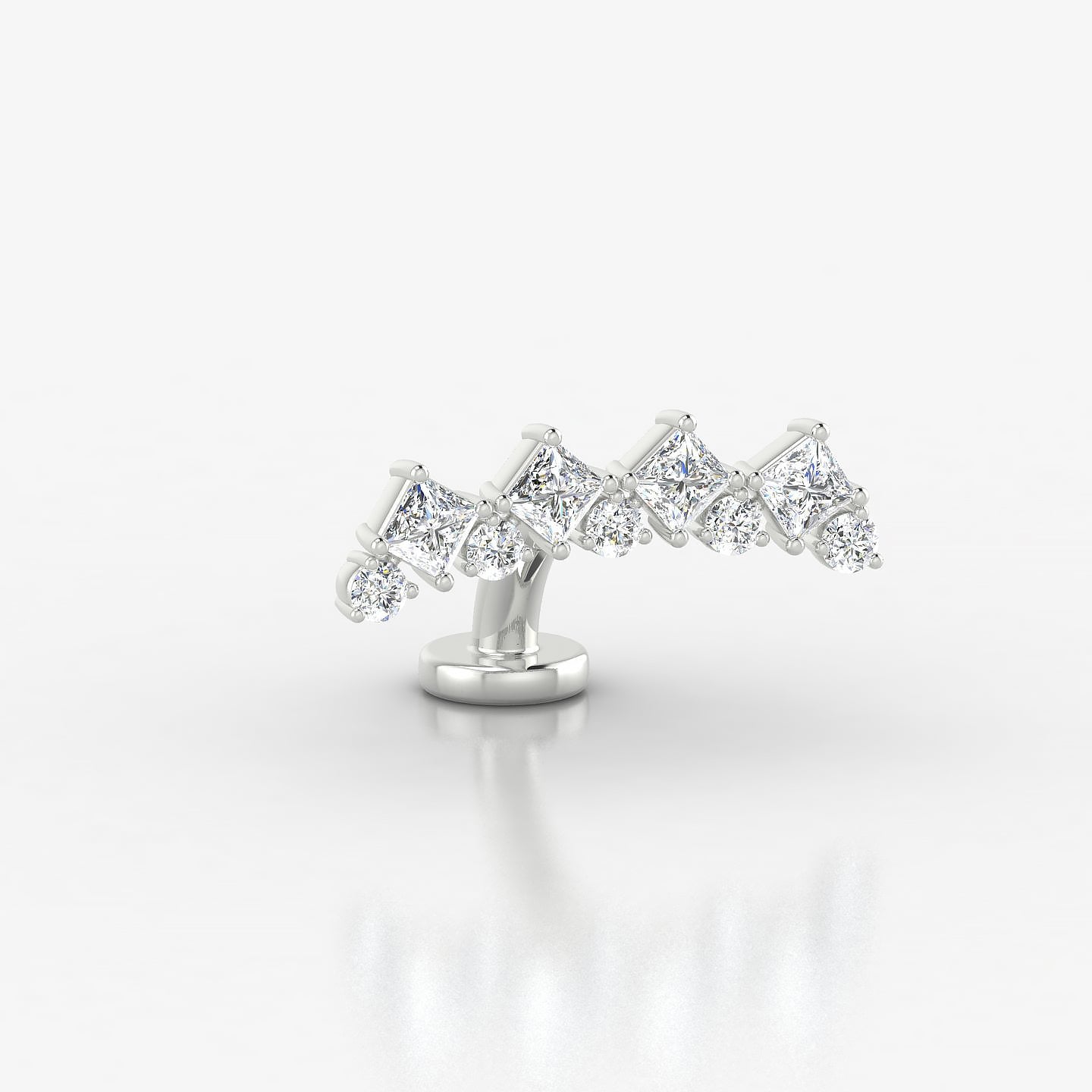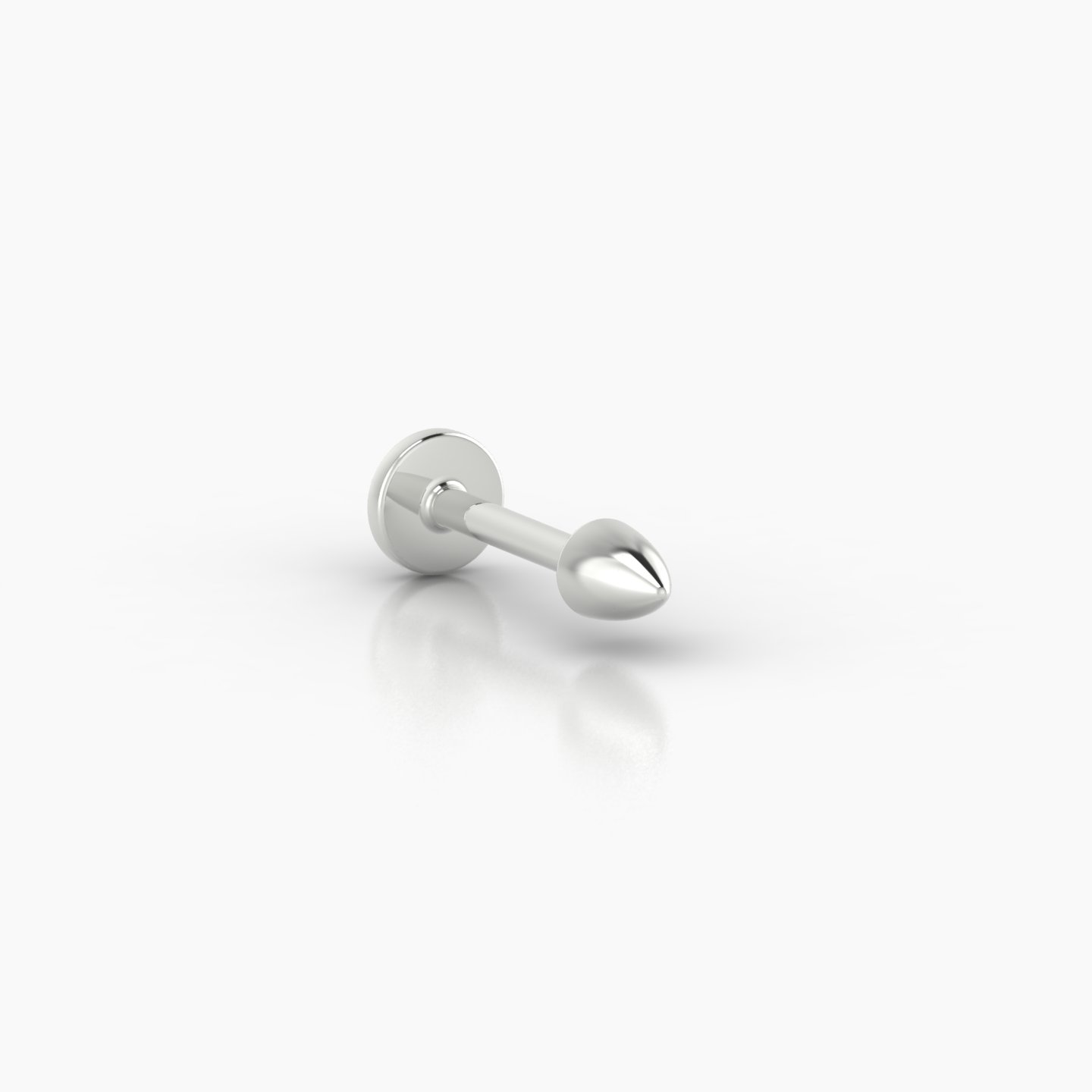Education
PAIN LEVELS OF EAR PIERCINGS
In this comprehensive guide to ear piercing pain levels, you will find all the necessary information to best prepare yourself and care for your piercing after the procedure. The goal is to minimize the pain experienced during the piercing process and throughout the healing period.
Before you can fully enjoy the beauty of your future diamond piercing, discover the specifics of each pierced area and adjust your expectations and aftercare accordingly.
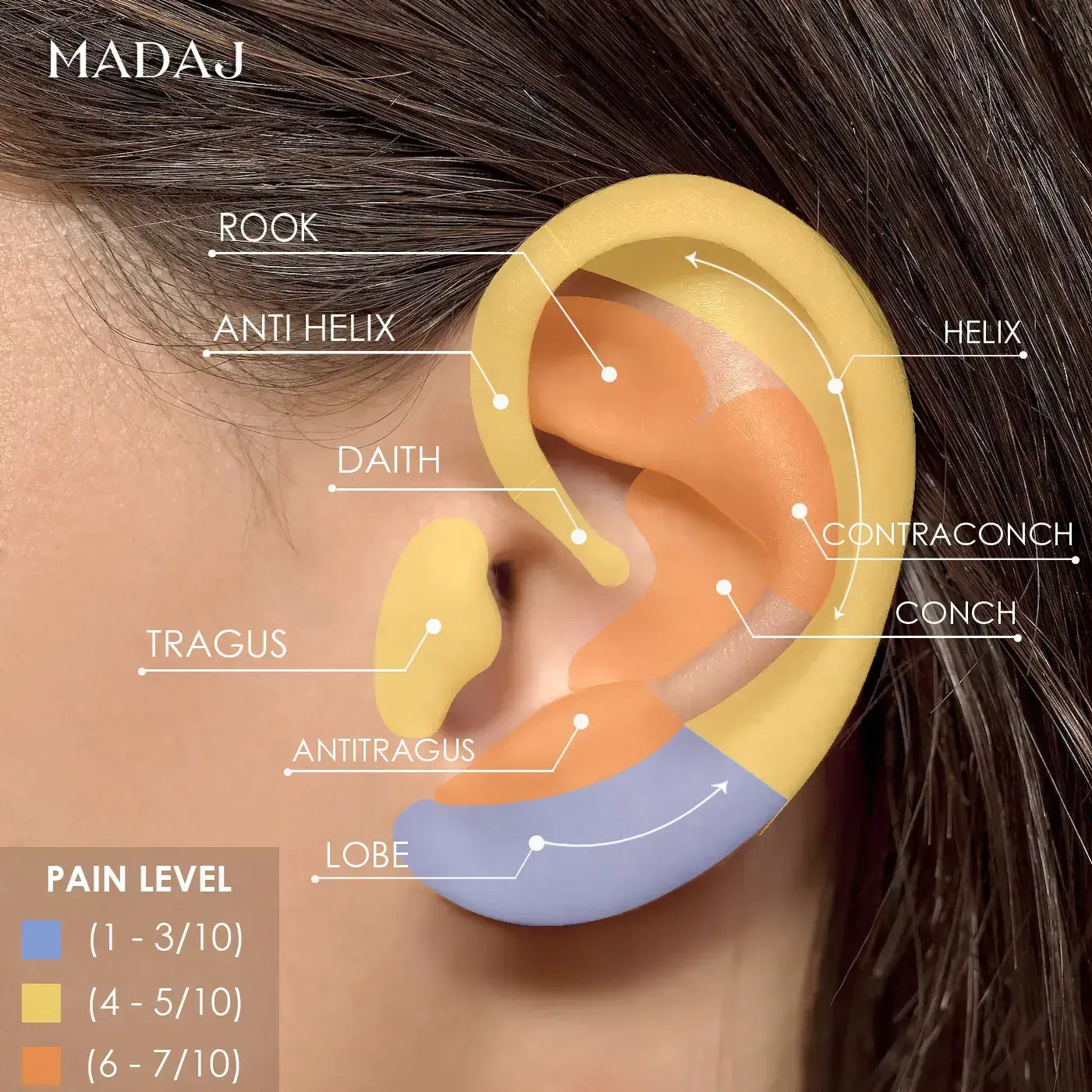
PAIN SCALE OF EAR PIERCINGS
At MADAJ Piercings, we have rated pain level ear piercings on their location on a scale of 1 to 10:
- 1 to 3: Mild
- 4 and 5: Moderate
- 6 and 7: Noticeable
- 8 to 10: Intense

ANTITRAGUS PIERCING PAIN LEVEL
Pain Level of Antitragus Piercing: (6/10)
Located opposite the tragus, this area has thicker cartilage than some other areas like the helix, which can increase the pain. However, the peak of pain experienced lasts only a few seconds during the piercing.
There are solutions to minimize pain during antitragus piercing, such as :
- The use of lidocaine-based numbing cream (EMLA or generics).
This cream is available in pharmacies by prescription.
It is recommended to apply it between 30 minutes to 1 hour before piercing. - Stay hydrated before and after the piercing.
- Avoid stressing.

CONCH PIERCING PAIN LEVEL
Pain Level of Conch Piercing: (7/10)
The conch piercing, which penetrates deep into the cartilage at the center of the ear, is often considered one of the most painful due to the thickness of the cartilage.
Note that the peak of pain experienced lasts only a few seconds, during the piercing process.
Advices to reduce pain during piercing process:
- To minimize pain during conch piercing, you can use lidocaine-based numbing cream (EMLA or generics).
This cream is available in pharmacies by prescription.
It is recommended to apply it between 30 minutes to 1 hour on the conch area before piercing. - Stay hydrated.
- Be relax, avoid stressing.

CONTRACONCH PIERCING PAIN LEVEL
Pain Level of Contraconch Piercing: (7/10)
Similar to the conch in terms of location and type of cartilage, the contraconch is also rated as quite painful for the same reasons.
The peak of pain is only a few seconds during the piercing.
However, it is important to remember that the pain experienced during the piercing process is unique to each individual!
How can I reduce the pain experienced during my contraconch piercing?
- To reduce pain during contraconch piercing, use lidocaine-based numbing cream (EMLA or generics).
You can buy this cream in pharmacies by medical prescription.
It is recommended to apply the cream between 30 minutes to 1 hour before the piercing.

DAITH PIERCING PAIN LEVEL
Pain Level of Daith Piercing: (5/10)
This piercing is done in a part of the cartilage that is thick and difficult to pierce, which can make the process quite painful.
The Daith piercing process causes a moderate painful and the peak of pain experienced lasts only a few seconds!
Note that the pain experienced during the piercing process is unique to each individual.
Reduce the pain during daith piercing procedure:
- Consider getting a prescription from your doctor for lidocaine-based numbing cream (EMLA or generic) to minimize the pain.
Apply it between 30 minutes to 1 hour before to pierce your daith. - Avoid stressing, relax, and come with a smile!
- Stay hydrated before the piercing.
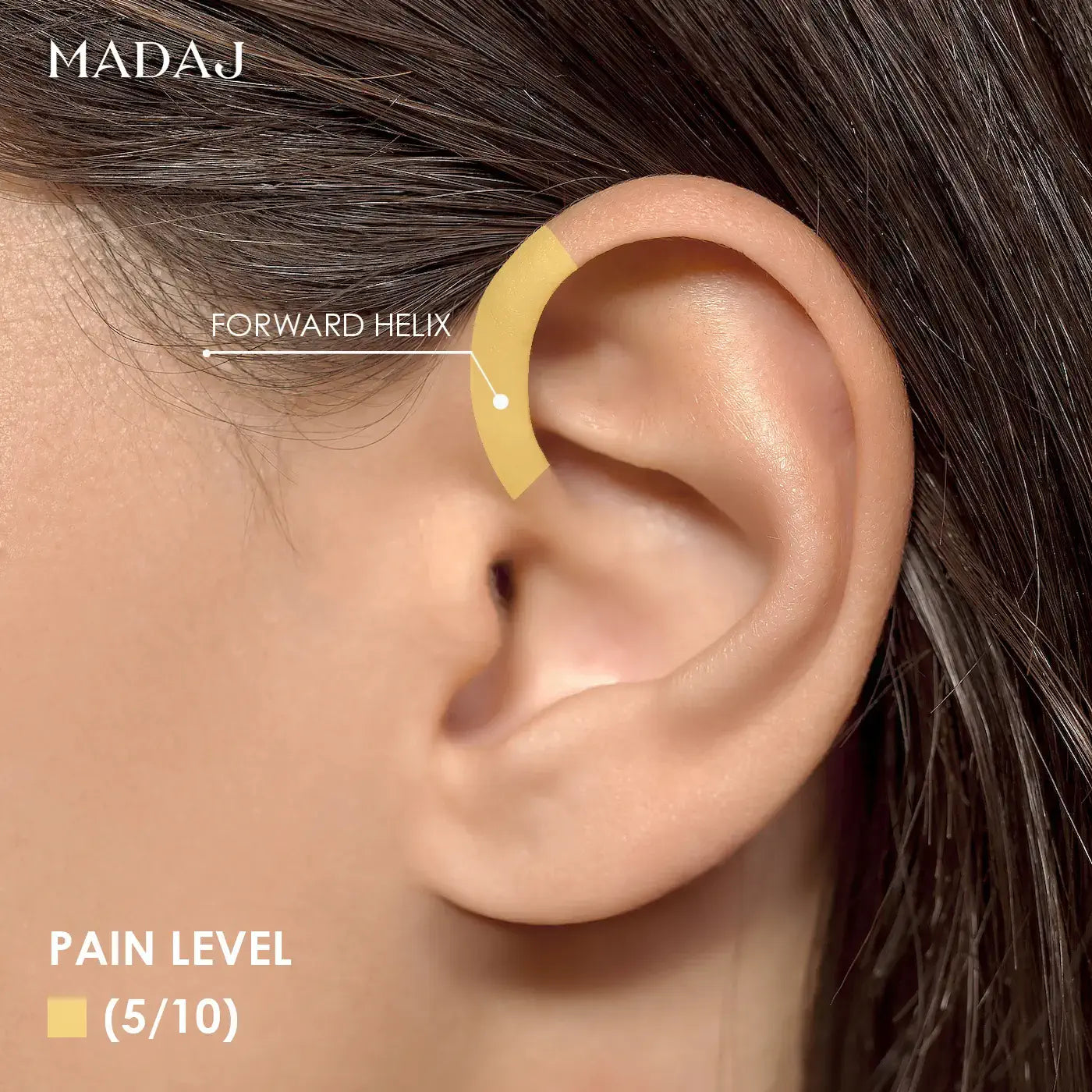
FORWARD HELIX PIERCING PAIN LEVEL
Pain Level of the Forward Helix Piercing: (5/10)
Cartilage is less flexible than the flesh of the ear, which can cause moderate pain during the forward helix piercing procedure.
However, the peak of pain experienced during cartilage piercing lasts only a few seconds and the pain is less intense than that of a conch or contraconch piercing.
How to minimize the pain experienced during the forward helix piercing?
- Use of lidocaine-based numbing cream (EMLA or generics).
This cream is available in pharmacies by prescription.
It is recommended to apply it on the forward helix area between 30 minutes to 1 hour before piercing. - Stay hydrated before and after the piercing
- Don't be stressed.

HELIX PIERCING PAIN LEVEL
Pain Level of Helix Piercing: (4/10)
Located on the outer edge of the ear, helix piercing passes through thin cartilage, causing moderate pain.
Remember that the pain experienced during the helix piercing process is unique to each individual.
Advices to reduce pain during helix piercing process:
- To minimize pain during helix piercing, use of lidocaine-based numbing cream (EMLA or generics).
This cream is available in pharmacies by medical prescription.
It is recommended to apply it on the area of the helix between 30 minutes to 1 hour before piercing. - Avoid stressing, relax.
- Stay hydrated before and after the piercing; it’s very important.
- Consider having a light snack a few hours before.

LOBE PIERCING PAIN LEVEL
Pain Level of Lobe Piercing: (2/10)
Lobe piercing is the least painful of ear piercings because the area is primarily made up of soft tissue with few nerve endings.
How to reduce the pain experienced during the lobe piercing?
- There are solutions to reduce pain during lobe piercing, such as the use of lidocaine-based numbing cream (EMLA or generics).
This cream is available in pharmacies by prescription.
It is recommended to apply it between 30 minutes to 1 hour before piercing. - Stay hydrated.
- Avoid stressing.
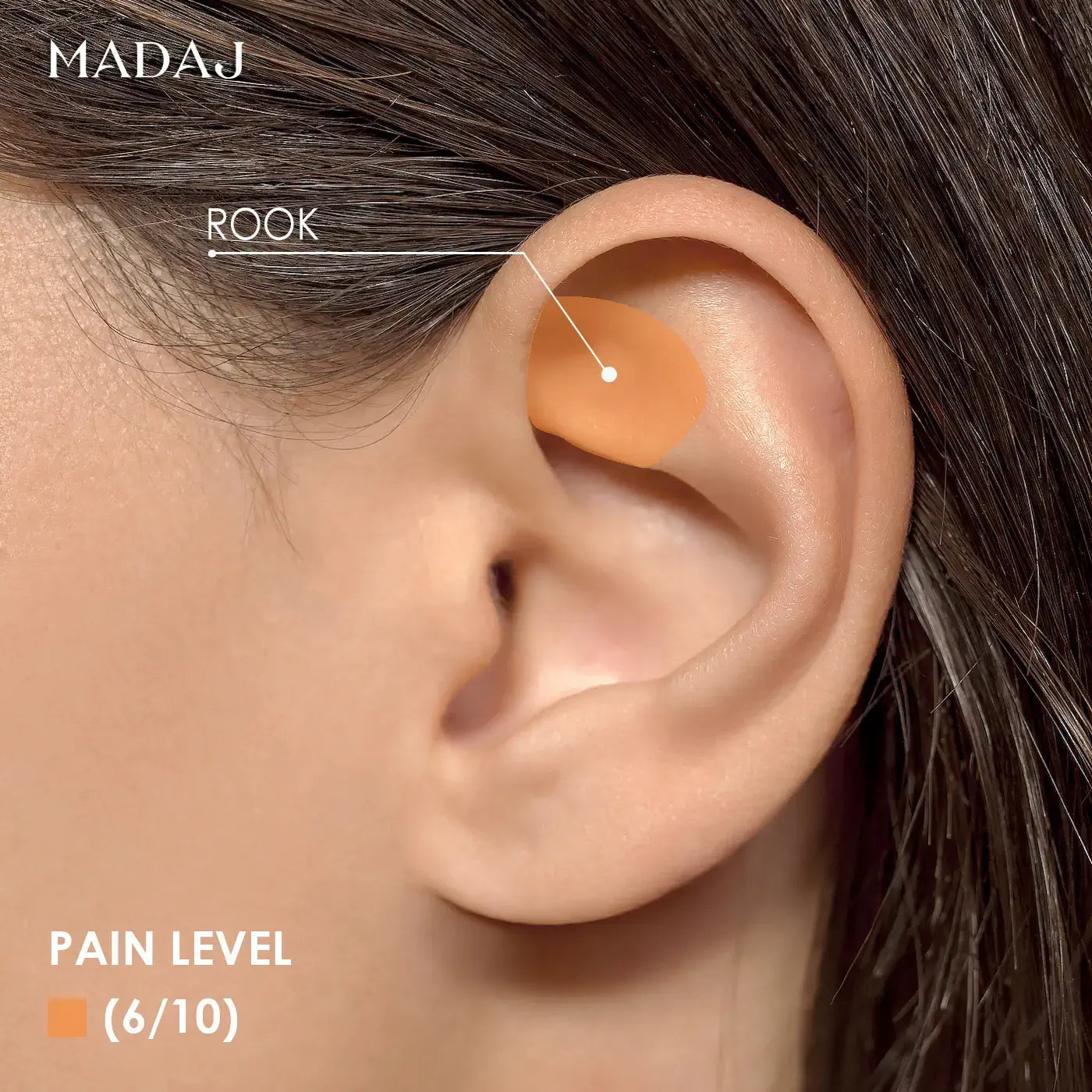
ROOK PIERCING PAIN LEVEL
Pain Level of Rook Piercing: (6/10)
The rook, which passes through the inner upper rim of the ear cartilage, is known to be quite painful due to the thickness of the cartilage.
The pain experienced during the piercing process is unique to each individual and the peak of pain experienced during cartilage piercing lasts only a few seconds.
How to reduce the pain experienced during my rook piercing?
- There are solutions to minimize pain during rook piercing, such as the use of lidocaine-based numbing cream (EMLA or generics).
This cream is available in pharmacies by prescription.
It is recommended to apply it between 30 minutes to 1 hour before piercing.
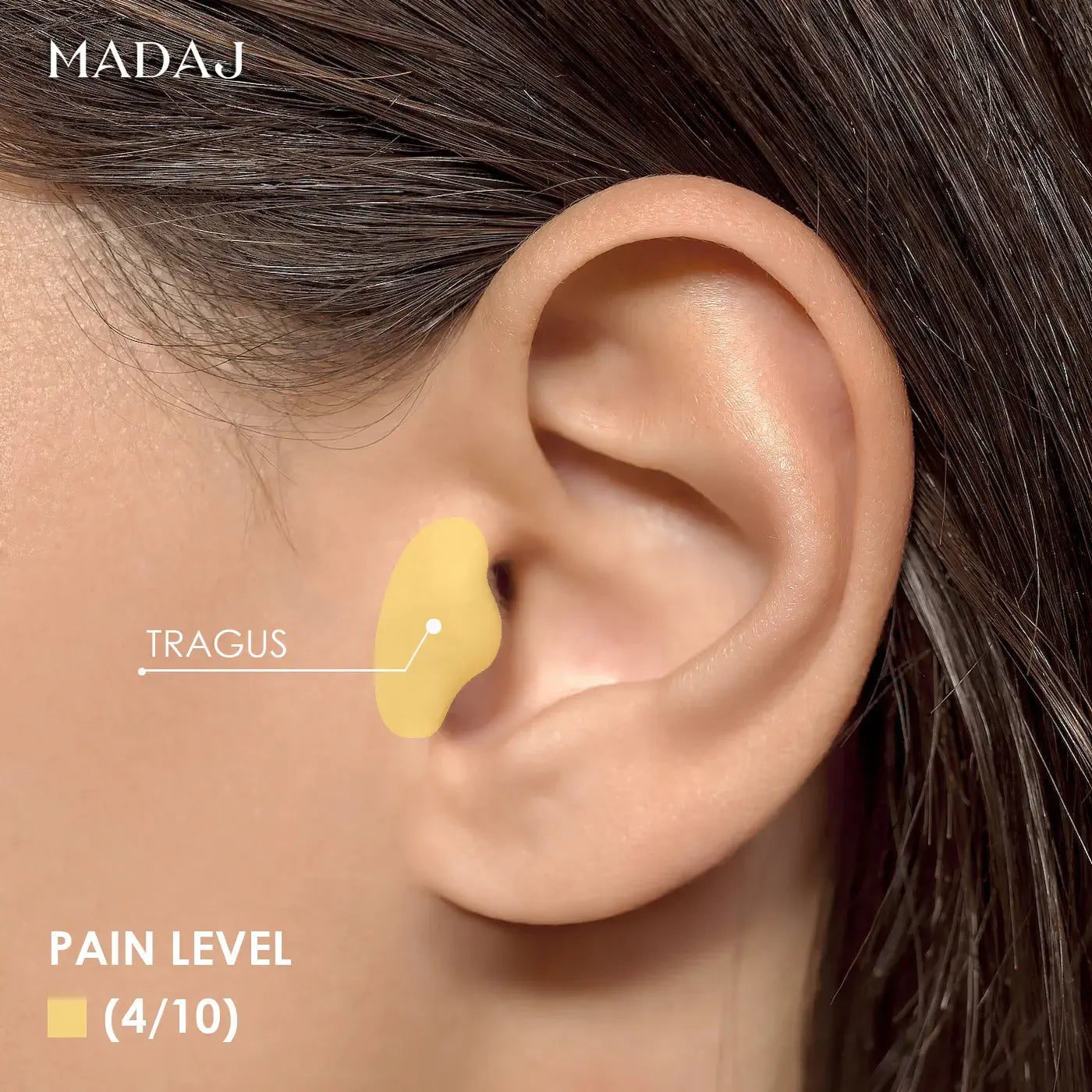
TRAGUS PIERCING PAIN LEVEL
Pain Level of Tragus Piercing: (4/10)
The tragus, located at the entrance of the ear canal, has relatively thin cartilage, making the piercing slightly painful.
The pain of a tragus piercing is generally considered mild to moderate.
Advices to reduce pain during piercing process:
- To minimize pain during tragus piercing, use lidocaine-based numbing cream (EMLA or generics).
This cream is available in pharmacies by prescription.
It is recommended to apply it on the tragus piercing area between 30 minutes to 1 hour before piercing. - Avoid stressing, relax, and come with a smile!
- Stay hydrated before the piercing; it’s very important.

RANKING OF EAR PIERCINGS FROM MOST TO LEAST PAINFUL
To help you choose your next piercing, MADAJ Piercings offers a ranking of ear piercings from most to least painful:
- ContraConch Piercing and Conch Piercing
- Rook Piercing and Antitragus Piercing
- Forward Helix Piercing and Daith Piercing
- Helix Piercing and Tragus Piercing
- Lobe Piercing
FAQ
EAR PIERCING PAIN
GENERAL
The pain associated with an ear piercing varies from person to person, but generally, cartilage piercings such as conch, contraconch, or antitragus tend to be more painful than lobe piercings. This is due to the density and structure of cartilage. However, some individuals may find lobe piercings slightly uncomfortable, while others find cartilage piercings more tolerable. Pain tolerance varies from person to person.
The least painful piercing is usually the lobe piercing. Since the earlobe consists of soft tissue, it tends to cause less discomfort compared to cartilage piercings. However, individual pain tolerance can vary, and some may still experience mild discomfort during the procedure.
No, the pain varies depending on the type of piercing and the location. Cartilage piercings, such as tragus, helix, or daith, are often more painful because cartilage is denser and less flexible than the soft tissue of the earlobe. However, a lobe piercing is typically less painful because the earlobe consists mainly of soft tissue. Pain perception also depends on individual pain tolerance.
Yes, pain levels vary significantly from one person to another. Some individuals have a higher pain tolerance and may only feel mild discomfort during the procedure and healing process, while others may find the experience more intense. Factors such as stress levels, individual pain tolerance, and the location of the piercing can influence the perception of pain.
Cartilage piercings, such as tragus or helix, may be more painful than lobe piercings because cartilage is a denser, less flexible tissue. However, this pain is typically brief and fades quickly after the procedure. Proper aftercare can also help minimize discomfort during the healing process.
The healing process for an ear piercing occurs in several stages:
- Initial phase (1 to 2 weeks): After the piercing, you may experience sharp pain, tenderness, and slight swelling. This phase is the most painful.
- Early healing phase (2 to 6 weeks): The pain begins to subside, but you may still experience mild discomfort.
- Final healing phase (2 to 6 months): The pain should mostly disappear, but occasional sensitivity may persist, especially if the piercing is touched or irritated.
Healing times vary depending on the type of piercing, and proper care can speed up the process.
BEFORE THE PIERCING
While the pain of a piercing is unavoidable, there are a few things you can do to make the experience more comfortable:
- Relax and breathe deeply to help reduce anxiety, which can increase the perception of pain.
- Avoid alcohol or pain relievers before the procedure, as they may thin your blood and increase the risk of excessive bleeding.
- Request numbing cream: Some piercers offer a local anesthetic to numb the area before the piercing.
- Eat something light beforehand to prevent dizziness or fainting during the procedure.
If you're using numbing cream, it is generally recommended to apply it about 1 hour before the piercing procedure. Make sure to follow the instructions on the product carefully to ensure it has enough time to take effect. However, not all piercers offer this service, so it's best to ask in advance.
Numbing creams for piercings can be purchased online, at pharmacies, or in stores that specialize in body jewelry. Some professional piercing studios may also sell anesthetic creams. Be sure to choose a reputable product that is safe for skin use and consult your piercer to ensure it is suitable for the type of piercing you're planning.
AFTER THE PIERCING
It is completely normal to experience pain or tenderness a few days after a piercing. This pain is usually the result of inflammation as the healing process begins. It is important to follow proper aftercare to reduce this pain, such as avoiding touching the piercing with dirty hands and not rotating the jewelry. If the pain persists unusually, it may be a good idea to consult a professional to rule out any infection.
The pain from an ear piercing varies depending on the type of piercing and the person, but typically, the sharp pain associated with the piercing procedure subsides quickly, usually within a few hours to a day. However, mild sensitivity or discomfort may persist for several days or even weeks while the piercing heals. Cartilage piercings generally take longer to heal and may cause mild discomfort for a longer period compared to lobe piercings.
To reduce pain after an ear piercing, consider following these simple steps:
- Apply cold compresses for 10-15 minutes to reduce swelling and ease pain.
- Take over-the-counter pain relievers such as ibuprofen to alleviate pain and reduce inflammation, according to your doctor's recommendations.
- Avoid touching or twisting the jewelry to prevent further irritation.
- Maintain good hygiene around the piercing by cleaning it gently with a saline solution or an antiseptic recommended by your piercer.
A mild amount of pain or tenderness a week after the piercing is normal, especially during the initial healing phase. However, if the pain becomes severe, persists beyond a few weeks, or is accompanied by excessive redness, pus, or warmth around the piercing, it is important to consult a professional to check for any infection.
Yes, infections can occur if proper aftercare is not followed, which can lead to increased pain, swelling, redness, and pus. To prevent infections, it is crucial to maintain excellent hygiene by regularly cleaning the piercing with recommended antiseptic solutions, avoiding touching the piercing with unwashed hands, and not rotating the jewelry during the healing process.
If the pain becomes unbearable or is accompanied by signs of infection (such as significant redness, warmth, pus, or fever), it is important to consult a professional. Early consultation can help prevent complications and ensure proper healing.
A dull pain or mild discomfort around the piercing can be normal during the healing process as the body reacts to the insertion of a foreign object. However, this pain should decrease over time. If the pain persists or becomes severe, it may indicate an issue that requires medical attention.
UNDERSTANDING PAIN & HEALING OF EAR PIERCINGS
These piercings are generally more painful due to the thickness of the cartilage and the lack of blood flow, which not only makes the piercing more painful but also prolongs the healing time. Moreover, the tension exerted by the piercings can increase the sensation of pain during the healing period.
It is crucial to follow piercing aftercare to minimize risks and pain to help you, we suggest consulting our guide on the healing time for ear piercings.
With MADAJ Piercings, you can make your choice with confidence, knowing that our products are designed with the utmost care to ensure both quality and safety.
For any further questions, do not hesitate to contact us by email at contact@madajpiercings.com or through our contact form on our website. Our team is fully available to provide you with all the necessary assistance.
SHOP

